S E ASIA BOX PORT
RANKING & TERMINALS
GLOBAL CONTAINER PROSPECTS
PORT MASTER CONCESSIONS
SIMULATION: REPRODUCING REALITY

JUNE 2023 VOL 1023 ISSUE 5 portstrategy.com Coastlink Conference Review | Pacific North Plans | STS Remote Control | Era of the eRTG






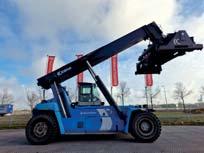
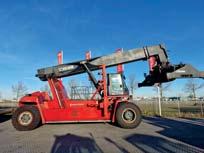
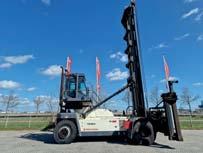

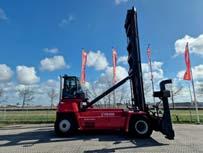

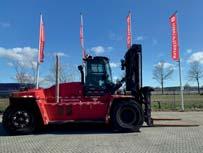

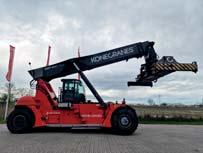

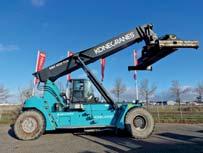
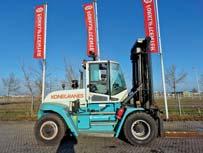

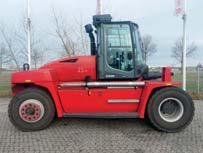
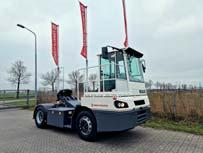

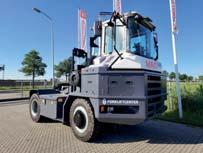
VIEWPOINT
MIKE MUNDY
Growth Prospects –Technical Advances –See PS on Stand J42 at TOC

Drewry Maritime Research has provided an updated perspective on Southeast Asia containerport and terminal performance in 2022. The terminal focus is new and serves to provide a wider view of one of the world’s most dynamic container environments. Further, both the port and terminal data are looked at in the context of a/ all traffic and b/ traffic excluding transshipment and domestic container movements. Breaking down the data in this way will undoubtedly prove of service to port planners and a competitive reference point when the various ports and terminals compare themselves to their peers, not just in the context of total volume but also the annual increase in volume, where the port of Manila has excelled in 2022 – p21.
Global container market prospects are assessed going forward in the article Brace for a Rough Ride - p25. Written by analyst Andrew Penfold, the article, as the title suggests, sees ongoing problems in the shipping market which will have negative consequences for ports and terminals. The nub of the problem foreseen is a collapse in shipping line revenues in turn generating problems regarding investment at the port and terminal level, notably to facilitate the entrance into service of a greater number of Ultra Large Container Vessels as well as the cascading down of higher capacity vessels into secondary trade lanes. The possibility of a greater emphasis on the use of line-owned terminals is also raised – p25.
This edition also sees the discussion Port Strategy has been pioneering on Port Master Concessions extended. As the title suggests, Frameworks for Analysis, the article, authored by Neil Davidson and Erik Wehl of the WAPPP Port Chapter, provides two simple frameworks that can help evaluate a Port Master Concession opportunity – p29.
The technical content of this issue is additionally worthy of note. The technology behind the remote operation of ship-to-shore container cranes is examined in-depth along with recent market activity – p45. We also take a look at simulation systems for cargo handling where there are a number of notable advances – the roll out of systems for training operators on a wider range of cargo handling plant, the adoption of virtual reality and simulation training for new cargo types such as wind turbines in tandem lift mode – p51. The latest developments with eRTGs are similarly examined -p55.
If you are attending the Terminal Operations Conference in Amsterdam then please come and see us on Stand J42 in the Exhibition area.
The international magazine for senior port & terminal executives
EDITORIAL & CONTENT
Editorial Director: Mike Mundy mmundy@portstrategy.com
Features Editor: A J Keyes keyesj186@gmail.com
Consultant Editor: AndrewPenfold andypenfold@yahoo.com

Regular Correspondents: Felicity Landon; Stevie Knight; Ben Hackett; Peter de Langen; Charles Haine; AJ Keyes; Andrew Penfold; Oleksandr Gavrylyuk Johan-Paul Verschuure; Phoebe Davison
Production David Blake, Paul Dunnington production@mercatormedia.com
SALES & MARKETING t +44 1329 825335 f +44 1329 550192
Media Sales Manager: Arrate Landera alandera@mercatormedia.com
Marketing marketing@mercatormedia.com
Chief Executive: Andrew Webster awebster@mercatormedia.com
PS magazine is published monthly by Mercator Media Limited, Spinnaker House, Waterside Gardens, Fareham, Hants PO16 8SD UK t +44 1329 825335 f +44 1329 550192 info@mercatormedia.com www.mercatormedia.com
Subscriptions
Subscriptions@mercatormedia.com
Register and subscribe at www.portstrategy.com
1 year’s print subscription £295.00
1 year’s digital subscription with online access £228.50
For Memberships and Corporate/ multi-user subscriptions: corporatesubs@mercatormedia.com
©Mercator Media Limited 2023. ISSN 1740-2638 (print) ISSN 2633-4232 (online). Port Strategy is a trade mark of Mercator Media Ltd. All rights reserved. No part of this magazine can be reproduced without the written consent of Mercator Media Ltd. Registered in England Company Number 2427909. Registered office: c/o Spinnaker House, Waterside Gardens, Fareham, Hampshire, PO16 8SD, UK.
For the latest news and analysis go to www.portstrategy.com JUNE 2023 | 3
Port Strategy will be at the Terminal Operations Conference – Stand J42, do take the opportunity to come and see us – old friends and colleagues and new, do drop by. Mike Mundy, PS’s Editorial Director, will be in attendance so if you have news then please take the opportunity to relay it. Look forward to seeing you! If your not attending, then don’t worry there is plenty of food for thought in this issue spanning news, views, market sector analysis, technical advances and more
PORTSTRATEGY INSIGHT FOR PORT EXECUTIVES
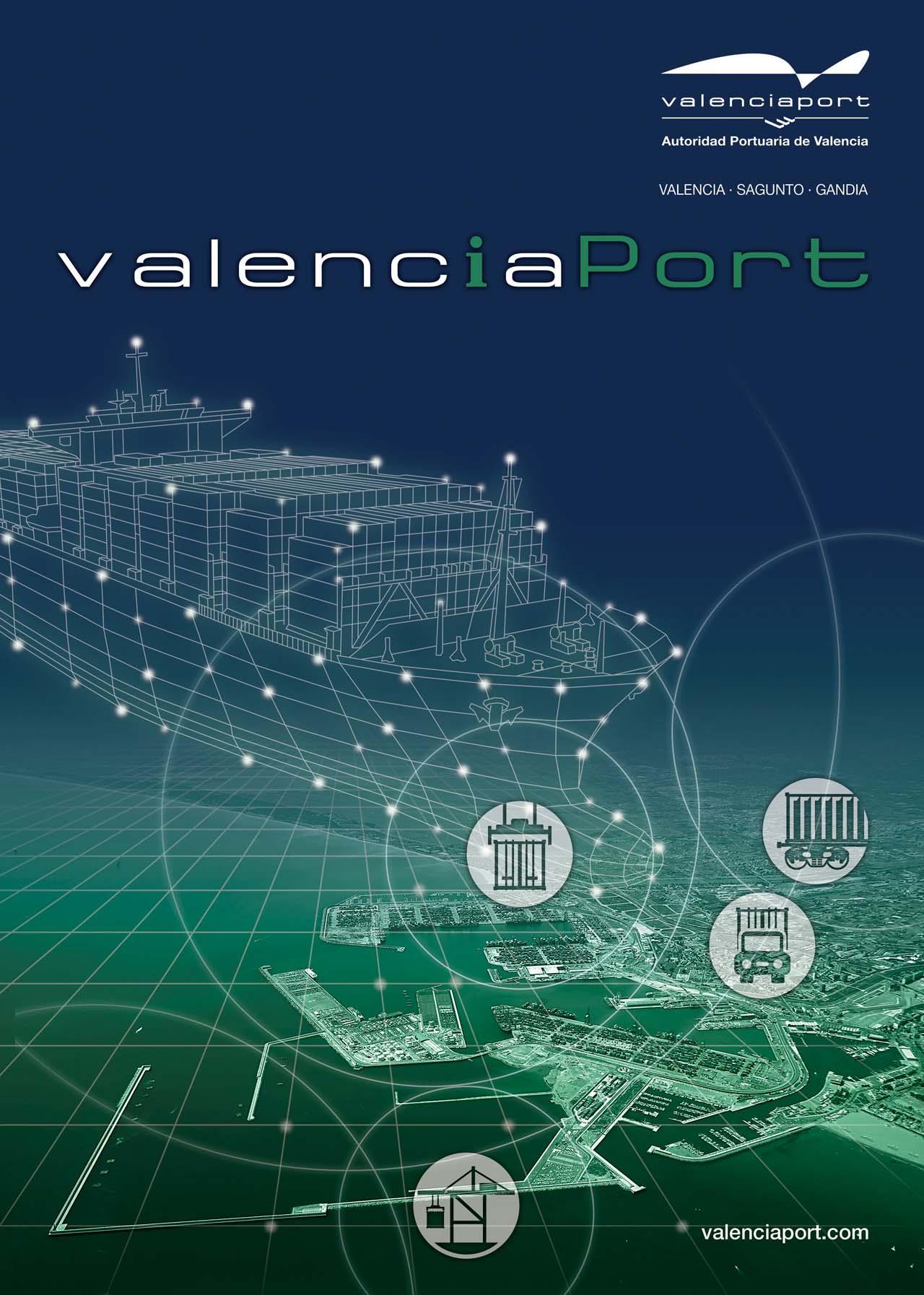





For the latest news and analysis go to www.portstrategy.com JUNE 2023 | 5 Weekly E-News Sign up for FREEat: www.portstrategy.com/enews CONTENTS JUNE 2023 is a proud support of Greenport and GreenPort Congress GreenPort magazine is a business information resource on how best to meet the environmental and CSR demands in marine ports and terminals. Sign up at greenport.com The Congress is a meeting point that provides senior executives with the solutions they require to meet regulatory and operational environmental challenges. Stay in touch at greenport.com Online portstrategy.com 5 Latest news 5 Comment & analysis 5 Industry database 5 Events Social Media links LinkedIn PortStrategy portstrategy YouTube On the cover The growth in vessel size and the need to provide a solution which maintains cargo handling efficiency was the driver behind Siemens’ development of its Simocrane Remote Control Operation System (RCOS). Siemens released an updated version - Remote Control Solution Version 6.1 – at the end of last month which includes diverse new features. NEWS FEATURE ARTICLES REGULARS 18 The New Yorker Jones Act, Infrastructure Links? 18 The Analyst World Bank Performance Index 19 The Economist The Elusive Recession 19 The Strategist Two Reports not to be Missed 21 S E Asia Box Port Ranking Not just ports but also a terminal ranking – who are the winners and losers? 25 Brace for a Rough Ride Container Market Prospects 29 Port Master Concessions Assessing an Opportunity 32 The ‘New Normal’ Coastlink Conference Review 37 Russia’s Dredge Capacity Ambitious Newbuilding Programme 38 Who is Making Hay? Pacific North Plans 41 MPV Demand & Supply Prospects Assessed 45 Geing More Remote STS Remote Control Activity 51 Reproducing Reality Simulation Options Build 55 Era of the eRTG Widening Appeal 58 ESG Goals Assessed New Thinking 61 Digital Twin & 5G in Hungary Driving Intermodal Eiciency 66 Postscript Boxes for car transport JUNE 2023 VOL1023ISSUEportstrategy.com CoastlinkConferenceReviewPacificNorthPlansSTSRemoteControlEraoftheeRTG GLOBAL CONTAINER PROSPECTS S E ASIA BOX PORT RANKING & TERMINALS PORT MASTER CONCESSIONS SIMULATION: REPRODUCING REALITY 17 Controversy Building? Time for a rethink in Tanzania 17 New Green Corridor Singapore-San Pedro Link 19 Roberts Bank 2 Finally Approved 19 Malta freeport Expansion Agreed 10 New Development Approach Bagamoyo Moves Again 10 Cambodia Box Terminal Construction Commences 13 Cross Channel Corridor Preparations Commence 13 Shared Data Deal California’s Ports Link-Up 15 VPA North Berth Konecranes Ramp-Up 15 Valencia Hydrogen Power Ro-ro Tractor Trials 17 NASH Scopes Out VTS Port of London Upgrade 17 New RTGs in Panama PSA Terminal Equipment
MOVING MORE


































































SANY PORT MACHINERY –FIRST-CLASS PERFORMANCE, EFFICIENCY AND DURABILITY



















+ More than 5,000 port machines sold in 13 years

+ Innovative manufacturing processes incorporating trusted European components












































































































































+ Continuous development of alternative drive systems to reduce fuel consumption






+ Intuitive and comfortable to operate, enhanced concentration for more safety



























REACH STACKER FUEL-SAVING AND STABLE










MATERIAL HANDLER STRONG AND EFFICIENT
HEAVY-DUTY FORKLIFT ROBUST AND DURABLE














EMPTY CONTAINER HANDLER FAST AND COMFORTABLE HARBOUR CRANE CUSTOMISED AND AUTOMATIC






PORT MACHINERY FROM SANY www.sanyeurope.com
VISIT US AT TOC EUROPE ROTTERDAM AHOY STAND F12 13. - 15.06. 2023
TPA TIME FOR A RETHINK ON DAR CONCESSION?
Singapore-San Pedro Green Corridor
The San Pedro ports of Los Angeles and Long Beach and Maritime and Port Authority of Singapore (MPA) are establishing a green and digital shipping corridor between the US West Coast and Singapore.
The Tanzania Port Authority (TPA) has stated repeatedly that it wants a terminal operator that can deliver an improved performance compared to its previous experience at its Tanzania International Container Terminal (TICTS), but the question is will it get this via a selective bidding process?
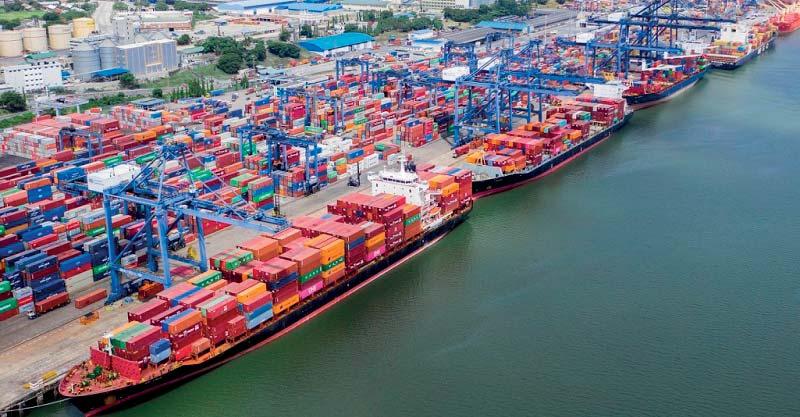
Africa Intelligence reports that the TPA has embarked upon what amounts to a selective bidding process for the Dar es Salaam Container Terminal concession with just three companies in the frame for the opportunity as opposed to all eligible bidders worldwide which can be accessed via a full international tender. The latter course of action is seen as the preferred course of action by such eminent institutions as the World Bank. International Finance Corp and European Bank for Reconstruction and
Gothenburg Deal
The Port of Gothenburg, Sweden has confirmed it is acquiring shares in the new Västvind wind farm located in the municipalities of Kungälv and Öckerö. If approved, construction will commence in 2027 and be completed in 2029, with installed capacity of 1 GW and the potential to generate up to 4.5 TWh of renewable electricity every year. Project developer, Eolus, will retain the remaining 95 per cent shares.
Development. It is also the most employed path to offer such a concession – by a distance.
Further, a restricted bidding process, particularly in the African environment, enlarges the scope for accusations of corruption. Anything that stands outside the norm – a bespoke process or specification – is invariably identified as suspicious activity with a commensurate increase regarding the potential for corruption, particulary if any of the parties involved have ‘previous’ in this respect.
Bottom line, a fully transparent international tender process open to all eligible parties, experts agree, is the best path to securing the most efficient operator that will deliver the best result for the terminal’s customers and the country as a whole. Matched against this a more restricted process represents a poor and
Jaxport Lease Offer
The Jacksonville Port Authority (JAXPORT) is seeking proposals for a long-term lease at the Talleyrand Marine Terminal. The site is currently occupied by Southeast Toyota Distributors and JAXPORT has confirmed it will be available in 2025. The area covers 79 acres of paved land, comprising four adjacent parcels at the marine terminal. It has vessel berthing access and on-dock intermodal rail facilities, with links to the CSX andNorfolk Southern networks.
questionable choice as witnessed by the fact that it is a process that is rarely employed.
The three parties known to currently be engaging with the TPA are Adani Ports and Special Economic Zone Limited (APSEZ), the AD Ports Group and DP World.
APSEZ is currently operating the terminal, under a management contract, while long-term operator selection is underway. AD ports Group, via its subsidiary Abu Dhabi Ports PSJC, has recently signed an agreement with Adani to jointly seek out opportunities in Africa. DP World has, according to Africa Intelligence, previously offered to finance the renovation of the port and is well known to be particularly keen on this opportunity.
Four for Xiamen
Xiamen Port in China is building four new container berths to increase capacity by 4.26 million TEU per annum. The investment of US$1.71 billion is part of the State Council’s 14th Five-Year Plan. In 2022, the port handled 12.99 million TEU, a sizeable increase on the 2021 total of 9.9 million TEU. Located opposite Taiwan, this port is crucial to supporting crossStrait trade and is part of the Maritime Silk Route.
The three ports have signed a Memorandum of Understanding (MoU) as part of the C40 Cities network and other stakeholders in the maritime and energy value chains with the objective of accelerating decarbonisation within the maritime industry. These goals are consistent with the objectives of the International Maritime Organization (IMO), and relevant authorities in both the US and Singapore.
This green and digital shipping corridor is specifically seeking to help support a transition to low and, eventually, zero-emission fuels by all ships calling in the San Pedro complex and at Singapore. The ports will work collectively in facilitating the supply and adoption of these fuels.
Ports agreeing these types of green corridor arrangements are gathering pace. In the UK, Dover is looking to adopt a link with ports in France, while the Port of Halifax, Canada has signed an MoU with the Port of Hamburg to assess a decarbonised shipping corridor between North America and Europe.
BRIEFS
Adani Offloads
Adani Ports and Special Economic Zone Ltd (APSEZ) has confirmed that it has now fully exited the Myanmar market. India’s largest integrated ports and logistics company has reached a deal for its port facility in Yangon, Myanmar. The Adani Yangon International Terminal has an annual handling capacity of 800,000 TEU and 3.5 million tonnes of bulk cargo. The buyer is Solar Energy and the agreed sale price has been confirmed as US$30 million.
For the latest news and analysis go to www.portstrategy.com JUNE 2023 | 7 PORT & TERMINAL NEWS
8 Controversy is building around the concession process for Tanzania International Container Terminal Services
Passion for our planet.
Now more than ever, finding sustainable solutions to keep your business moving is critical to your long-term survival. It’s no surprise then that we are passionate about moving towards a range of fully electric spreaders and performance optimisation tools can help you lower your carbon footprint, while improving your overall performance, which is surely something to celebrate.
As we know that our business can only survive, if your business thrives. Bromma, leading through innovation.
bromma.com
This is an original artwork inspired by Keith Haring’s collective works
The Government of Canada has finally approved the Roberts Bank 2 project, following an in-depth and rigorous environmental assessment process that started in 2013.
As a result, the Vancouver Fraser Port Authority (VFPA) will be able to develop a new three-berth container terminal delivering 2.4 million TEU of additional, annual container capacity.
According to a statement from VFPA, this project will bring substantial economic benefits, including more than 18,000 jobs during construction, more than 17,300 subsequent, ongoing jobs, an estimated US$2.2 billion in GDP annually once built, and around US$465 million in tax revenues related to support services.
Judy Rogers, Chair, VFPA Board explains the focus for the project: “Roberts Bank Terminal 2 has been designed in a way that ensures it aligns with our work toward our vision to make the Port of Vancouver the world’s most sustainable port, including protecting and enhancing the natural environment and
8 Malta Freeport
Terminals has concluded a deal with the government for an expansion of Malta Freeport. The project will see the north quay at Terminal Two increased by 175m and the west quay by 195m, to ensure that the largest container ships, including those with LNG-power, can be accommodated. The port currently handles around three million TEU annually.
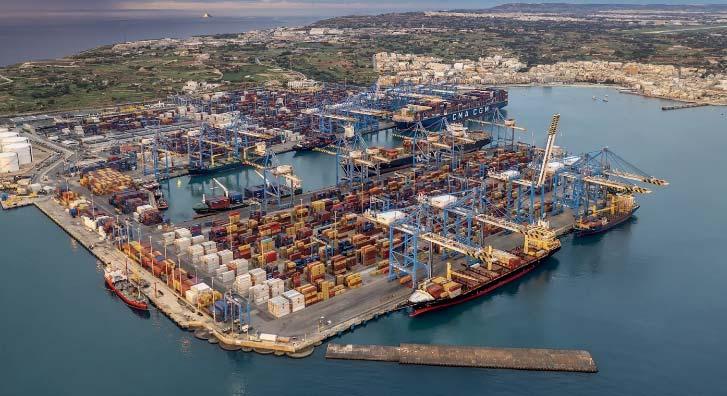

Mannheim Link
The two ports of Mannheim and Rotterdam are expanding their collaboration to increase the digitalisation and sustainability of the logistics supply chain between the two facilities. Mannheim port in Germany is located on the Rhine corridor and within a largescale industrial sector, where bulk and container traffic is regularly transported to and from Rotterdam. Changing the logistics chain to a zero emission transport corridor is a key target.
ROBERTS BANK 2 FINALLY APPROVED
reflecting Indigenous priorities.”
The new marine terminal will be located in subtidal waters to minimize environmental effects and will be built in accordance with the port authority’s commitment to supporting local communities. The Roberts Bank
Terminal 2 community investment programme will provide $6 million to Delta organisations and students as part of the project process.
Adding around 30 per cent more capacity will be welcomed by port users. Dean Davison,
8 With Federal Government approval gained, the new Roberts Bank 2 terminal can finally move forward
Head of Maritime Advisory, Infrata, confirms that the new capacity is definitely needed. “Container volume demand through Vancouver, and the Pacific Gateway, continues to warrant the additional capacity, with existing terminals expecting to be fully utilised before the end of the current decade, even allowing for recent investment by DP World at its terminals in the port.”
The implications of this development are considered further in the Pacific North West feature in this issue.
BRIEFS
Success for CGSA
Contecon Guayaquil S.A. (CGSA), in Ecuador, has handled its largest ever vessel. The ICTSIoperated terminal successfully received the maiden call of the MV Maersk Camden, a container ships that is almost 366m in length and with a total capacity of 15,413 TEU. This vessel is currently deployed on Maersk Line’s AC2 service, which connects Asia with Latin America through the ports of Lazaro Cardenas, Guayaquil, Balboa, Manzanillo, Shanghai, Ningbo and Busan.
Polluting Truck Grant
The first round of a new US$400 million grant programme targeting port electrification and efficiency improvements for trucking has opened. The scheme falls under the US Department of Transportation’s Federal Highway Administration. The funding will focus on projects that reduce emissions from idling trucks which negatively impacts air quality for surrounding communities, truck drivers, and port workers.
Supplies by Drone
The Port of Singapore is planning to issue a call for proposals (CFP) before the end of 2023 to establish a drone port for the delivery of ship supplies. Chee Hong Tat, Senior Minister of State for Finance and Transport notes: “The CFP will act as a pathfinder for public agencies and private companies to develop a concept of operations for drones that is suited to Singapore’s operating environment as a busy hub.
For the latest news and analysis go to www.portstrategy.com JUNE 2023 | 9 PORT & TERMINAL NEWS
Ceres For Sale
BAGAMOYO PORT PROJECT: NEW DEVELOPMENT APPROACH BRIEFS
Ceres Terminals, the North American portfolio owned by Australia’s Macquarie Group Ltd, is up for sale. The current owners are reportedly hoping to raise US$1bn from the process. Ceres has 18 different operations in North America, currently handling 4.3 million TEU, 13.4 million cruise passengers and 580,000 ro-ro units. Macquarie acquired the portfolio from NYK Line in 2019 but the fund managing the portfolio, Macquarie Infrastructure Partners III, is due to close in the next 12-18 months.
Montreal Help Call
The Montreal Port Authority (MPA) is calling for more cash from the Federal government. Martin Imbleau, CEO, MPA, has said that costs to develop the new Contrecoeur container terminal have increased by nearly 50 per cent and as a result “urgent” financial help is needed. Current reports are indicating that the original project cost of C$950 million has now risen to C$1.4bn. The federal government has acknowledged the need to help but is yet to clarify any specific details.
Aberdeen Invests
The Port of Aberdeen in Scotland is investing £55 million over the next 10 years as part of its commitment to become the UK’s first net-zero port by 2040. Shore-power is being introduced by 2024, which follows the recent roll-out of electric vehicles and installation of LED lighting on the quaysides. Trials of hydrotreated vegetable oil for portowned vessels and equipment are underway, while onsite energy generation for the port estate is under assessment.
Over nine years in the making, Tanzania’s Bagamoyo port project has hit yet another new phase in the efforts to bring the project to market.
This latest phase, according to informed sources, is to seek multiple investors for different
components of the project as opposed to one major investor. In the latter respect, China Merchants Holdings held extensive discussions with the Tanzanian authorities about the project but these ultimately have come to nothing, although it is
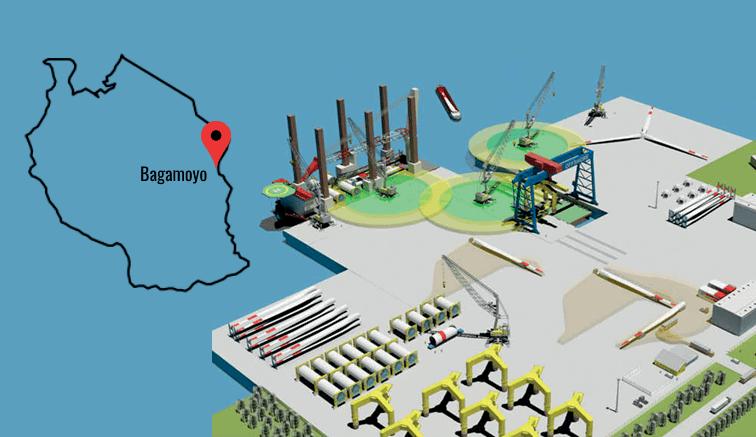
not known whether China will seek reengagement under this new format. The discussions with China Merchants Holdings concluded in mid-2022 – it is not yet known how the project will be marketed to an array of investors.
CAMBODIA BOX TERMINAL CONSTRUCTION COMMENCES
Construction has commenced on a new container terminal at Sihanoukville Autonomous Port, Cambodia.

As a result of the project, annual capacity at the port is expected to increase from 700,000TEU per annum to 2.58 million TEU per annum upon completion in 2029, according to Sun Chanthol, Cambodia’s Minister of Public
Works and Transport. The new terminal will be built in three phases, with the first phase scheduled to be completed by 2026 and expected to cost US$275 million, delivering a 350m quay and a water depth of 14.5m.
Chanthol also confirmed that the second phase will commence in 2025 and finish in 2028, with the final phase starting in 2026
and concluding in 2029, with a total cost of US$698 million.
“The expansion project will allow large container ships to dock at the port and significantly reduce ocean freight costs for Cambodia,” explained Hun Sen, Prime Minister, Cambodia. Currently, ships considerably less than 4000TEU in size are able to call to the port.
PORT & TERMINAL NEWS
10 | JUNE 2023For the latest news and analysis go to www.portstrategy.com
The Kalmar ELECTRIC REACHSTACKER

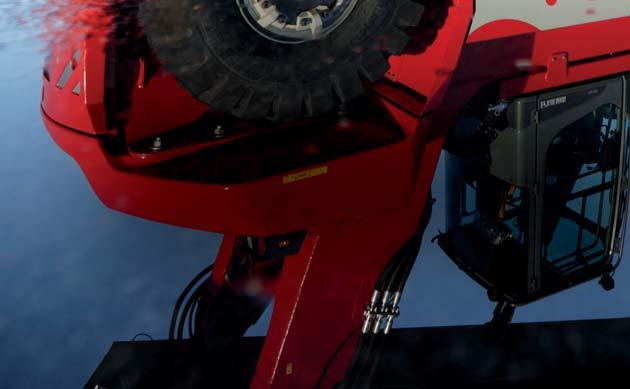
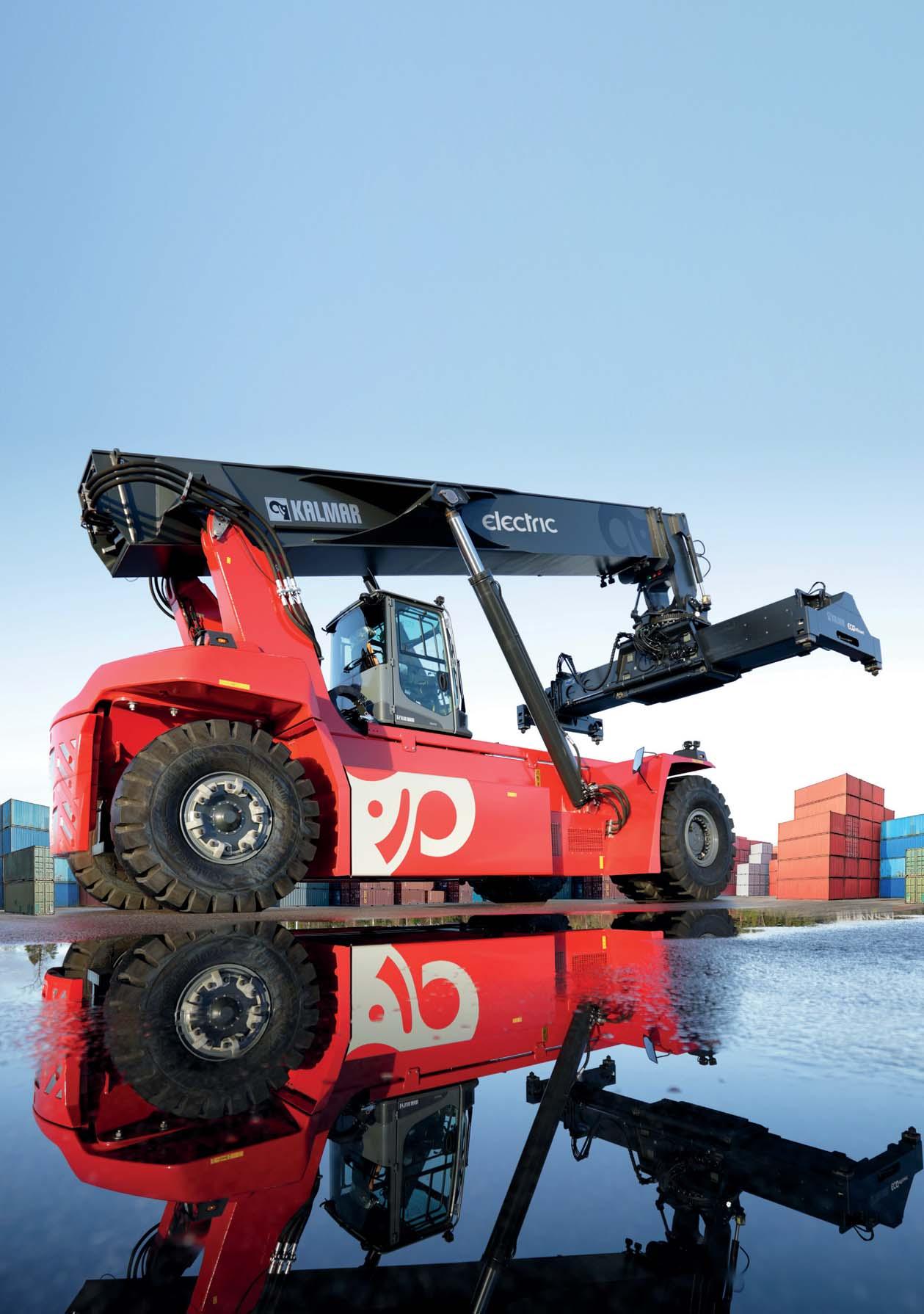
The time is now to go electric.
Kalmar’s electrically powered reachstacker can help improve the eco-efficiency of your operations while maintaining the highest levels of productivity and safety. With a range of modular battery options and charging solutions, we can work with you to design a solution that will deliver for your business. What are you waiting for?
kalmarglobal.com












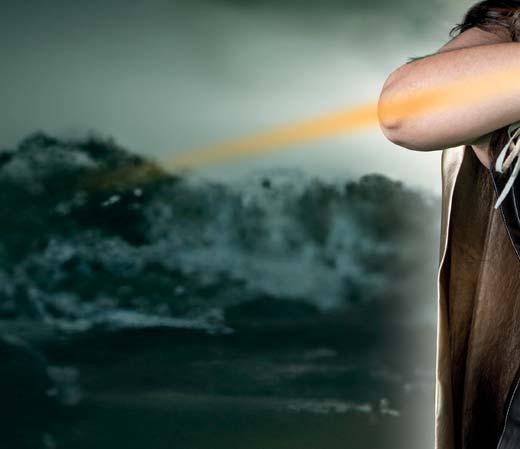









MEET OUR NEW HERO www.elme.com AT TOC EUROPE 13-15 JUNE IN ROTTERDAM WELCOME TO STAND H62 857 INNOVATION SPRING 2023 VOLUME ONE
CROSS CHANNEL GREEN SHIPPING CORRIDOR
California shared data system
Funding of US$30 million is being given to ports in California to develop a new shared data system. The ports of Los Angeles, Long Beach, Oakland, San Diego, and Hueneme are collectively working to develop the new shared system, to be known as the California Port Data Partnership.
The aim of the project is to advance: computerised and cloud-based data interoperability in order to support improved freight system resilience, emissions reduction, goods movement efficiencies and improved economic competitiveness.
The UK’s first green shipping corridor has taken a step forward. Schneider Electric, a specialist in digital transformation of energy management and automation, has confirmed an eight-month consultancy process to assess the opportunity to link the UK Port of Dover with both Calais and Dunkirk in France, as part of the UK’s Clean Maritime Demonstration Competition (CMDC).
Schneider Electric is assessing green energy pathway options for marine vessels and land vehicles to facilitate zero-emission movement of goods freight and passengers, with the process also including how to introduce cold-ironing capabilities to ships while berthed.
The Port of Dover is an integral
Collaboration
CrimsonLogic of Singapore and Shanghai Data Group (SDG) of China are collaborating to develop digital trade facilitation solutions. The new partnership is planning to support greater international outreach of Chinese enterprises by connecting them to over 60 global Customs nodes via CrimsonLogic’s CALISTA platform. This streamlines trade compliance and supply chain processes by optimising data reuse.
part of the process and Schneider Electric is going to be developing a “digital twin” model of the port’s electrical infrastructure to allow a new shore power system to be designed and tested on a virtual basis, including how to efficiently integrate the system into the existing port with minimal disruption.
Peter Selway, Segment Marketing Manager at Schneider Electric, explains further: “Port operators are facing pressure to transition to more sustainable business models that meet with the net-zero ambitions of the Clean Maritime Plan. UK ports are also becoming energy producers, providing the shore power needed to charge electric and hybrid vessels. By partnering in
Fleet Charging
The Port of Virginia in the US has signed a deal with ElectroTempo to enhance vehicle electrification initiatives. The port is targeting carbon neutrality by 2040 and expects the new arrangement to better optimise electric opportunities to help improve energy efficiency, reduce emissions, and help see operating cost decreases. ElectroTempo is a specialist software company for electric-powered fleet charging networks.
this consultancy project, we’re able to advise the Port of Dover on how to strategically invest in the shore power capabilities and infrastructure needed to support a green shipping corridor…. decarbonising this critical shipping channel will reduce maritime greenhouse gas emissions and provide a blueprint for other ports to follow.”
Schneider Electric has already assisted the Port of Dover with the Clean Maritime Demonstration Competition phase 1 to support the technological development necessary to reduce carbon emissions as part of the Port of Dover Air Quality Action Plan.
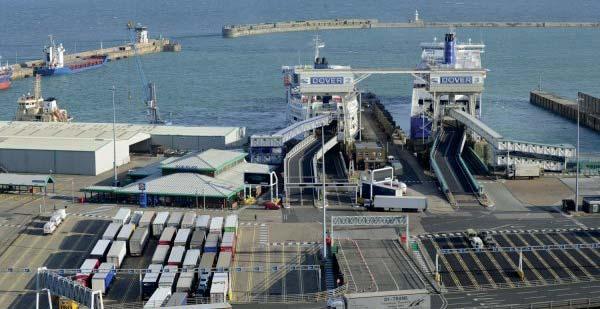
NYK Green Spend
NYK is investing in the Marunouchi Climate Tech Growth Fund, a new investment vehicle looking to participate in fi nance and climate tech startups that specialise in decarbonisation. All fi nancing is being provided through Marunouchi Innovation Partners Co. Ltd. (MIP), which is owned by Mitsubishi Corporation (MC), MUFG Bank, Ltd. (MUBK), and Pavilion Private Equity Co. Ltd. (PPE). The new deal supports NYK’s net-zero goal.
Increased visibility in freight movements across the supply chain, from arrival at a port through to the final delivery of the cargo, Mario Cordero, Executive Director, Port of Long Beach highlights: “By working together, California’s ports can enable end-to-end visibility and connectivity across the supply chain.”
Gene Seroka, Executive Director, Port of Los Angeles adds: “Analytics from that data allows us to see around corners, which is not just a competitive advantage, it’s now a public necessity. I commend our state leaders for having the foresight to invest in data infrastructure to create a more predictable and efficient supply chain.”
BRIEFS
AD Ports buys TTEK
The digital arm of AD Ports Group, Maqta Gateway, has acquired TTEK Inc. for US$26.7 million, with an upfront payment of US$17.1 million. TTEK Inc. specialises in the development of border control solutions and customs systems and the deal extends Maqta Gateway’s existing digital trade systems portfolio. The company is planning to leverage TTEK Inc’s experience across Africa, Australia, the Mid-East, and North America.
For the latest news and analysis go to www.portstrategy.com JUNE 2023 | 13 DIGITAL NEWS
8 The Port of Dover is hoping to be at the heart of a new green shipping corridor between the UK and France
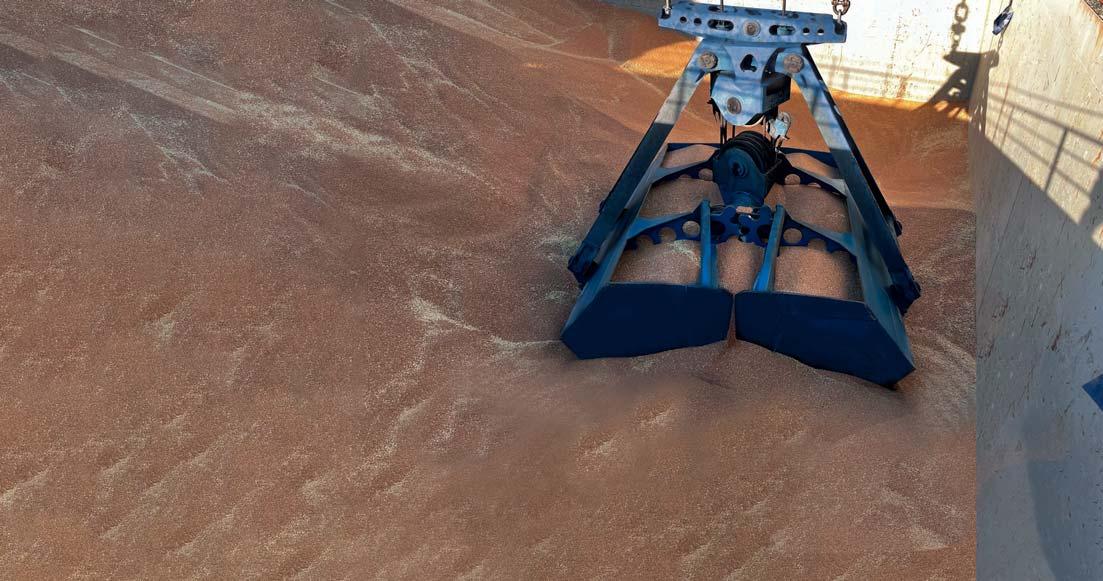

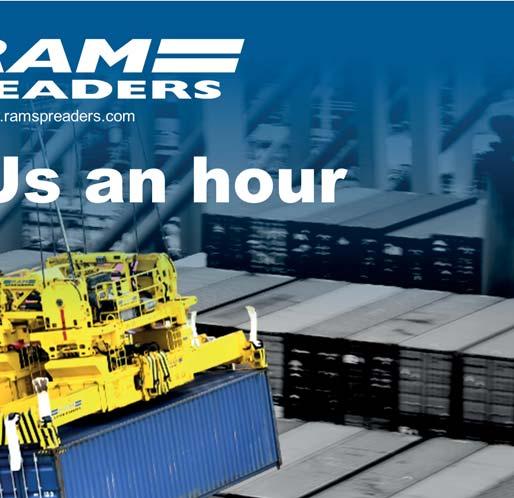




Deltastraat 15 • 4301 RC Zierikzee • T +31 (0)111 418 948 • E sales@nemag.com nemag.com Nemag grabs give dry bulk terminals throughout the world that competitive edge they need in today’s demanding market. ! Contact \ THE POWER OF GREAT DRY BULK HANDLING Scan the QRcode Take a peek
Stand H84
VIRGINIA RAMPS UP NORTH BERTH WITH KONECRANES ASCs
The US East Coast Port of Virginia is purchasing 36 new automated stacking cranes (ASCs) as part of its new modernisation plan for the North Berth at Norfolk International Terminals (NIT).
This order is worth almost US$150 million and will see the new cranes delivered in two batches by Konecranes of Finland. The first 18 units are scheduled to arrive in mid-2025, with the second set due in mid-2027, which is in accordance with the construction phases.
The North Berth project is modernising and expanding the current infrastructure so that 1.4 million TEU per annum can be handled, leading to a total capacity of 3.6 million TEU per annum at the combined North and South berths.
Key components of the North Berth project include installation of new ship-to-shore cranes and a new container yard, which is being configured around the use of ASCs, and a new operating system. As a result, the port is expecting to be able to operate a greater density of container stacking and improved productivity.
Stephen A. Edwards, CEO and Executive Director, Virginia Port Authority, notes: “We are nearing the start of construction on the North Berth project, and it is important that we get our equipment orders coordinated with the completion of construction. The North Berth
FLOW-SV Launched
Damen Shipyards Group recently reached out to industry stakeholders for input relating to vessel specifications for supporting offshore projects. The Netherlands-based company asked vessel operators, wind farm developers and equipment manufacturers to assist in the development process and has now released its new concept - the Damen Floating Offshore Wind Support Vessel (FLOW-SV).
project is the last piece in the overall modernisation of our primary container terminals and the timing of how we proceed will be critical to the success of this project.”
The timing of this project is also critical because it must finish on schedule so that other ongoing work, such as the completion of NIT’s Central Rail Yard expansion and the 55ft channel deepening process, can complement the extra capacity.
“Cargo owners, ocean carriers and logistics providers are going to closely following our progress. Many of the ocean carriers that call Virginia today are putting new, larger vessels into service during the next few years. We are telling them that they can bring
Drones Away
The Port of Antwerp covers more than 120km2 and it is now being monitored by six autonomous drones. The port authority has launched its ‘D-Hive drone-in-a-box’ network to enhance security by providing an airborne perspective to provide better berth management, infrastructure inspections, oil spill and floating waste detection activities, and to enhance security. There will be 18 daily Beyond Visual Line of Sight (BVLOS) drone flights.
8 The US Port of Virginia has placed an order with Konecranes for 36 new ASC units as part of its largescale modernisation project at NIT
those vessels to Virginia without concern for channel depth and width, rail capacity or modern terminals that can process large amounts of cargo with consistent efficiency,” Edwards adds, before confirming that construction work on the North Berth project will commence in Summer 2023.
In 2022, the port handled 3.7 million TEU, an increase of 5.1 per cent over the 2021 total of 3.5 million TEU. For the year through April 2023, total container volumes are down by 12.2 per cent due to weaker loaded import activity.
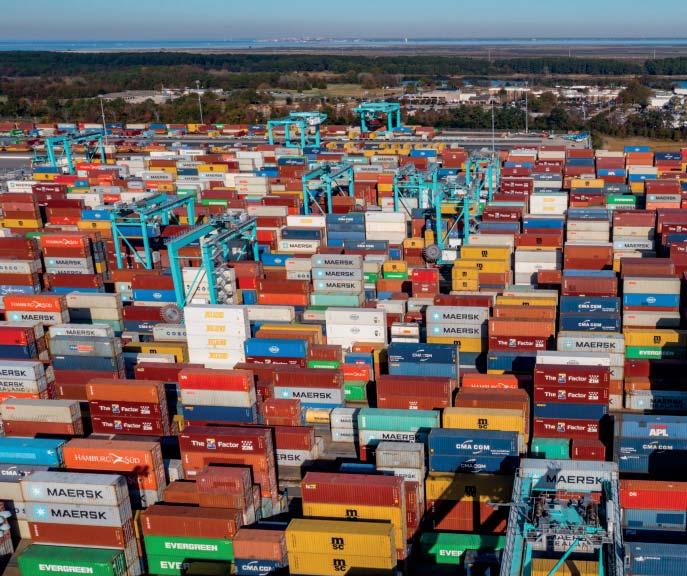
STS for APMT Tangier
The first of four batches of new dual ship-to-shore (STS) cranes have arrived at APM Terminals (APMT) MedPort Tangier in Morocco. With an outreach of 82m, these high spec, dual STS cranes can handle container ships of up to 24,000TEU featuring up to 26 rows of containers on-deck. The terminal has recently added 23 hybrid shuttle carriers to its existing fleet of 42 and implemented a shore power initiative with the Tangier Port Authority.
Hydrogen-Powered Tractor in Service at Valencia
The Port of Valencia, Spain, has received its first hydrogenpowered terminal tractor. The 4x4 unit is the first of its kind in the world and is being developed within the framework of the European H2PORTS project. This unit has a fuel cell/ battery hybrid powertrain and a storage system made of four Type 3 cylinders, guaranteeing continuous operations of at least six hours before refuelling.
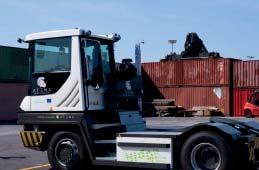
The electric motor is powered by a high-performance LiFePO4 battery, with 25 kWh energy capacity, and a 70 kW Ballard fuel cell module. In particular, the electric motor can receive power for traction from the fuel cell and battery simultaneously or charge the battery during braking or decelerations. The fuel cell is also able to power both the electric motor and the battery, if needed.
This hybrid powertrain is able to successfully take advantage of a significant share of kinetic energy recovery, of up to 25 per cent, thereby making it a much more efficient unit to use for the intensive activities of roll-on/ roll-off operations.
Electric Cabooter
Kalmar has confirmed it has officially handed over its first completely electric reachstacker to its long-term partner Cabooter Group, following a six-month testing process. This new unit will continue to work at Cabooter Group’s Greenport Venlo intermodal terminal in the Netherlands. The unit has a 45-tonne lifting capacity and is equipped with a range of modular batteries and charging options.
For the latest news and analysis go to www.portstrategy.com JUNE 2023 | 15 EQUIPMENT NEWS
BRIEFS












NASH SCOPES OUT VTS FOR PORT OF LONDON AUTHORITY
BRIEFS
Zero-Emissions SSA
SSA Marine is now operating large-capacity, lithium forklifts at the US West Coast ports of Stockton and West Sacramento, California. The units were supplied by Wiggins eBull, who maintains it is offering the industry’s first commercialised largecapacity, zero-emissions forklift manufactured in the US. Joe Carrillo, Regional Vice President, SSA Pacific highlights:
“The Wiggins Yard eBulls are significantly reducing greenhouse gas emissions and sound pollution, while enabling us to effectively service our customers.”
The Port of London Authority (PLA) is upgrading its Vessel Traffic Services (VTS), with the help of shipping, navigation and maritime risk consultancy, NASH Maritime.
NASH Maritime, supported by Halcro Electronics and AFS Consultants, has completed an in-depth assessment to generate a clear understanding of user needs and requirements when it comes to an optimum VTS system.
According to the International Maritime Organisation (IMO), a VTS is a shore-side system which can range from the provision of simple information messages to ships, such as position of other traffic or meteorological hazard warnings, to extensive management of traffic within a port or waterway.
As custodian of the River Thames in London, the PLA requires the most modern, and efficient software system to enable safe management and co-ordination of vessel traffic and marine operations. Consequently, NASH Maritime’s research has helped to define new software specification, across both mandatory and desirable system requirements, while also ensuring that the strategic and operational needs of the PLA are fully included.
Dr Ed Rogers, Co-Founder, NASH Maritime, comments: “We brought to this project our understanding of the challenges that come with being a VTS system operator, our experience in defining VTS systems (both here in the UK and internationally)
and also our deep knowledge of IALA standards, EU Network and Information Systems Directive and GDPR requirements.”
With around 70 independently owned terminals and ports within the PLA’s jurisdiction, which includes largescale operations at DP World’s London Gateway and the Port of Tilbury, annual cargo of more than 50 million tonnes moves via this key waterway.
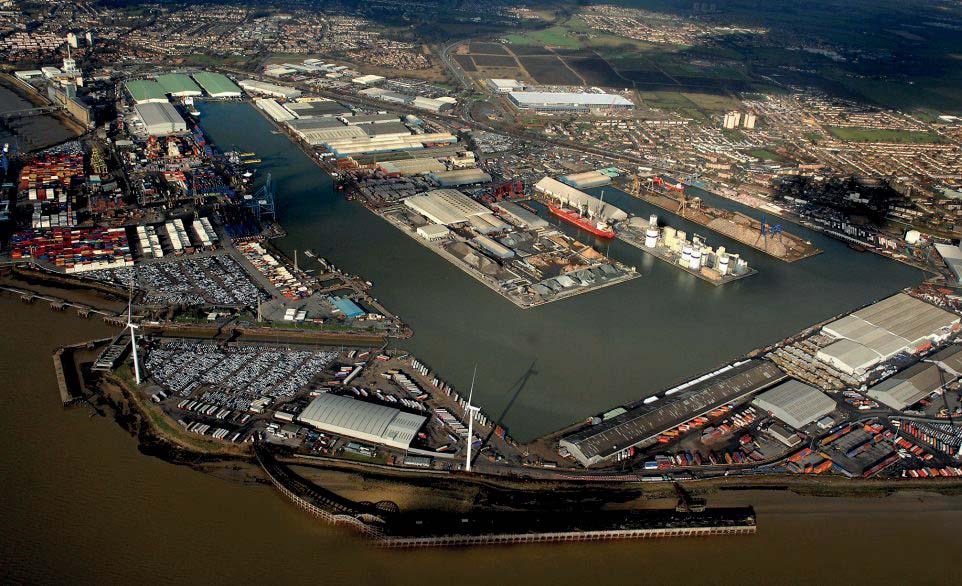
The PLA has also recently commenced a major master planning exercise to realise the growth opportunities along the River Thames as it starts implementing its Thames Vision 2050 initiative.
RTGs ARRIVE AT PSA PANAMA
PSA Panama has received three new rubber-tyred gantry (RTG) cranes from Konecranes. It represents the first order from this terminal for the Finlandbased equipment manufacturer.
The new units are powered by diesel-electric motors and each machine will incorporate Konecranes’ Diesel Fuel Saver
technology, as well as AutoSteering and Stack Collision Prevention. Remote monitoring from American mobile virtual network operator, TruConnect, is also included in the deal.
Each RTG is able to stack boxes up to five containers high and operate over six container rows wide plus a truck lane.
Hyster Dynamic Stability
Hyster has launched its Dynamic Stability System (DSS) for forklift trucks. The system, which is standard on all H40-70A models in the company’s recently launched Hyster A Series, provides automated performance controls and alerts for safer operations. When the DSS sensors detect the fork truck is exceeding designated stability limits, it automatically intervenes to ensure stable travel is maintained, in terms of speed, lift height, mast tilt and hydraulic load.
Amsterdam Fenders
Located at the former Rodman Cocoli Naval Base, Arraiján, PSA Panama recently increased its annual capacity to two million TEU per annum. The facility continues to act as a key transshipment hub on the Pacific Coast of Panama, located at the entrance to the Panama Canal.
ShibataFenderTeam (SFT) has completed the supply and installation of 21 sets of Cell Fender Systems to the Ijmuiden Sea lock, at the Port of Amsterdam. As part of the process, SFT designed and supplied a continuous fender-wall with delivery of 40 SPC Cone Fender Systems. This lock system was originally designed, in 2016, by SFT to support safe and smooth access of larger vessels.
For the latest news and analysis go to www.portstrategy.com JUNE 2023 | 17 EQUIPMENT NEWS
8 The Port of Tilbury is one of around 70 independently owned facilities on the River Thames that the PLA will continue to support with its VTS upgrade
BARRY PARKER
We are living in a partisan political age; regardless of what side you are on, most shipping and port executives would agree on that. One issue of concern to me has been the relentless attacks on the Jones Act, a set of laws which reserve trade between US ports (on the mainland, and also Alaska, Hawaii, and US territories including Puerto Rico) for vessels built in the States, and registered/crewed by US “citizens.”
It is complicated and the debates quickly degenerate from the factual into the world of opinions, “what if’s”, and sometimes featuring heated emotions and raised tempers. While the ports are welcoming vessels of all flags, with varied international cargo origins and destinations, they also benefit greatly from shipbuilding, maintenance/ repair and other
JONES ACT – EMERGING INFRASTRUCTURE LINKS?
activities tied to Jones Act vessels.
In looking at history, it is evident that such activity has been greatly reduced compared to the 1970s and 1980s (mirroring a decline, as well, in military vessels).
Yet increasingly, geopolitical concerns have been causing policymakers to take a fresh look at US security, and maritime readiness/capabilities are a part of that conversation. Potentially, after years of waning, local shipbuilding and related services could increase. Importantly, this comes at a time that trade flows may be easing- after a multiyear boom (brought about the pandemic, and subsequent shifts in cargo flows).
Yes, there are a lot of politics here. As these debates heat up and get vociferous, port
PETER DE LANGEN THEANALYST


Last month, the World Bank published a new version of the Logistics Performance Index. New in this edition are the results of a ‘big data’ analysis of the performance of international shipments, using data from, amongst others, MDS Transmodal, Marine Traffic and Tradelens. The data from MDS Transmodal and Marine Traffic have previously been used in publications of the United Nations (the Liner Shipping Connectivity Index/the Review of Maritime Transport).
The Tradelens data is new – and relevant. Data was collected regarding the total door-to-door transport time of maritime shipments. There is a huge variation between shipments. As was to be expected, the major ‘source’ of the variation of total transport
planners (even those with calm demeanors) should keep a weather eye on such developments. Whether one supports the Jones Act or not, there are emerging tie-ins with “infrastructure” here, with maritime transportation seeing benefits in recent legislation.
Traditional funding sources, like the long-standing grants programme benefiting ports, have gained. Yet additional funding outlets are emerging, as well. As decarbonisation continues to be infused into conversations (a different theme than national security) - and allocations of funding - a group of new initiatives concerning “Hydrogen Hubs” sees the US Department of Energy (USDOE) set to spend roughly US$7bn
on their development. If the concept advances, the hubs would promote new supply chains for movements of greener fuels including methanol and ammonia. It’s early days for such programs, but the ports (notably in the US Gulf Coast, but also, potentially, around the US East Coast) would see substantial benefits if the USDOE is looking in their direction when the final choices for hubs are made.
In terms of financial structuring, long-term contracts would likely be put in place for all aspects of the new energy infrastructures. And yes, that would also bring about incremental maritime activity (including newbuilds that would likely be trading domestically) right on our waterfronts.
WORLD BANK LOGISTICS PERFORMANCE
INDEX 2023: OBSERVATIONS
time is related to ports and dry ports; some containers have very high dwell times in ports, while others do not. This is especially the case on the ‘import journey’ (i.e., from port to final destination).
A comparison of dwell times reveals huge differences between countries, and not always as would intuitively be expected: the average import dwell time is much higher in western advanced economies (8.3 days in Belgium, 7.6 in Germany, 7.2 in The Netherlands and the US) than in emerging economies such as China (5.5) India (2.6) and Cambodia (2.1). Plus, aside from small island states (with low numbers of observations), the lowest import dwell time is found in Japan, where the average dwell time is as low as 1.0 days.
While in general, I definitely agree with the World Bank that lower dwell times are better, a deeper understanding is required to assess whether that holds in all cases. Probably, the most important issue for shippers is the ability to freely decide when to pick up their goods/ containers. Thus, if a high dwell time is caused by unproductive port operations or timeconsuming customs processes (as it may be in many countries) and containers were not available for shippers then this can build costs for shippers, not least because the dwell times are unpredictable.
However, on the other hand, when shippers can freely decide when and how to pick up their containers, they
may opt for long stays at the terminal, as well as slow, but sustainable and cheap onward transport modes in case stock levels are high enough. Such a scenario would not imply higher generalised transport costs for shippers.
Another caveat to keep in mind is that modern large, semiautomated terminals are designed for an average dwell time of around seven days, while container operations at older terminals with a limited yard space may have to adjust their pricing policies to secure low dwell times and reach an acceptable terminal efficiency.
In short, a more granular approach can extend the important new insights developed by the World Bank.
18 | JUNE 2023 For the latest news and analysis go to www.portstrategy.com
THENEWYORKER
Expectations of a recession are receding, despite declining demand, as economies remain in growth territory.
All the signs in late 2022 suggested that the largest economies of the EU and the US would enter into a mild recession sometime in the second half of 2023 with this driven by stubbornly high inflation, rising interest rates intended to choke off demand, and grain and energy price rises resulting from the on-going war in the Ukraine. Add to this, the financial sector in the US is a real cause for concern, evidenced by banks coming under pressure. So far, we have seen three banks being taken over, including Credit Suisse in Europe.
Also on the negative front, we have seen a very sharp drop in demand for consumer goods moving in containers with, for example, North American imports down by 24 per cent in the first quarter, year on year and Europe by nearly 30 per cent.
THE ELUSIVE RECESSION, NOT AS PER DEFINITION YET
Furthermore, with weak demand in the dry bulk sector global trade looks anemic.
This suggests that a recession is on the way in Europe and North America, but lo and behold, it appears to be elusive with GDP growth rates stubbornly staying out of the “traditional” definition of a recession with two quarters of negative growth.
Despite the above indicators China, the US and the EU continue to see their economies growing, albeit slowly in some
MIKE MUNDY THE


STRATEGIST
Let’s backtrack a bit and reference two interesting reports that came out a few months ago.
The first is the Annual Progress Report on Green Shipping Corridors from the Global Maritime Forum, which documents developments up to November 2022. The report describes itself as “a checkpoint for what has already become a movement.” Specifically, it evaluates:

5 The size, nature, and performance of global green corridor initiatives;
5 The amount and nature of national policy and regulation emerging to support these initiatives; and
5 The overall momentum behind the movement.
It further states, “In the year since the signing of the
cases, as unemployment remains stable and investment in industries is holding up as energy prices have dropped and profit margins (perhaps fueling inflation) are healthy.
Forecasters are coming to the view that a recession may be avoided, and that consumer goods consumption will recover by the second half of the year. The shipping sector, usually the first to bemoan the collapse in trade volumes, has been somewhat sanguine so far despite some very
large drops in revenue and profits in the first quarter of this year. The reason for that is that despite the collapse of freight rates, the container sector has so far managed capacity and kept rates above pe-covid days and is still seeing solid returns. Less solid are the results of the major ports as they face declining throughput. We are all holding our breath.
TWO REPORTS WORTH CATCHING UP WITH
Clydebank Declaration, 21 initiatives have emerged around the world. More than 110 stakeholders from across the value chain are engaged in these initiatives, and a significant level of public-private collaboration can be seen.”
Quantifying this, it identifies over 20 corridor initiatives, 12 short-sea, seven deep-sea and two, at the time, which remained to be confirmed. The individual projects are identified with the qualification that: “The vast majority of these initiatives remain at an early stage. Only a handful have advanced far enough to begin feasibility assessments or implementation planning.”
Among other coverage, the report goes on to offer “…seven recommendations to support
accelerated and green corridors.”
In all, the report provides four main working chapters: “Where do we need to be; Where are we now, Overview of progress and Recommendations. It can be downloaded, free of charge at: https://www.globalmaritimeforum. org/content/2022/11/The-2022Annual-Progress-Report-onGreen-Shipping-Corridors.pdf
The second report worthy of note is the: Act Now or Pay Later: The Costs of Climate Inaction for Ports and Shipping from New York-based RTI International.
This report was actually published in March 2022 but I bring it to your attention now a/ as it has just crossed my path and b/ I think it provides a very good summary not only of the range of climate related
challenges ports can face but also of the practical steps that can be taken to mitigate these. It also provides some insight into potential costs and particularly related to what it calls “hard strategies; required structural changes which it defines in three categories, namely, “elevate, defend and retreat.”
Act Now or Pay Later: The Costs of Climate Inaction for Ports and Shipping is a comprehensive work comprising eight main chapters. Like the previous report discussed, it is a highly recommended read and can be downloaded free of charge at: https://www.c40knowledgehub. org/s/article/Act-now-or-paylater-The-costs-of-climateinaction-for-ports-andshipping?language=en_US
For the latest news and analysis go to www.portstrategy.com JUNE 2023 | 19
THEECONOMIST
BEN HACKETT
8 Capacity management is to the fore in container shipping providing some stability but major ports have to contend with declining throughput

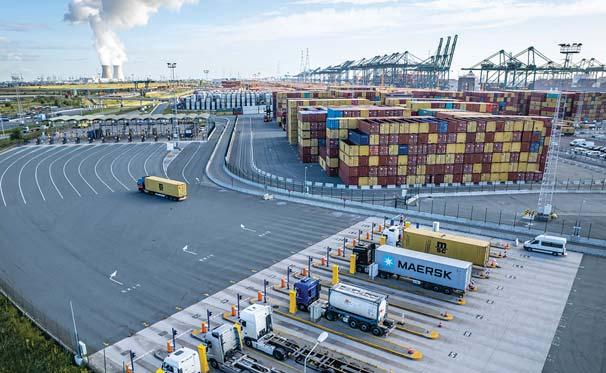





AI
S E ASIA BOX PORT RANKING
Independent market consultancy Drewry has drilled down into Southeast Asia containerport and terminal performance. Mike Mundy reports that the findings provide a useful new perspective
Container traffic moving via the Top 15 Southeast Asia containerports (by volume) in 2022 was generally static compared to 2021 – with the exception of seventh-ranked Manila in the Philippines which achieved a 10 per cent increase, the only double-digit increase – Table 1.
Five ports in the region saw a decline in volumes compared to the previous year and the increases achieved elsewhere were only single digit. The eighth ranked port of Haiphong, Vietnam saw the second largest increase at 5.7 per cent with Tanjung Priok, Indonesia, ninth in the ranking, third with a 3.43 per cent increase. Manila’s performance can be seen as exceptional compared to its peers in the region.
By way of a further insight into Southeast Asia containerport performance, Drewry Maritime Research, the compiler of the data, has also calculated 2021 – 2022 activity based solely on gateway – import and export – traffic (excluding transshipment and domestic traffic). Table 2 summarises the situation – again Manila, sixth in the ranking, emerges as the exception to the rule with a 10.6 per cent increase. Second ranked Port Klang, Malaysia, is next with a 6.4 per cent increase and Tanjung Priok the next highest with a 3.1 per cent increase.
Five of the gateway ports registered a contraction in cargo volume in 2022 compared to 2021.
8 Table 1: International Gateway Ports Ranking - Southeast Asia (2021/2022), by TEU
(Includes all container cargo: Gateway. Transshipment, and Domestic)
Source: Base data from Drewry Maritime Research (Excludes Transhipment and Domestic Movements)
8 Table 2: Container Port RankingSoutheast Asia (2021/2022), by TEU
Source: Base data from Drewry Maritime Research
CONTAINERPORT PERFORMANCE
For the latest news and analysis go to www.portstrategy.com JUNE 2023 | 21 Ranking 2022Country PortRegion20212022Growth 1SingaporeSingaporeSouth East Asia37,467,61237,289,600-0.5% 2MalaysiaPort KlangSouth East Asia13,727,08513,218,693-3.7% 3VietnamCat Lai (Ho Chi Minh)South East Asia12,313,29612,436,4291.0% 4MalaysiaTanjung PelepasSouth East Asia11,200,24510,512,806-6.1% 5ThailandLaem Cha-bangSouth East Asia8,523,3528,741,0802.6% 6IndonesiaTanjung PriokSouth East Asia6,926,0907,164,0283.4% 7PhilippinesManilaSouth East Asia4,976,0145,474,48410.0% 8VietnamHaiphongSouth East Asia4,027,4004,259,3775.8% 9IndonesiaSurabayaSouth East Asia3,489,9263,493,6670.1% 10MalaysiaPenangSouth East Asia1,278,0061,319,1133.2% 11ThailandBangkokSouth East Asia1,387,7631,267,942-8.6% 12IndonesiaBelawanSouth East Asia1,197,380993,825-17.0% 13PhilippinesCebuSouth East Asia914,111937,0522.5% 14MalaysiaJohorSouth East Asia937,205918,579-2.0% 15PhilippinesDavaoSouth East Asia824,343824,8980.1% International gateway* (teu) Ranking 2022CountryPortRegion20212022Growth 1ThailandLaem ChabangSouth East Asia8,523,3528,741,0802.6% 2VietnamCat Lai (Ho Chi Minh)South East Asia8,286,8488,208,043-1.0% 3MalaysiaPort KlangSouth East Asia5,326,1095,670,8196.5% 4SingaporeSingaporeSouth East Asia5,133,0635,108,675-0.5% 5IndonesiaTanjung PriokSouth East Asia4,596,3814,741,7973.2% 6PhilippinesManilaSouth East Asia3,580,6423,962,11110.7% 7VietnamHaiphongSouth East Asia2,710,4402,811,1893.7% 8IndonesiaSurabayaSouth East Asia1,661,5751,640,758-1.3% 9ThailandBangkokSouth East Asia1,387,7631,267,942-8.6% 10MalaysiaPenangSouth East Asia1,214,1061,242,6042.3% 11IndonesiaBelawanSouth East Asia1,197,380993,825-17.0% 12PhilippinesCebuSouth East Asia914,111937,0522.5% 13MalaysiaJohorSouth East Asia909,089899,289-1.1% 14PhilippinesDavaoSouth East Asia824,343824,8980.1% 15CambodiaSihanoukvilleSouth East Asia732,387788,0607.6%
MOMENTUM WHERE IT MATTERS








Building from a one-country operation at the Port of Manila in the Philippines, ICTSI has pressed forward across 35 years. On six continents, currently in 20 countries, we continue developing ports that deliver transformative benefits.

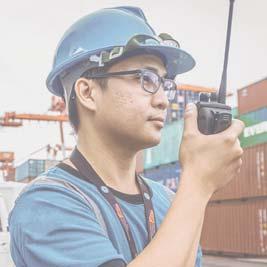

All across our operations, we work closely with our business and government partners, with our clients and host communities: to keep building momentum where it matters, in and through ports that keep driving sustainable growth.
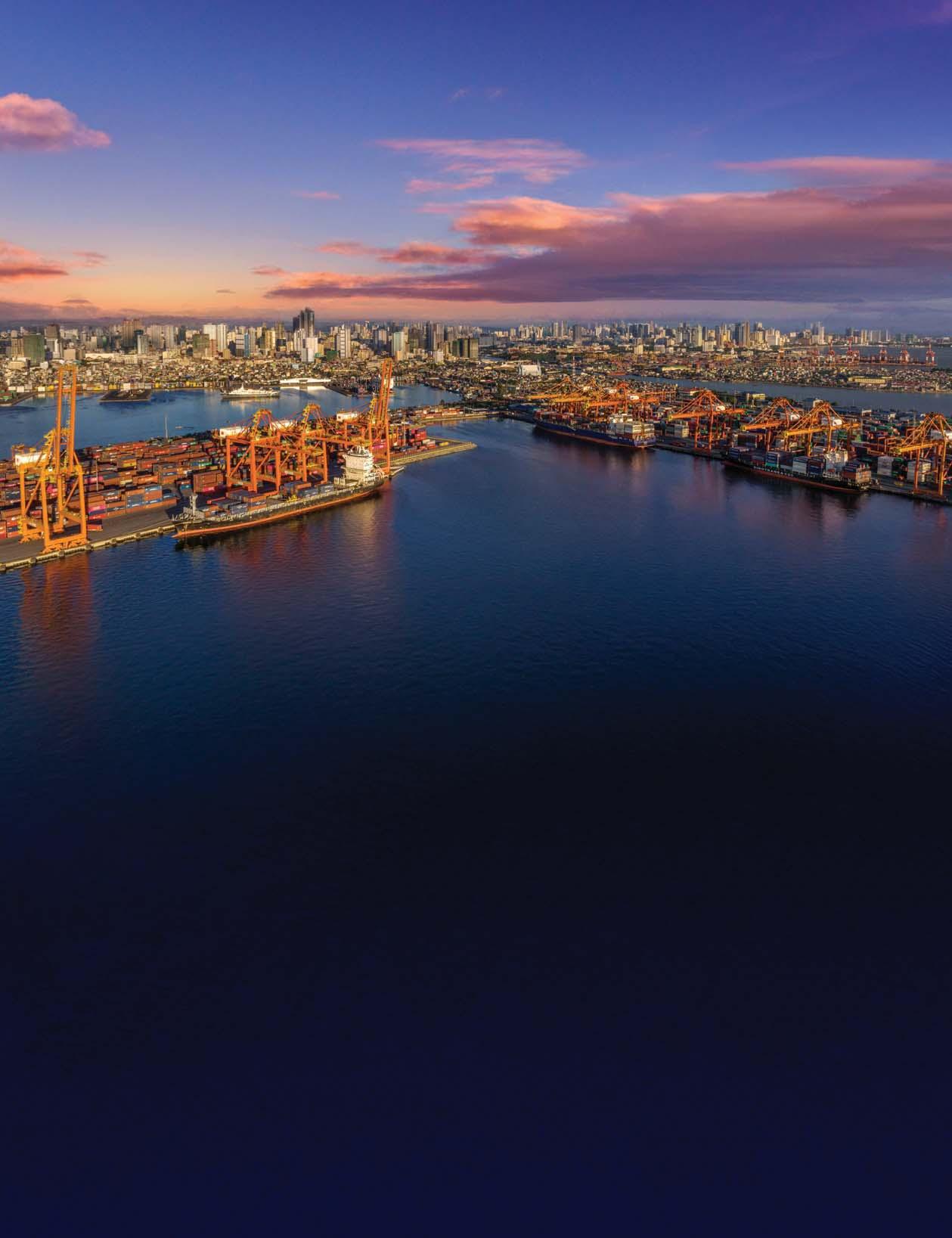
ARGENTINA•AUSTRALIA•BRAZIL•CAMEROON•CHINA•COLOMBIA•DR CONGO•CROATIA•ECUADOR•GEORGIA•HONDURAS•IRAQ INDONESIA•MADAGASCAR•MEXICO•NIGERIA•PAKISTAN•PAPUA NEW GUINEA•PHILIPPINES•POLAND
www.ictsi.com
TERMINAL VIEW
Further drilling down into Southeast Asia container traffic data, Drewry provides the interesting perspective of a Top 20 container terminal ranking – Table 3 for all container traffic and Table 4 for gateway cargo only based on 2021 performance*. As might be expected, Table 3 shows the two major transshipment hubs of Singapore (Pasir Panjang Terminal) and Tanjung Pelepas in first and second positions respectively. PSA terminals are actually ranked in first, fourth, sixth, seventh, eighth and seventeenth in the ranking. In third position is port Klang with the Westport Kelang Multi Terminal.
Manila is the only entity other than Singapore to be identified in the ranking more than once with the Manila International Container Terminal in eleventh position and
Manila North Harbor at nineteen. As with the ports ranking, Drewry again examines the position of Southeast Asia terminals on a pure gateway cargo basis – import and export cargo (excluding domestic volumes and transshipment) –Table 4. It does so recording those terminals that have handled over a million TEU in 2021 – the Top 12. It is a useful perspective from the point of view of understanding offtake infrastructure – road and rail – needs for example.
Wesport Kelang Multi Terminal (B07 – B10), Malaysia tops the ranking with 4,035,995TEU, Saigon NewPort – Cat Lai Terminal second with 3,623,036TEU and Manila International Container Terminal in third with 2,508,119TEU. From fourth position down to twelfth all the remaining terminals handle volumes in the range from one million TEU to just under two million TEU.
(Includes all container cargo: Gateway. Transshipment, and Domestic)
8 This informative containerport performance data breaks new ground. Moving forward, as post-Pandemic data is collected and further refined it will undoubtedly prove useful to the sector – for overall port planning and wider aspects such as tariffs and competitive pricing
For the latest news and analysis go to www.portstrategy.com JUNE 2023 | 23 International gateway* (teu) Ranking 2021Sub RegionCountryPortTerminal2021 1South East AsiaMalaysiaPort KlangWestport Kelang Multi Terminal ( B07-B10) 4,035,995 2South East AsiaVietnamCat Lai (Ho Chi Minh)Saigon NewPort - Cat Lai Terminal 3,623,036 3South East AsiaPhilippinesManilaManila International Container Terminal 2,508,119 4South East AsiaIndonesiaTanjung PriokJakarta International Container Terminal (JICT) 1,976,392 5South East AsiaThailandLaem ChabangHutchison Ports - Terminal C1-C2 1,923,989 6South East AsiaVietnamCai MepTan Cang-Cai Mep International Terminal (TCIT) 1,732,896 7South East AsiaSingaporeSingaporePSA - Pasir Panjang Terminal 1,712,500 8South East AsiaThailandLaem ChabangTerminal B5_C3 (LCIT) 1,489,142 9South East AsiaIndonesiaSurabayaTerminal Petikemas Surabaya 1,330,047 10South East AsiaMalaysiaPort KlangNorthport (prev. Klang Container Terminal) 1,290,114 11South East AsiaIndonesiaTanjung PriokNew Priok Container Terminal 1 (NPCT1) 1,142,593 12South East AsiaMalaysiaPenangNorth Butterworth Container Terminal 1,141,710
8 Table 4: International Gateway Terminal RankingSoutheast Asia (2021) (excluding Transhipment and Domestic Movements), by TEU
CONTAINERPORT PERFORMANCE
Total throughput (teu) Ranking 2021 Sub RegionCountryPortTerminal2021 1South East AsiaSingaporeSingaporePSA - Pasir Panjang Terminal 12,500,000 2South East AsiaMalaysiaTanjung PelepasPTP Container Terminal 11,200,245 3South East AsiaMalaysiaPort KlangWestport Kelang Multi Terminal ( B07-B10) 10,402,050 4South East AsiaSingaporeSingapore MSC-PSA Asia Terminal (MPAT – Located in Pasir Panjang) 6,710,000 5South East AsiaVietnamCat Lai (Ho Chi Minh) Saigon NewPort - Cat Lai Terminal 5,383,411 6South East AsiaSingaporeSingaporeCOSCO-PSA Terminal (CPT – Located in Pasir Panjang) 4,727,000 7South East AsiaSingaporeSingaporeCMA CGM-PSA Lion Terminal (CPLT – Located in Pasir Panjang) 4,651,000 8South East AsiaSingaporeSingaporePSA - Brani Terminal 4,293,113 9South East AsiaMalaysiaPort KlangNorthport (prev. Klang Container Terminal) 3,325,035 10South East AsiaVietnamCai MepTan Cang-Cai Mep International Terminal (TCIT) 2,574,883 11South East AsiaPhilippinesManilaManila International Container Terminal 2,508,119 12South East AsiaIndonesiaTanjung PriokJakarta International Container Terminal (JICT) 2,037,518 13South East AsiaThailandLaem ChabangTerminal C1-C2 1,923,989 14South East AsiaSingaporeSingaporeMagenta Singapore Terminal (MST) 1,636,704 15South East AsiaThailandLaem ChabangTerminal B5_C3 (LCIT) 1,489,142 16South East AsiaVietnamHaiphongChua Ve Container terminal 1,435,817 17South East AsiaSingaporeSingaporePSA - Keppel Terminal 1,434,240 18South East AsiaIndonesiaSurabayaTerminal Petikemas Surabaya 1,415,644 19South East AsiaPhilippinesManilaNorth Harbour - multipurpose berths 1,390,986 20South East AsiaThailandBangkokPAT berths (Klongtoey dolphins) 1,387,763
8 Table 3: Terminal Ranking - Southeast Asia (2021), by TEU
THIS IS












After nearly a century of innovation, Hyster ® Zero-Emissions Container Handlers powered by hydrogen fuel cells prove that the best is yet to come. Take a closer look at the future of ports. VISIT

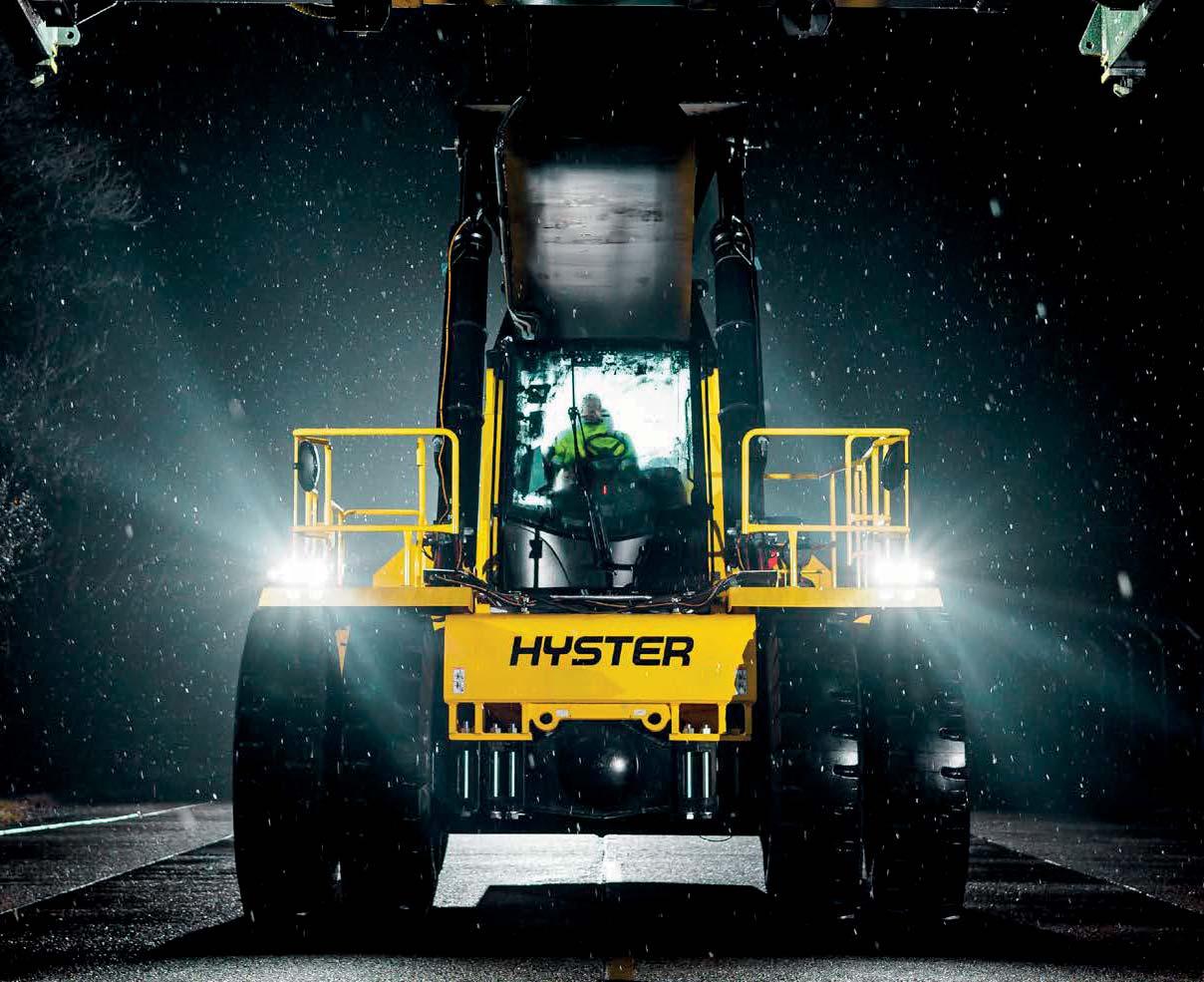
US AT TOC Rotterdam from 13-15 June stand C11 HUGE.
BRACE FOR A ROUGH RIDE
Problems in the shipping market will have a far-reaching impact on container ports and terminals. Andrew Penfold considers the threats and opportunities
It’s time to look at the container markets again and try to assess what will be the impact of a downturn on the port sector. For any long-term observer of the container business, it looks like a case of ‘déjà vu all over again’. The basic position can be summarised as follows:
5 The supply side is set for a massive expansion – especially in the larger size vessel ranges. There are only limited opportunities to use these ULCS and Megamax vessels outside the Asia to Europe and Transpacific trades.
5 Demand is uncertain. At the global level economic uncertainty is at very high levels. The latest IMF forecasts for global economic growth (April 2023) is 2.8 per cent for 2023. This is much lower than long-term trends and, given political uncertainties, may well understate the actual outcome.
5 The impact on different container trades will vary sharply, but the established vessel ‘cascading’ in the market will spread any negative effects very broadly (and very rapidly).
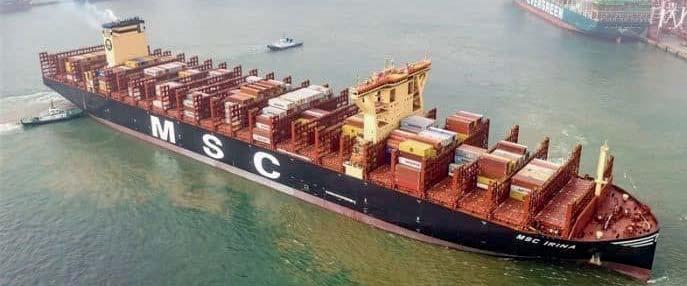
5 The decline in the supply/demand balance has already hit the market – way ahead of the delivery of new tonnage. This suggests that problems will run over the next two years and beyond.
This outlook can only cause difficulties for the container port and terminal sector.
Nothing is really new in the shipping markets. Similar conditions have typified the markets over most of the period since 2014 and – indeed – real sustained profitability for container owners has been nebulous since the Financial Crisis.
Data collated by Alphaliner is germane here. Focusing on the market since 2014, it’s clear that the unprecedented surge in freight rates (SCFI/CCFI) and charter rates (Alphaliner Index) in 2021-2022 was by no means typical of any market upturn and was a true ‘Black Swan’ event if ever there was one. Rates peaked at hitherto unseen levels and have equally rapidly collapsed back to a much more typical position. It’s clear that this return to ‘normality’ will continue.
It’s all about supply and demand with the usual overlay of fear and greed. Shipping lines weren’t clever but lucky, with the freight sector probably the only real beneficiary of the epidemic. Supply chain disruption resulted in windfall gains for the industry. The question now is what did the lines do with all this cash? Have they deep enough pockets to survive
through a prolonged downturn? It’s worth taking a closer look at each side of the equation.
There are, of course, differences on each major route but past experience confirms that no individual trade can long be insulated from the broader balance of supply and demand. Rates remain higher than before the Pandemic but the outlook for supply and demand is not positive.
THE SUPPLY SIDE
The container fleet is now faced with a massive addition of new capacity for delivery over 2023 and 2024 and overall, a period of excess vessel capacity is certain. Despite the collapse in freight rates the level of ordering has remained very high, with this funded by additions of novel units utilising new fuelling methods such as methanol and – of course –LNG. It is estimated that around 730 new vessels will be added to the fleet by the end of 2024 – an increase of at least 10 per cent in total fleet capacity. The orderbook also includes some 150 vessels slated for delivery in 2025. Even with potential cancellations and delivery delays (yet to be noted) this represents a truly heroic commitment to the future container business.
These orders are focused on the largest size ranges with Neo-Panamax and Megamax vessels dominating the position. It is far from clear how the market can absorb this capacity. At the same time, the strongest demand has been noted in the intra-regional markets – especially in Asia –where much smaller vessels are optimum. These tranches of the fleet have been out of favour and there are concerns about capacity availability in some niches.
Superimposed on all of this is the uncertainty of the implications and deployment patterns as the alliance structure is reformed, as Maersk and MSC part company. The fallout from this is another variable.
WHAT ABOUT DEMAND?
The shipping lines have gambled on demand returning to (at least) historic levels. Will it?
The macro-economic outlook is not positive and the degree to which the current Chinese export recovery can be sustained remains unclear, with longer term shifts way from
CONTAINER PROSPECTS
8 The MSC Irina, recently introduced into service by MSC, offers a capacity of 24,346TEU and is representative of the flood of new high capacity tonnage underway which poses problems
For the latest news and analysis go to www.portstrategy.com JUNE 2023 | 25


this model already beginning to gather pace. Inflation remains high and the resulting impact on real wages in the major import zones will further limit the uptake of consumer goods. Retail sales in recent months have been disappointing and actual declines have been noted in the EU.
The stabilisation of rates in the past two months has been partially driven by wholesalers rebuilding stock after the supply chain disruptions. This is, by definition, a one-off factor.
These combined trends will hit demand for the largest classes of vessels, although putting a number on this remains very difficult at present. Any further upset at the geopolitical level can only push the market further into negative territory.
The following key factors with regard to demand need close monitoring:
5 Macro-economic growth and the risks associated with this – especially at the geopolitical level. The China/Taiwan situation is the key risk here.
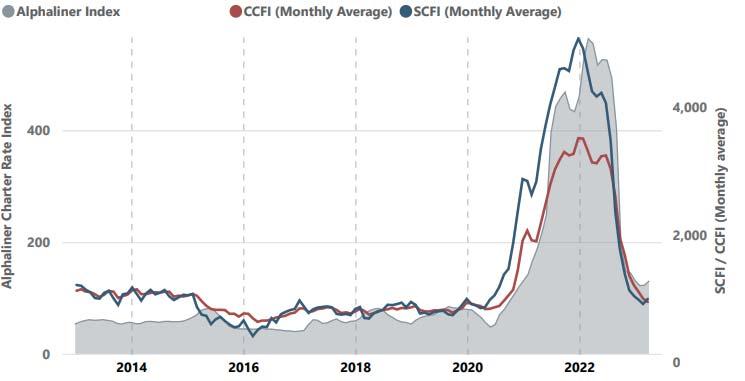
5 The degree to which the Pandemic has shifted supply chains away from China. Will this accelerate and what does this mean for port investments?
5 The entire China strategy is in a state of flux with moves to boost local demand and shift away from export-orientated middle value goods. Emerging nations will take an increased market share, but correctly formatted port capacity is not there yet.
It doesn’t look like the pre-Covid pattern will emerge unaltered. The freight market is heading downhill, and the only uncertainty is how deep the hole will be.
WHAT CAN THE LINES DO?
Before considering the port implications it’s worth looking at the potential moves that lines will make to mitigate these issues. Scope for manoeuvre is quite limited:
5 Capacity can be absorbed by slow steaming and rerouting longhaul trades. This only indirectly impacts the level of freights, and in any case average liner speeds are at a ten year low already.
5 There is scope to cancel and delay orders as has been done in the past, but demand for other ship types is strong and yards are not likely to be cooperative. The costs will be high.
5 Scrapping is an option and seems certain to increase –especially for older tonnage in the mid-size ranges.
5 The degree to which shipping lines have embarked on alternative fuel strategies, often without a clear-cut cost
benefit analysis versus more conventional options, seems likely to slow. Making well intentioned ‘green’ moves will become less affordable.
5 They can squeeze their suppliers. The latter will be partly focused on the port sector.
IMPACT ON BOX PORTS
So, what happens when your customers’ revenues collapse?
The focus will be on spreading the pain. Bunker suppliers and other providers of consumables will be pressured, but what about the terminals? In the past, lines faced with a weakening bottom line have sought to pressure stevedores for lower rates and discounts. These moves have not gone down well given the level of investments made in terminals and continuing pressure to provide further, deeper, capabilities.
For established high volume terminals the response has been to resist by seeking to provide essential capabilities and to maintain margins by increased productivity. For major terminals this will continue, but it is important to note that in the major port ranges it is increasingly difficult to differentiate between terminals given the overall level of investment. Also, the supply/demand balance will weaken.
The degree to which this will focus demand on line-owned terminals at the expanse of common-user facilities will also undermine the latter facilities, although the alliance restructuring anticipated will provide some scope for negotiations here.
Elsewhere the emphasis will be on bringing new capacity on-line, in the emerging markets as they increase their role in the trades. This means additional handling capacities for much larger vessels. Close focusing of attention on these situations offers real potential for developers and investors. Demand will be strong here, and the major lines will be obliged to serve these markets or see their role decline rapidly. This is where the opportunities lie.
CONTAINER PROSPECTS For the latest news and analysis go to www.portstrategy.com JUNE 2023 | 27
8 Figure 1: Container market indicators since 2014 (source Alphaliner)
The question now is what did the lines do with all this cash? Have they deep enough pockets to survive through a prolonged downturn?
‘‘
EXCLUSIVE DEALERSHIPS
WE ARE THE EXCLUSIVE DEALER FOR SEVERAL TRIPLE A BRANDS IN THE PORT EQUIPMENT INDUSTRY. OUR CLOSE CONNECTIONS WORK TO YOUR BENEFIT: YOU HAVE ACCESS TO SHORT SUPPLY LINES AND A WIDE RANGE OF PRODUCTS. WHETHER YOU’RE BUYING, LEASING OR RENTING, GPE OFFERS DIFFERENT FINANCING OPTIONS.

THANKS TO OUR NETWORK OF LOGISTICS EXPERTS, YOU’RE ALWAYS SURE YOUR MACHINE WILL ARRIVE PUNCTUALLY, NO MATTER WHERE IN THE WORLD YOU NEED IT.
WATCH ALL THE REEFERS, ALL OF THE TIME, WITHOUT TAKING A STEP
Energy monitoring. Not knowing is not an option.

IDENTECSOLUTIONS.COM
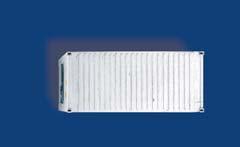
BETTER TOGETHER
FRAMEWORKS FOR ANALYSIS
Are you a government agency considering implementing a port master concession? The WAPPP* Port Chapter has developed two simple frameworks that can help evaluate the opportunity
FACTORKEY QUESTIONSNOTES
1Legislation/Port development policy
2Port governance/ Regulatory oversight
Have the national and local legislation and policies been up to the task?
Has the regulatory function been appropriate and effective?
3Strategic/Political issues Has the port ownership remained in the hands of the original concessionaire, and has their behaviour been acceptable?
4FinancingHave any issues been encountered in financing major port projects?
5Length of leaseWith hindsight, is the lease period considered to be the right length?
6Clawback provisionsHas it been necessary to invoke any clawbacks?
7Prices/Tariffs/RentsHave port prices and rents been maintained at acceptable levels?
8Level and suitability of investment in capacity Has the promised (and appropriate) investment in capacity and facilities been made?
9Level of inter-port competition Has there been sufficient inter-port competition in the market?
10Terminal operatorsHave there been any issues with major port tenants?
There are a number of examples of port master concessions where governments, mainly in developed nations, have chosen to grant concessions to the private sector for the role of a landlord port authority. Ports such as Geelong, Adelaide, Brisbane, Sydney (Botany), Melbourne and Newcastle in Australia, and Piraeus, Thessaloniki and most recently Igoumenitsa in Greece have seen control of their port authority companies, holding long-term leases, move to private sector investors in the main (Piraeus was sold to the Chinese state-owned entity Cosco).
Some emerging nations have also pursued this policy, such as Madagascar and more recently Nigeria. Other countries are considering it, for example, Brazil, although the policy direction seems to have recently changed with a new government.
Geneva, WAPPP is a global non-governmental organisation that promotes best practices in PPP to align with UN SDGs. This article is authored by Neil Davidson and Erik Wehl, of the WAPPP* Port Chapter. www.wappp.org
The legislative framework under which the master concession functions must be considered. Is there an overall national policy for the development of ports in national jurisdiction and has it worked?
Have the duty/guardianship priorities of a public port authority been reconciled with the natural profit maximising motive of a private master concession holder? Have some aspects of port regulation such as security and environmental matters been picked up by federal or national-wide regulators? Has the port master concession holder performed to required levels?
The question of foreign ownership/control of strategic assets is key, as is national security objectives. Has there been a change in the ultimate ownership of the master concession holder during the lease period?
Financing of major infrastructure projects at ports is often shared between state and local government/port authorities. Has the privatised landlord port authority made and met its commitments? Have the differing expectations of the level of return on investment between the public and private sectors been reconciled?
Given that one of the primary roles of a landlord port authority is investment in long-term infrastructure such as quay walls, a long lease period is usually called for (in Australia 99 years was used in some cases). There is also the issue of the wider asset base relative to revenue generating capability (real estate infrastructure, landside connection infrastructure etc.) and maintenance of same; some of these assets do not include revenue generating activities on their own. However, circumstances can change radically over such long periods and some parties feel lease periods are too long.
There should be protection built into the concession so that if the master concessionaire has sold off certain assets, the monies can be clawed back by the government. However, defining which assets should be subject to this provision can be complex.
Pricing powers of master concession holders is a thorny issue, given that their primary aim will be to maximise profits (the same as the private terminal operators in the port). Has regulation been necessary or not? If so, has it worked? Master concessions often result in the creation of local monopolies. There is also possible vertical integration across the supply chain by the master concession holder.
Linked to both the length of the master lease and the pricing controls, there is the need to ensure that the master concessionaire has invested in additional capacity at the port as and when required. Private companies take a different view to publicly-owned ones. Plus, there may be other types of important investment which may not directly generate a positive NPV but generate positive externalities etc for the neighbourhood (e.g. initiatives to reduce noise pollution) or when it comes to business development (e.g. energy transition), which may require a subsidy from municipality or region to make financial sense for the PA. Is the private partner committed to such type of investments?
Given the very long length of master concessions there may have been new competition and entirely new port entrants to the market. So even if a master concession has a natural monopoly to start with, this may not be the case decades down the line.
Relationships with existing terminal operators in the port (who may be competitors of the master concession holder) are relevant.
The value and risks of this approach – effectively monetising strategic assets that have previously functioned as public bodies, and which must retain a remit well beyond simply making profits – has been subject to a great deal of often heated discussion. Australia and Greece in particular have seen in-depth work carried out to assess the efficacy of the policy, and opinions vary widely. Politicians, financiers, academia, “neutral” observers and the industry itself often have different agendas.
In order to assist interested parties in analysing past deals, and consider possible future ones, the WAPPP Port Chapter has developed two simple frameworks – one to help look at those port master concessions that have already been granted, and the other to help weigh up whether a particular country or location has the necessary ingredients for the policy to stand a chance of being successful in a future master concession deal.
The frameworks take a deliberately straightforward
8 Table 1: Framework for Analysing Previous Port Master Concessions
PORT MASTER CONCESSIONS
For the latest news and analysis go to www.portstrategy.com JUNE 2023 | 29
*Based in
The leading terminal in the Mediterranean












cspspain.com
Member of
approach. This is not to say that the task of analysing port master concessions is simple – far from it in fact. Rather, the aim is to provide an “entry-level” foundation, highlighting the key factors commonly seen. These factors must be considered in the context of the stated goals, aims and reasons used to justify port master concession policies, for example generating income for the public sector from port assets, facilitating greater investment or increasing port efficiency (and note again the above comments about the varying opinions on the value or otherwise of the policy).
ANALYSING PREVIOUS MASTER CONCESSIONS
The following framework uses key questions for individual factors. The notes column provides some guidance on how to consider each of the key questions. A simple traffic light system could be applied to evaluate the result of the analysis by weighing up the success or otherwise of existing port master concessions. Red/amber/green colours may be used to illustrate whether any issues and obstacles encountered as a result of the master concession should be regarded as serious, manageable or limited/absent. The judgement in each case is of course ultimately subjective, but ought to be based on reviewing as extensively as possible the available objective evidence for each of the key questions.
There are ten key questions to be considered – Table 1ranging from high level policy, strategic and regulatory matters, to the finer detail of tariffs, rents, competition and port tenants, in particular terminal operators.
It must be said that analysing the Australian experience in particular is complex and challenging. There are numerous port master concessions, each under different state jurisdictions. There is little federal (national) level involvement in the master concession process and in subsequent governance other than meeting statutory requirements. It is at a state level where the main ongoing governance takes place which of course makes sense as it is the state that is the ‘seller’ and the recipient of the concession revenue. The exact nature of this governance varies from one port to the next, taking into account local factors ranging from macro political considerations to local needs. There is of course some uniformity but also an influential bespoke element. Added to this, some Australian port authorities were concessioned a long time ago, others more recently – the process has been around for over 25 years. Some master concessions were priced too low, others much too high, it is claimed.
There are also micro level issues in port master concessions that are highly significant. There is the issue, for example, of new investment benefitting some terminal operators active in the same sector more than others – as can currently be seen to be the case with the installation of new rail links in the Port of Melbourne. Victoria International Container Terminal (VICT), known to be the terminal with the highest per square metre concession costs, will not be a main beneficiary. The new Coode Rail Terminal, featuring two rail sidings, both able to handle 600m trains, is located adjacent to the Swanson Dock East International Container Terminal and in fairly close proximity to the Swanson Dock West International Container Terminal but some way from Webb Dock where VICT is based.
Analysing the Greek experience is also not without challenges. Piraeus is a large, multi-purpose port with a landlord port authority whereas Igoumenitsa is a small passenger ferry port and effectively an operating port authority with a small, niche customer base. The Piraeus port master concession was awarded to Chinese operator Cosco
CATEGORYFACTORS
National governance systems
Strong rule of law/Political stability
Quality, power and capability of regulatory authority
Absence/Control of corruption
Voice and accountability
Market and competition
Market stability and predictability
Effective inter-port competition
Absence of political/strategic concerns about foreign ownership
Nature of the port authority/company
Scale and activities
Institutional structure
Ethos and role
and so any analysis can easily be over-shadowed by the nature of the foreign ownership whereas Igoumenitsa was awarded to a consortium headed by the Grimaldi Group, the port’s main ferry customer.
ANALYSING POTENTIAL MASTER CONCESSIONS
The following framework is designed to be used when weighing up whether proposed future port master concessions have all the necessary ingredients to deliver a successful and smooth result. Building on the experience of past master concessions, it takes a top-down approach with three layers of assessment.
5 Firstly, the national governance systems (what is the rule of law and regulation like, is corruption an insurmountable issue and so on).
5 Secondly the nature of the market in which the port operates, and the competition which exists in that market.
5 Thirdly the nature of the port authority itself (what type of port is it, how is it structured and what are its aims).
Collectively these factors combine to influence whether a port master concession policy stands a chance of working, and the list of criteria is long and extensive.
At the national level, assessing whether a particular country has the necessary rule of law, absence of corruption and voice is challenging, and subject to a significant degree of subjectivity. At the market and individual port level, things become more concrete and measurable. The port market should be capable of detailed analysis, and existing and potential new competition for the port can be assessed.
Ultimately, the specific nature of the port authority is likely to be the key driver of success. In simple terms, establishing a port master concession for a small, single cargo sector port, run as an operating port authority should be more straightforward than that of a large multi-purpose landlord port. That said, small, single cargo ports are more likely to have just one or two main customers (especially in the bulk and neo-bulk cargo sectors), who therefore have a strong bargaining position when it comes to determining who the holder of a master concession is going to be. The same can be true for small ferry and ro-ro ports.
Clearly it is unlikely that any country or location could meet all of the criteria in the framework. Nevertheless, the framework does help to identify aspects where the conditions are supportive for port master concessions, and those areas where work would need to be done or protections built into an agreement. Before all of this, though, there remains a philosophical and political discussion to be had about whether control of port authorities is best served by remaining in public hands.
For the latest news and analysis go to www.portstrategy.com JUNE 2023 | 31
8 Table 2: Framework for Analysing Potential Future Port Master Concessions
PORT MASTER CONCESSIONS
DECARBONISATION PRESSURE ON
The recent Coastlink Conference saw wide-ranging discussions on energy and future fuels, sustainability, resilience and the ‘new normal.’ Felicity Landon presents the highlights
8 The importance of good connectivity to/from port platforms was a recurring theme and the need for more recognition of this on the part of government
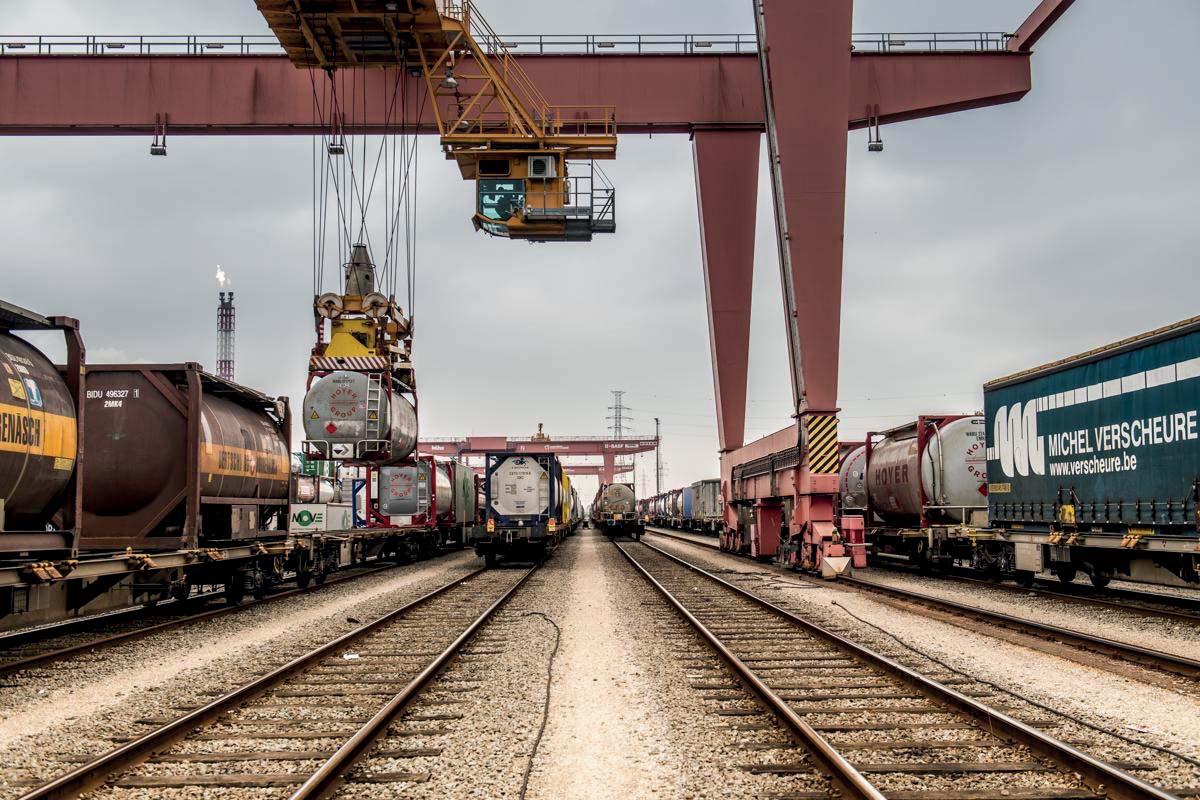
The pressure to decarbonise comes not only from current and future regulation but also from across the global supply chain – including industry, business, customers and end consumers. This was a key ‘takeaway’ from the 2023 Coastlink Conference, held in Liverpool, UK, 3-4 May, where, whatever the topic, sustainability and decarbonisation were never far from the discussions.
“Customers are already seeking to see freight operators reduce their emissions,” said Michelle Gardner, Deputy Director, Policy, at Logistics UK. “Our members tell us their customers are coming to them and wanting answers on how they are seeking to reduce emissions today and on the long journey to Net Zero. That is really focusing minds at the moment.”
The industry is under huge pressure, said Maurice Delattre, Area Manager, Port of Amsterdam International. Explaining Amsterdam’s ambitions as a hub for alternative energy production, with 80 hectares earmarked for the development of bio/synthetic fuel and the circular economy, he said: “Why are we focusing on these activities? Because the key characteristics of our region mean an urgency to accelerate the energy transition.”
The region’s strong industrial clusters – energydemanding steel production, port activities including bunkering, and the massive aviation operations at Schiphol – are all completely dependent on fossil fuel, said Delattre.
“With this in mind, we as a port work on how we can make sure to get rid of those dependencies in the future, together with our partners.”
Every port needs to have a clear strategy and vision in
place for sustainability and energy transition, said Delattre, who noted that the Port of Amsterdam “is not about generating double digit growth anymore – it is about generating value for society”.
We can and must decarbonise logistics, said David Browne, General Manager of Maersk. Opening the session on Sustainability and the Energy Transition, he challenged the International Maritime Organization’s Marine Environment Protection Committee, due to revise the IMO’s GHG Strategy in July, to be more ambitious.
Describing the IMO’s Net Zero plan towards 2050 as a bit ‘sketchy’, Browne said: “I hope to see much greater ambition than the initial GHG strategy and a strong recommendation of what milestones need to be achieved, then supported and approved by governments.”
However, he said: “That will not stop us [Maersk] going forward and taking our own actions and ramping it up, because we have to deliver our goal of Net Zero across our whole business by 2040.”
The fleet is the right place to start, but Maersk is taking it a step further and looking to decarbonise across the whole end-to-end supply chain, taking in all the products and services it offers through the supply chain, said Browne – and that includes the use of other lines’ vessels for some shipping.
He gave details of Maerk’s green methanol fuelled 2000TEU feeder vessel now being built and due to enter operations later this year, to be followed by a series of 16,000TEU capacity vessels powered by green methanol joining the fleet.
COASTLINK CONFERENCE REVIEW 32 | JUNE 2023 For the latest news and analysis go to www.portstrategy.com
Because of the size of its fleet, Maersk is in a position to assist the industry in moving forward on decarbonisation and future fuels, noted Browne. Other operators with smaller fleets which don’t have the opportunity to run a test case, “might be able to learn from our successes or failures”, he said.
Grant Hunter, BIMCO’s Standards, Innovation and Research Director, focused on a different type of regulation – the charter party agreements created by BIMCO which are central to the way the global shipping industry works.
Some of the standard bi-party contracts go back 100 years and are not fit for today’s industry, said Hunter,
“They can create inefficiencies in our industry that we need to iron out,” he said. “We need to work with the entire supply chain pipeline, not just between shipowner and charterer. There is no point in having an agreement if it is not aligned with what’s in the sales contract.”
Using just-in-time arrival can deliver decarbonisation, “but when you get to Net Zero, do you just go back to the Wild West, speeding around again? No, because there are going to be more expensive fuels. We need a smooth and efficient industry.”
More joined-up thinking was needed to make shipping more efficient, said Hunter. “We cannot reduce emissions from shipping if it is just left to the owner. We have to think about a brand-new model for shipping and move away from the charter parties of old.”
A new ‘holistic’ business model is needed for the 21st century, providing efficient and inclusive shipping, he concluded.
INLAND SOLUTIONS
As well as shortsea and feeder shipping, Coastlink’s partners focus on the intermodal transport networks through the ports that support the sector.
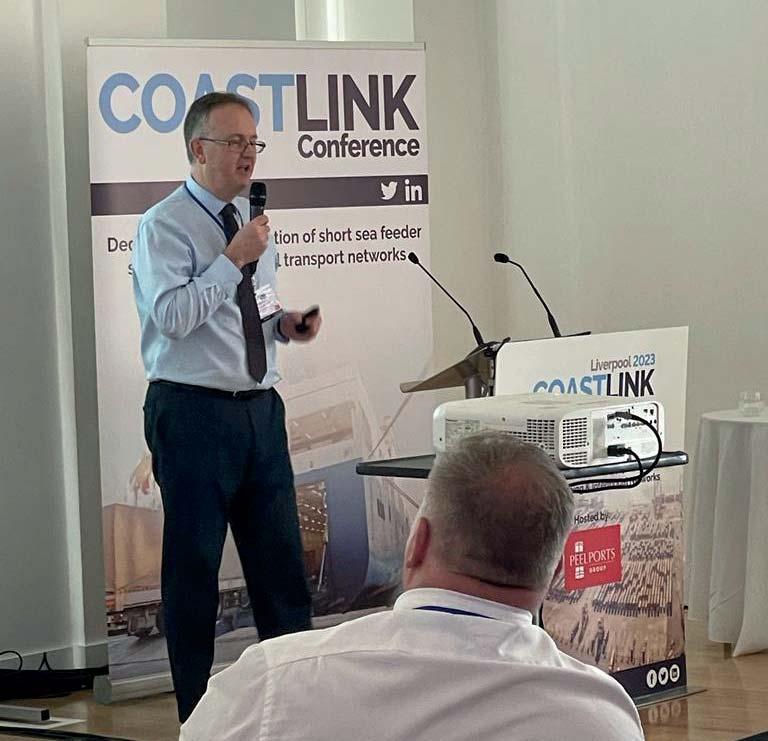
Stephen Carr, Group Commercial Director, Peel Ports, discussed the role of trucks in ports and shortsea/coastal shipping where the distance being covered is so small it doesn’t justify using rail. With the worsening shortage of haulage drivers, “surely the answer is to let the maritime leg do most of the work and let truck do the final miles delivery”, he said.
Challenging the audience on some stats, he explained that 12 per cent of containers coming into Liverpool never leave the port estate; 25 per cent never travel outside Merseyside; and 62 per cent never travel more than 50 miles. Given the age profile of drivers, people leaving the sector, and difficulty in recruiting people, the haulage industry is a ticking time bomb, he said. “But remember the 50-mile radius. Proximity drives driver productivity gains.”
Shorter distances make truck driving more attractive – a day’s job instead of being on the road – and each driver can cover several deliveries a day instead of driving hundreds of miles to and from southern ports, said Carr.
Geoff Lippitt, Group Commercial and Strategy Director, PD Ports, analysed how intermodal, shortsea shipping, ro-ro, lolo and last-mile delivery road haulage can create resilience and improve capacity for ports and operators.
Outlining PD Teesport’s strategies to promote resilience, he said: “The problems of tomorrow have to be dealt with
well in advance of them being on your immediate horizon. Ports are about coping with change. In the last 50 years, Teesport has seen the rise and fall of oil – exploration, oil from the North Sea and decommissioning; the rise and fall of steel, twice; offshore wind; the chemical industry fragmented; and the rise of container business, all as a result of the UK changing its markets.”
These changes were not affected by Covid or Brexit but by market and global economic factors, said Lippitt. He highlighted how the use of rail can make a port more competitive in areas larger than would be the case when using road transport.
Justin Atkin, UK & Ireland Rep’ for the Port of AntwerpBruges, also emphasised the importance of connectivity. “Every berth in Antwerp is rail connected – there are more than 1000 kilometres of rail in the port that we own and maintain,” he said. “We have 250 weekly container shuttles to 70 destinations in 17 countries and have seen new shuttles introduced and services expanded this year.”
While acknowledging that the scale of the UK means a different picture for inland waterway freight, he explained that Antwerp-Bruges handles 230 weekly container barges to more than 90 destinations in six countries.
GOVERNMENT INTERVENTION?
A question from the audience: should the government mandate that goods only be delivered from their local regional hub port, making use of transshipment? There was some debate about how much government intervention was required to drive more sustainable logistics.
Claudio Veritiero, CEO of Peel Ports Group, said: “We are fortunate in the UK to have a model, compared to a number of other areas of UK infrastructure, where we are relatively deregulated. I think as an industry it works and the government has taken a relatively hands-off approach.
“However, I think there are areas where we could do with more help – for example, the role of ports in regional economies and how you facilitate that. Port connectivity would be a key area, which the government could do more around.”
COASTLINK CONFERENCE REVIEW For the latest news and analysis go to www.portstrategy.com JUNE 2023 | 33
8 Stephen Carr, Group Commercial Director, Peel Ports, identified the taxation of those elements of transportation that are not socially good as “…a way of nudging the market to a solution instead of forcing the market to a solution.”
‘‘
Our members tell us their customers are coming to them and wanting answers on how they are seeking to reduce emissions Logistics UK
The future of short sea shipping and intermodal networks

Hosted by:
Did you miss it?
34 Papers, Presentations plus Video Content. 27 EU & UK industry leading speakers across the shipping, ports, and logistics sectors. Now available to purchase for only £175
Content highlights include:
Short Sea Shipping: simple yet complicated. Keynote address from Roger Megann, Managing Director,


What mode of transport uses ports? Stephen Carr,

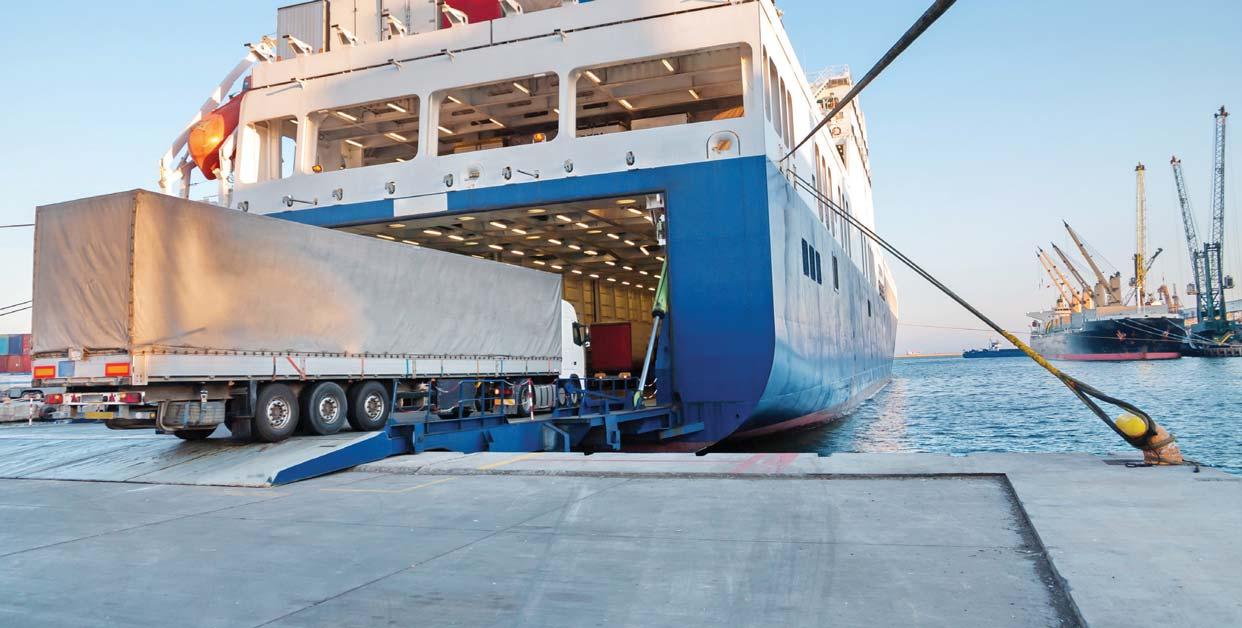
Port of Amsterdam – at the forefront of the transition. Maurice Delattre, Area Manager, Port of Amsterdam
Port of Antwerp-Bruges – providing total intermodal connectivity solutions. Justin Atkin, UK & Ireland Representative, Port of Antwerp-Bruges
Sponsors: Supporters:
Link to purchase and download: www.portstrategy.com/coastlink/buy/2023-conference-papers
visit: coastlink.co.uk contact: +44 1329 825335 or email: info@coastlink.co.uk




Media partners:

#Coastlink
GREENPORT INSIGHT FOR PORT EXECUTIVES MOTORSHIP MARINE TECHNOLOGY THE
8 The session on Sustainability and Energy transition saw a call from Maersk for IMO to be more ambitious in its forthcoming revised GHG strategy
Mike Garratt, Chairman, MDS Transmodal, noted the relative independence of the ports industry – “but the flip side is that the government doesn’t always understand what the ports and shipping industry can contribute”.
During his analysis of freight and modal trends, he pointed out that in the UK 62 per cent of shortsea traffic landed south of Ipswich, despite the great majority being bound for the Midlands and North. In developing the case for better connected ports within a green agenda, the government should look not just at user benefits but also at non-user benefits, such as reductions in emissions and congestion, said Garratt.
Analysis shows that unit load cargo is switching to northern ports and to unaccompanied modes, according to Garratt. “That itself encourages planning policy and infrastructure investment to facilitate that. Warehouse capacity generally is also driving north and expanding. Shortsea shipping has the capacity to support a green agenda by switching to alternative fuels.”
However, he noted a distortion in UK: “The railway industry does get grants for routes that would otherwise not be viable. It is sort of available to shipping but in practice not. It is extremely difficult to introduce and not distort the market –because it is not easily defined and the other end is likely outside the UK.”
The discussions also touched on government’s role in the provision of on onshore power in ports. Claudio Veritiero said: “If the demand is correct, we will put the investment in – but we need parallel investment in energy infrastructure.”
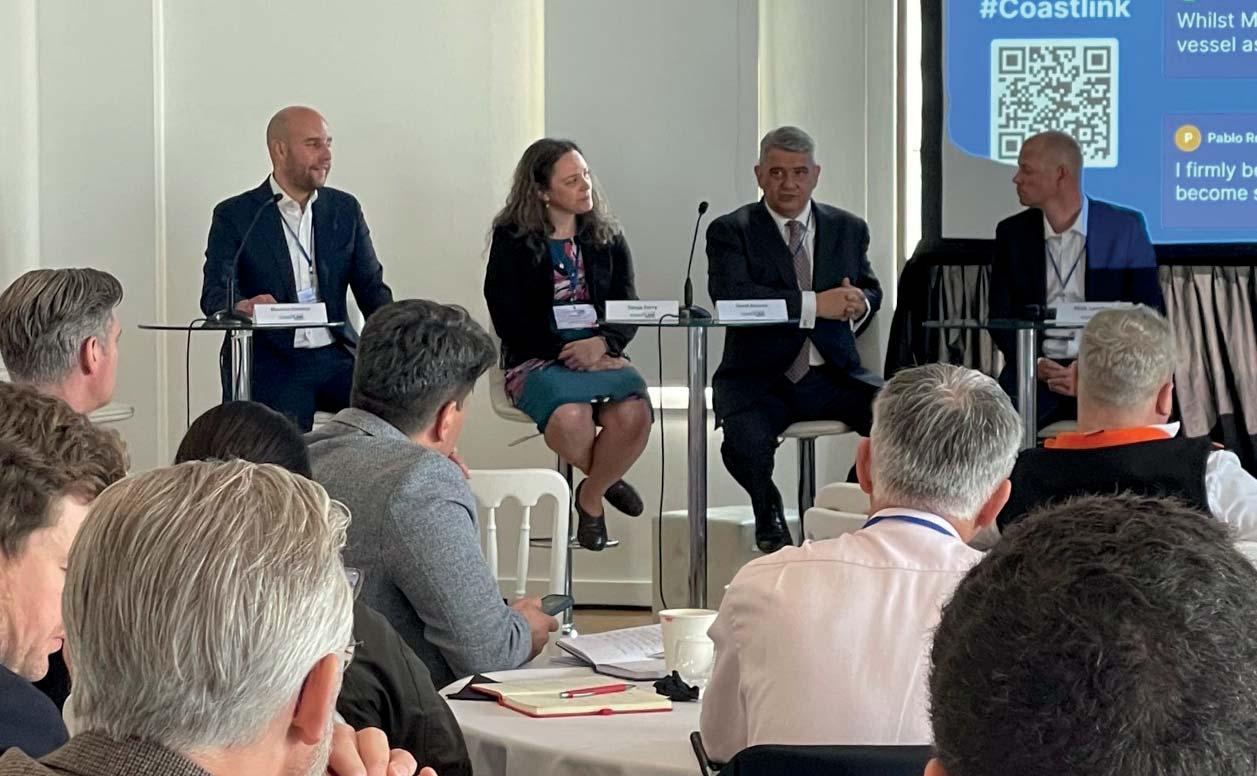
The British government policy is to facilitate some of the innovation and investment through grants, he said, rather than a clear and robust “this is the way you are all going to go as port operators and shipping lines”.
Stephen Carr said: “I don’t think the government should interfere in the market in terms of dictating along which route goods should flow. What the government should do is tax those elements of transport that are not socially good: a way of nudging the market to a solution instead of forcing the market to a solution.”
Ultimately, carbon is going to be taxed in the supply chain,
“because ultimately we want to drive sustainability”, said Justin Atkin. “Some are doing more than others in terms of a decarbonisation target. I think in the end, the EU and the UK government will end up adding carbon costs to the supply chain. That is why we are making the effort to make first and last mile more efficient, by taking the long haul on to rail and coastal shipping.”
Geoff Lippitt said government intervention was required in some form. “They already intervene where, for example, large project cargoes come into UK – these have to come to the nearest port for delivery.”
He suggested that there should be some sort of mechanism that recognises where the nearest port is (relative to the cargo’s origin/destination). “Shipping companies don’t always know that. It is very much getting into the mind of the shipper/ end users.”
UK: NEED FOR SPEED
Logistics UK is concerned generally about the UK falling behind on decarbonisation, noted Michelle Gardner. “Other countries are moving ahead in terms of driving change. We have got policies from government, but don’t feel we are moving fast enough.”
The UK government must set a growth target for water freight and have the right policies to help businesses go faster and further towards Net Zero, she said. “Certainty of policy is essential for businesses to invest in long-term capital assets. We have been calling for a water freight target to be set and this must come with a coherent plan to make sure it can be delivered.”
Gardner also said there was a need to protect land for wharves and access, “as access to wharves and development of ports is a direct obstacle to expanding water freight inland”.
She called for a coordinated and integrated approach to infrastructure planning, investment and delivery that supports a UK-wide freight network and modal shift and said the government must work with planning authorities to raise awareness of the logistics sector. “Innovation funding should be focused on the delivery of a green, efficient and integrated logistics sector. We want to make sure government delivers.”
CONFERENCE
For the latest news and analysis go to www.portstrategy.com JUNE 2023 | 35
COASTLINK
REVIEW
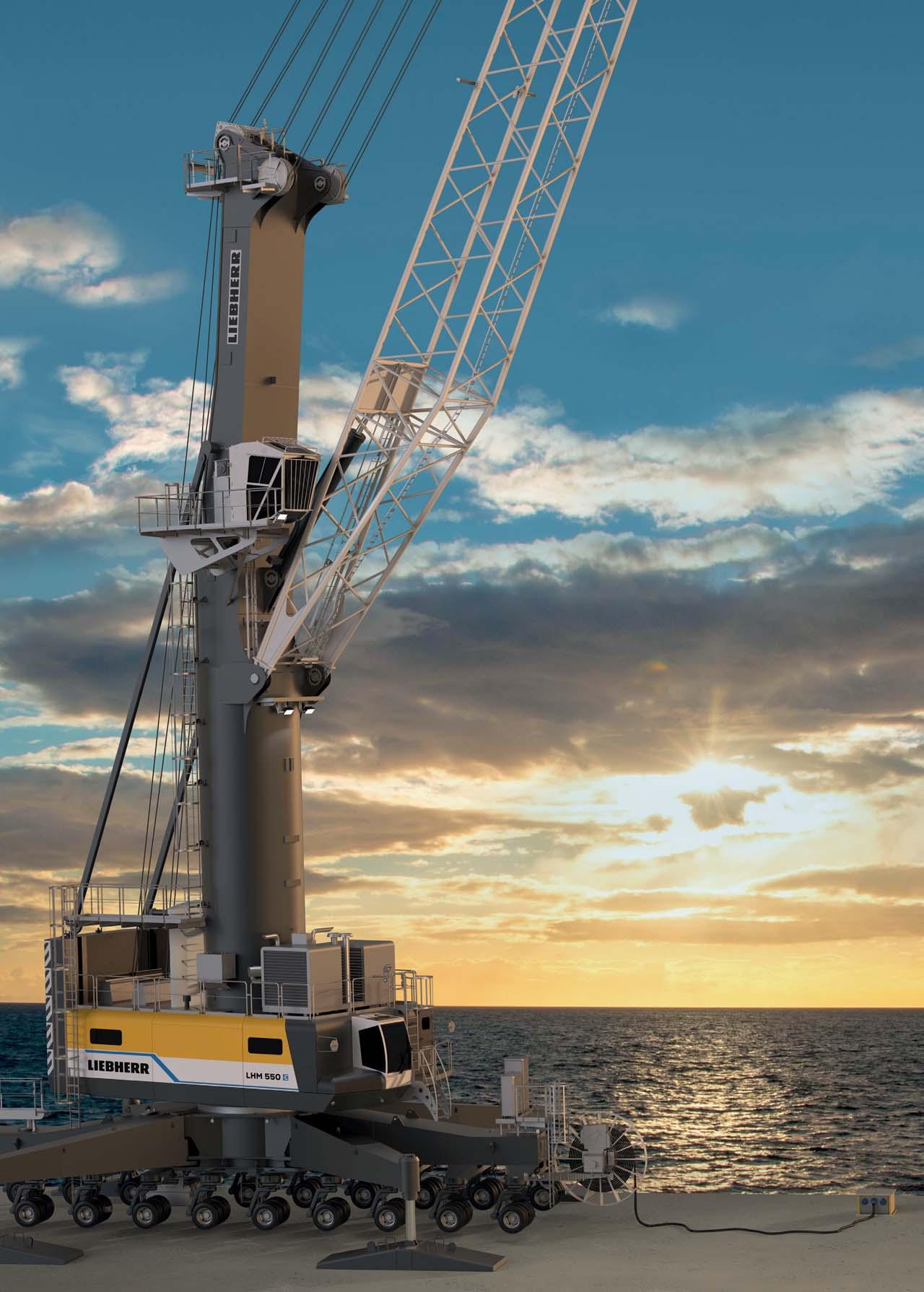
The new LHM Designed for the future of maritime cargo handlingmore digital, more automated and smarter. www.liebherr.com
Discover
Mobile harbour crane
RUSSIA BUILDS DREDGE CAPACITY
Russia is setting about an ambitious dredger newbuilding programme. The jury is out on whether it will work – the scale of the works and technical issues are challenging.
Oleksandr Gavrylyuk reports
This year, Alliance, a privately held towing and tugboat company operating at Russia’s key Baltic seaport of St Petersburg, has bought a foreign-made non-self-propelled dredger to enter the domestic dredging market.

With its 16 cubic-meter large bucket, the new machine will be one of just three dredgers of the type available in the world’s largest country extending throughout the bulk of the Eurasian Continent, according to Aleksey Milovantsev. Director General, Alliance.
Meanwhile, Hydrographic Company (HC), a subdivision of the state nuclear energy corporation RosAtom, is going to acquire two dredging vessels this year. The company plans to excavate 10 million cubic metres of spoil under five various projects to be accomplished in Russia’s Arctic waters in 2023. With part of the works to be delegated to overseas (most likely – Chinese) contractors, the two dredgers will be instrumental in performing the remaining scope.
With HC forecast to need at least a dozen dredgers for its Arctic undertakings by 2026–2027, it plans to start placing orders for their construction with domestic yards. It has, according to Aleksandr Bengert, Director General, HC, already been in talks with Russia’s leading United Shipbuilding Corporation (USC).
In general, Russia’s dredging fleet has long ago become obsolete and thus incapable of meeting formidable challenges. Prior to Moscow’s invasion of Ukraine, it was mainly Van Oord, Boskalis, Jan de Nul and DEME that carried out the most ambitious projects in Russia. However, with the launch of the Kremlin’s unprovoked and brutal war, the Big Four European dredging operators were forced to withdraw from Russia. As a result, Russia has faced an acute shortage of dredging capacity and soaring prices for dredging works.
For instance, the aggregate capacity of all the domestic hopper dredges makes up only 39,000 cubic metres compared with 240,000 cubic metres of that of Belgium’s DEME alone, while dredging works rose by 30 per cent in price last year, according to the estimate of Aleksandr Bengert.
In the meantime, Moscow is determined to grow its seaports’ infrastructure and expand handling capacity despite western economic sanctions. Last year, the total annual capacity of its harbours increased by 36.6 million to 1.3 billion tonnes. This year, it is expected to grow four per cent more and keep expanding in the immediate future.
KEY PROJECTS
Such a growth scenario requires a large amount of dredging works. Specifically, RosAtom, which is in charge of improving the nation’s Arctic infrastructure, is supposed to arrange the excavation of 13.5 (including the 10 by HC) million cubic metres of spoil all along the Northern Sea Route (Russia’s part of the Northeast Passage) this year.
RosMorPort, an arm of the country’s transport ministry responsible for the comprehensive development of the country’s seaports’ infrastructure, is intending to orchestrate the dredging of 23.9 million cubic metres this year, up three per cent on 2022, as reported by Andrey Boldorev, Head of RosMorPort’s Investment and Strategic Development Department. Half of the figure, or about 12 million cubic
metres, will be extracted from the Volga-Caspian Sea Navigation Canal to make it 4.5 metres-deep and, in such a way, navigable within the International North-South Transport Corridor (INSTC). Last year, the canal saw the removal of five million cubic metres, making it 4.2m deep.
To achieve its goals, the Kremlin has to upgrade and replenish its dredging facilities. For example, just for internal waterways, it is planned to construct 101 technical vessels by 2024, including eight dredging, 54 service, 27 sounding, six ecological and six auxiliary ones.
Building the new ships, however, is not going to be an easily achievable task. From 2019 to 2022 (i.e. before Moscow’s fullscale aggression against Kyiv and the successive exodus of the European dredging operators from Russia), 25 such vessels were built in Russia, comprising just four dredging, six service, 14 sounding and one ecological one.
Russia has to make major investments in new dredging capacity if it is to realise its port expansion plans
Nonetheless, Moscow is trying to begin producing its own hopper dredges. RosMorPort is about to initiate devising a 1000 cubic meters capacity hopper dredge this year. The federal enterprise has incorporated the construction of two such machines for the Caspian Sea and that of Azov respectively into its investment programme for 2025–2029. In addition, the St Petersburg-based Almaz design office is going to start originating a concept for a 95m-long and 17m-wide dredge with a deadweight of 5500 tonnes, displacement of 9200 tonnes and hopper capacity of 4000 cubic meters, in order for the first vessel to be delivered in 2027. After testing the new machine, the design office is planning to proceed to develop a design for a 117m-long and 21m-wide dredge with its deadweight of 10,700 tonnes, displacement of 17,500 tonnes and hopper capacity of 8000 cubic meters.
All these things will take time. Yet, RosMorPort needs to deploy up to 20 dredges already this year to deepen only the internal waterways. As it does not have the sufficient quantity, it is going to enlist the missing capacity from private companies.
8 Russia unable to draw any longer on the expertise of the Big Four dredging companies Boskalis, DEME, Jan de Nul and Van Ord, has embarked on a major dredger newbuilding programme
DREDGER NEWBUILDING PROGRAMME
For the latest news and analysis go to www.portstrategy.com JUNE 2023 | 37
‘‘
WHO IS MAKING HAY?
Make hay while the sun shines is a famous phrase - while the Federal Government in Canada has deliberated the proposed Roberts Bank 2 project, AJ Keyes assesses if any competing port has taken advantage
For the past 10 years, the Vancouver Fraser Port Authority (VFPA) has been waiting for the Federal Government in Canada to approve its longstanding Roberts Bank 2 development plan. This finally arrived in May 2023. So, the obvious question must be, have other ports in the Pacific North of North America taken advantage of this delay?
As Figure 1 shows, the Pacific North market has increased from almost 4.8 million TEU in 2000 to just over 9.0 million TEU at the end of 2022, growth of 2.9 per cent per annum. The drop in volumes for 2009 (Global Financial Crisis) and 2020 (COVID-19 pandemic) are noticeable, although there has been continued growth over the longer-term to confirm the importance of this gateway to North America.
CLEAR PATTERN EMERGES
Key port trends include the continued growth of Vancouver (1.2 million TEU in 2000 to 3.6 million TEU by the start of 2023), the emergence of Prince Rupert (over 1.0 million TEU in 2022) and Seattle-Tacoma (as the Northwest Seaport Alliance), handling 2.9 million TEU in 2000 and 3.6 million TEU last year.
However, if the period when the Roberts Bank 2 project was under environmental review is considered separately, a clear pattern emerges about which ports have been successful, as Table 1 shows. As a whole, the region has increased container volumes by 1.6 per cent per annum over the period, from 7.8 million TEU to just over 9.0 million TEU. However, at an individual port level, Prince Rupert has been the standout facility with its 7.6 per cent per annum growth, albeit that it had a lower starting point of 536,000TEU in 2013. Nevertheless, this DP World facility has still doubled its throughput in less than 10 years.
At the same time, Vancouver (BC) has also surpassed the regional average, recording growth of 2.6 per cent per annum over this same period, as its total throughput rose from just over 2.8 million TEU to almost 3.6 million TEU.
Yet by comparison the other major port in the region, at Seattle-Tacoma (which became the Northwest Seaport Alliance in 2015) generated growth of just 0.8 per cent per annum as its combined total rose from just under 3.5 million TEU in 2013 to just over 3.7 million TEU by the end of 2022.
This assessment of total container port throughput provides an interesting snapshot that concludes the Canadian ports of Prince Rupert and Vancouver (BC) have an increased share of the market, whereas Seattle-Tacoma has seen only limited increases. Indeed, as Figure 2 outlines, in 2013 Prince Rupert accounted for seven per cent of the regional market, with this rising to 11 per cent in 2022, while over the same period Vancouver’s (BC) share improved from 36 per cent to 39 per cent.
By comparison, Seattle-Tacoma recorded a drop from 45 percent in 2013 to 41 per cent in 2022. Yet these numbers do not tell the whole story because in 2016 the Northwest Seaport Alliance was handling 46 per cent of all containers in the Pacific North, which subsequently fell, year-on-year, to 39 per cent in 2020. Indeed, it was only the congestion in Vancouver (BC) over the past two years that likely helped Seattle-Tacoma regain any lost share of regional container activity.
The other drop in share was recorded by ports classified as “Pacific North others,” which primarily consists of Portland, Everett, Anchorage, Dutch Harbour – all facilities generally specialising in smaller ships and regional activities, rather than direct deep-sea calls from Asia.
TARGETTING US MIDWEST
So, the volumes handled by ports in the Pacific North indicate that, generally, the Canadian ports have grown their throughput more successfully than their US counterparts. It is important to note that local hinterlands only play a small part in these ongoing trends. This is because all (major) ports are competing to serve the largescale US Midwest discretionary markets of Chicago, Detroit, and the Ohio Valley. Indeed, the ability to succeed in attracting this cargo is what strongly influences the success of the different facilities.
To be competitive in these US markets means providing sufficient infrastructure, especially as ships have continued to increase in size on the Transpacific. According to maritime advisory specialists, Infrata, at the start of 2012 the largest container ships on this trade route were generally no bigger than 6000TEU, whereas the position today reflects tonnage of up to 18,000TEU (although nearer 16,000TEU is more common in the Pacific North).
So, what have these ports been doing while the Federal Government in Canada deliberated? Well, despite Roberts Bank 2 being the long-term aim for VFPA to meet future container demand, there has been additional capacity generated by port operators, DP World and Global Container Terminals (GCT) at their respective facilities.
For DP World, the Centerm Expansion Project and South Shore Access Project commenced in Summer 2019 and a combination of expansion and reconfiguration resulted in a 60 per cent increase in capacity (from 900,000TEU per annum to 1.5 million TEU per annum) by adding just 15 per cent more land. Two new Super Post-Panamax cranes have also been added, with a 24-container row outreach.

GCT Vanterm, continues to undertake its Phase 1 expansion project that will see two new ship-to-shore cranes and 10 new RTGs added as part of a C$160 million investment to
8 Vancouver has continued to see infrastructure investment, despite the Federal Government’s decade long process to approve the Roberts Bank 2 project
PACIFIC NORTH: CONTAINERPORT DEVELOPMENT 38 | JUNE 2023 For the latest news and analysis go to www.portstrategy.com
raise capacity to 582,000 lifts (an increase of 25 per cent) and to be able to handle 14,000TEU capacity vessels by the end of 2023. The Phase 2 component will increase capacity to 700,000 lifts per annum, up by 20 per cent, and operations could commence in 2026, with build out by 2029. Importantly, additional rail capacity is also planned, with over 50 per cent to be added, taking the total to 580,000 lifts.
At the same time, DP World also continues to expand Prince Rupert. In Q1 2022, the operator entered into a “twoyear agreement to assess the feasibility of an innovative new container terminal project” with the Prince Rupert Port Authority. This second terminal would add a further two million TEU per annum capacity.
However, what is of real significance to Prince Rupert and the wider competitive region is the development of the Ridley Island Export Logistics Project (RIELP). Located on the southern end of Ridley Island, RIELP is designed to offer integrated large-scale bulk transload facilities, breakbulk operation, and off-dock container yard. Collectively, the platform is designed to support at least 400,000TEU per annum of export transload capacity annually, with the potential to increase capacity to 700,000TEU per annum.
This project, due for completion by 2025, according to the Port Authority, will provide a platform for transloading bulk commodities such as plastic pellets, cereal grains, speciality agriculture crops, lumber, pulp, and mineral concentrates to containers for export, with the off-dock facility ensuring empty container storage for the port’s container terminal operations. In short, it represents a potential game changer by helping to generate significant export traffic for the port, an appealing opportunity for shipping lines and railroad service provider, Canadian National.
Clearly, Canada’s Pacific North ports have been busy while the Roberts Bank 2 environmental review process slowly continued, but can the same be said of the US port complex at Seattle-Tacoma?
Well, the Terminal 5 modernisation plan at Seattle is the recent major infrastructure development. After completing the environmental process in 2015, ground was broken on the US$500 million, one million TEU per annum, project in 2019 and the facility was shut for container vessels. In Q1 2022, the first phase was completed, which included four new Super Post Panamax cranes. Phase two is currently underway and due for completion during 2023, resulting in 185 acres of extra space for Terminal 5.
Other projects at the port include an extra 500m of quay for Terminal 18 and expansion to Terminal 46, part of the Northwest Seaport Alliance’s plans to keep pace with larger ships in the Transpacific trades, which have grown beyond the capabilities of the older, smaller, individual facilities.
Such largescale investment projects, like Terminal 5, are needed for the port to remain competitive, but ultimately the desire of the US railroads to help win intermodal traffic for discretionary markets will be the key driver.
LESS INTERMODAL-INCENTIVISED
One port specialist in the region, who wished to remain anonymous, states that US railroad operators serving the Pacific North are “less intermodal-incentivised” than their Canadian counterparts. This is despite the Intermodal Association of North America (IANA) data showing that the long-term growthrate for international containers is growing in excess of three per cent per annum.
While not a large figure, it still reflects continued increases in demand for intermodal rail in a highly established market, that the Canadian railroads aggressively move to capture.
From a Pacific North port perspective, it is the ports of Vancouver and Prince Rupert that have benefitted over the past 10 years and are winning the battle for container cargo.
PACIFIC NORTH: CONTAINERPORT DEVELOPMENT
For the latest news and analysis go to www.portstrategy.com JUNE 2023 | 39
8 Figure 1: Development of Pacific North Port Volumes, Since 2000 in ‘000 TEU
Source: www.dataand.com,
www.dataand.com,
8 Figure 2: Market Share – Based on Port Throughout in Pacific North 2013-2022, by %
ports
Source:
ports
‘‘ 2013201420152016201720182019202020212022CAGR Seattle-Tacoma 3,4623,4563,2463,6163,6653,7983,7753,3203,6963,7360.8% Vancouver 2,8152,9133,0542,9363,2533,3963,3993,4683,7063,5572.6% Prince Rupert 5366187767549271,0361,2111,1411,0581,0367.6% Pacific North Others 990750589586650687700690710700-3.8% Pacific North Total 7,8037,7377,6657,8928,4958,9179,0858,6199,1709,0291.6%
US railroad operators serving the Pacific North are “less intermodal-incentivised”
8 Table 1: Development of Total Container Volumes at Pacific North Ports 20132022, in ‘000 TEU











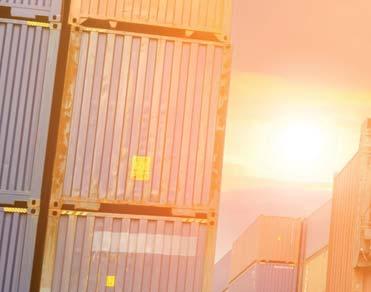
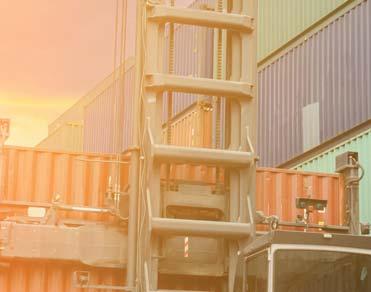
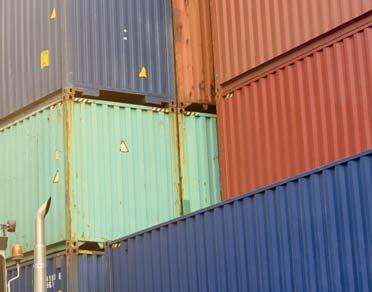

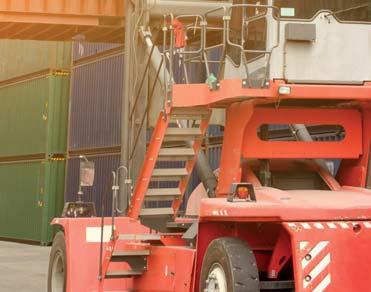
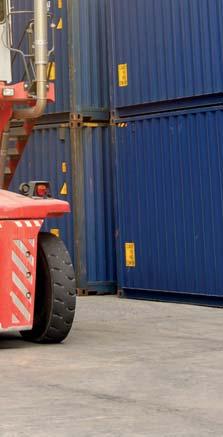




PARTS & ACCESSORIES FOR CONTAINER HANDLING EQUIPMENT Suitable for: Sisu • Kalmar • Konecranes • Terberg • CVS Ferrari • Fantuzzi • Hyster • Linde • Sany • Svetruck • Terex PPM • Bromma • Elme • Stinis • VISIT US ON STAND C78. TVH PARTS NV Brabantstraat15• 8790Waregem• Belgium KEEPS YOU GOING.
MPV PROSPECTS ASSESSED
Demand for multipurpose vessel (MPV) capacity is expected to grow, even against a background of lower economic activity, according to Drewry. Felicity Landon reports
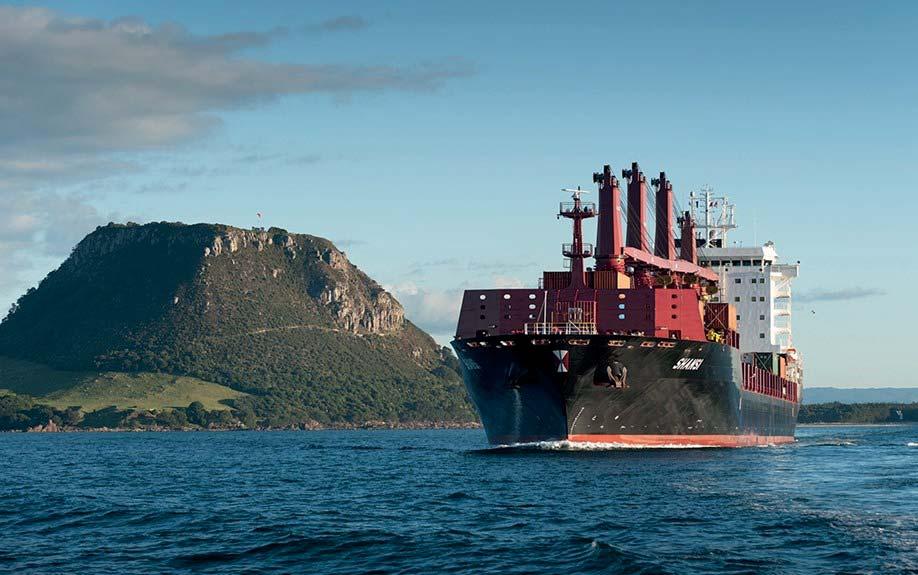
8 The Multipurpose vessel sector is expected to remain profitable despite uncertainties
Volatility is the name of the game across the shipping industry – but the MPV sector, untied from fast-moving consumer goods trends but very much tied to long-term projects, doesn’t reflect the same ups and downs. Overall, the prospects for the MPV sector are positive, according to Ferenc Pasztor, Deputy Head of Research, Drewry.
Unpacking the trends at a recent webinar, he noted that containership and dry bulk day rates were now stabilising after a big fall and MPVs were still seeing some downward pressure. However, to put that in context, the container sector saw day rates settling at about 20 per cent of what they were this time last year and handysize bulk carriers were at about 50 per cent. “MPVs have weathered the situation better and saw a reduction of just 15 per cent, with the caveat that some sectors have seen further volatility,” said Pasztor. “We expect MPV rates to fall again this year, but not even close to the fall we saw with the other two sectors, especially containerships.”
MPV demand is forecast to be relatively stable in 2023 and 2024, he said, although competition for cargoes from the other two sectors will keep a downward pressure on rates even with fairly heavy levels of utilisation.
“Despite a weakening market, day rates are also expected to remain robust from a historical perspective, and we expect [MPV] rates to remain above pre-COVID-19 levels even in our downside scenario.”
ENERGY SECTOR BOOST
The keys to this are the positive outlook in the energy sector, an ageing fleet and a small orderbook, with investment appetite in the sector still limited, said Pasztor.
Energy industry projects are expected to go ahead despite uncertainties. Renewable energy projects that do not require the ongoing import of commodities are being looked at as a strategic option in many countries – but that does not discount oil & gas investment, according to Drewry.
“In oil & gas, any forecasts are highly uncertain. We expect activity in the sector to increase steadily in the next few years, due to strategic interest in energy security gaining appreciation in the de-globalising political environment.”
Despite the volatility, drilling activity has increased, leading to significant levels of import of materials and equipment, said Pasztor. Meanwhile, LNG projects continue to increase and while drilling activity is much more sensitive to oil & gas prices, projects like liquefaction are expected to go ahead regardless.
“As for renewables, and wind energy more precisely, we can see that installation activity is expected to increase even further in our forecast period.”
While oil & gas and renewables are the main drivers for MPV demand, other projects related to energy production and energy storage, and also those related to the midstream, will be key, said Pasztor. Some of this depends on the form in which energy will be transported in the future.
“We see a really strong current increase in projects related to green hydrogen production and other fuels. It is not only the ship fuels that need a solution going forward for decarbonisation but also the wider energy storage and energy flows that will need to be sorted out – whether in the form of ammonia or green methanol or another, and obviously there will be a lot of new infrastructure required to handle all this production. So, we expect a really strong increase, especially post-2030, in large pieces of equipment for these
MULTIPURPOSE VESSEL OPERATIONS
For the latest news and analysis go to www.portstrategy.com JUNE 2023 | 41
We keep companies on the move with the best tyre solutions.


We have build our reputation in port handling tyres with long lasting quality products and undisputed service. By choosing Magna Tyres, you’ll keep your port & terminal operations going, always.
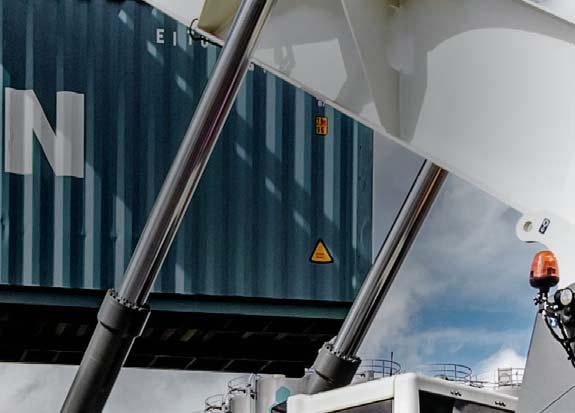
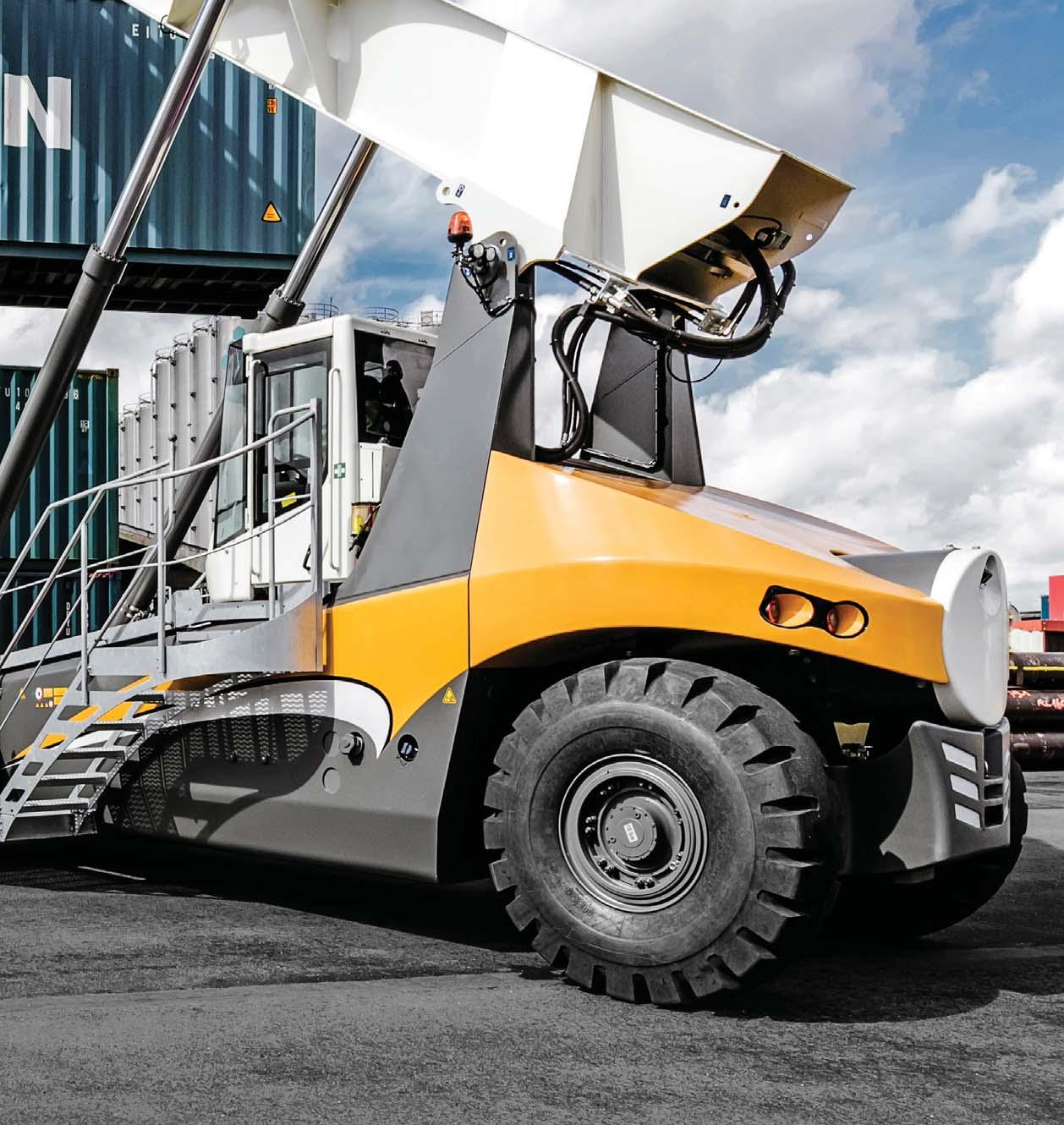
The best reasons to choose Magna Tyres:
• Local personal presence
• Key sizes always available in local warehouse
• Most favorable cost of ownership



• Chosen by OEM manufacturers





Visit our website: ve ting your magnatyres.com
plants that will need to be carried from point of production to final location.”
Overall, the key ‘takeaway’ from the webinar and analysis was that the MPV sector is expected to remain profitable despite the uncertainties, said Drewry.
“It was cargoes other than dry bulks and containers that kept the overall dry cargo level steady in 2022. An interesting phenomenon was the lack of cargo growth while global GDP growth was still at a fairly high level. We are going through some rebalancing, of growth of services versus goods consumption, with the latter absolutely skyrocketing in 2021.
“We think the likelihood of recession in 2023 has been significantly lowered, at least according to various forecast reports, with GDP growth revised upwards from a few months ago.”
Having said that, most of the risk factors are still out there, he said, with the instability initiated by the pandemic now compounded by the war in Ukraine.
Many experts have seen the end of the zero Covid policy in China as a boost to the global economy this year, but Drewry was hesitant on this: “Growth in China is not expected to lead to substantial growth in seaborne demand. Additional to this, there is the long-term slowing in the Chinese economy with
an ageing population, and stagnation in the construction sector will create some headwinds for the Chinese economy.”
Pasztor said last year’s four per cent fall in global steel production could be attributed to lower construction activity, especially in China. He said that while there had been an uptick in dry and liquid cargoes to China, probably preparing for manufacturing more goods, “we also see demand for these goods getting weaker”.
“So what we can see so far, and what we can expect, is a fairly mild effect, especially for the MPV sector.”
In summary, he said: “Inflation leading to lower consumer demand and higher interest rates are the biggest risks in the global economy currently.”
Fleet and Fuel Factors – Fleet Capacity has to Increase
In terms of MPV supply, Drewry’s analysis looked at vessel age based on lift capacity. The conclusion: “The MPV fleet is indeed getting really old, with only sporadic vessel deliveries,” said Pasztor. “Scrapping activity is extremely low due to high vessel utilisation and no current incentive to remove vessels from the fleet. We do expect this to change with the fleet getting even older and the impact of GHG regulations. However, scrapping levels are still expected to be weak compared to the overall fleet size of old vessels.”
At present, a number of older and smaller vessels will be exempt from the IMO’s new GHG emission regulations (CII and EEXI) – “at least that is the current picture, which might change in a couple of years”. But to reach the fleet capacity required, “not only will the current orderbook need to be delivered, but new orders will need to happen. Based on demand and day rate levels we forecast for this period, we expect further newbuild orders in the 2025-26 period.”
Pasztor said it was difficult to figure out the effects of the new regulations on the MPV market: “The big uncertainty keeps people on their toes. For smaller vessels, it seems they would be exempt from the regulations, so it will be interesting to see if larger cargoes shift from larger vessels. But will these smaller vessels really be exempt, or will they end up with the same rules?”
Future Fuels Availability
In the discussions and decisions around future marine fuels, the issues for MPVs may be the same as for the other shipping
sectors but there are further complications, said Pasztor. “It is not an issue with vessel designs and technical/technological capabilities of the vessels; it is about the availability of these new green bunkers.

“On top of that, there is a further complicating factor – the ports the MPVs use are not the same as the main ports being used by container ships. So, from a bunkering perspective, I think the challenges will be even higher, to be able to get these green fuels at the right location. Maybe for those people who
8 The availability of green bunkers for MPV has an added level of complication as they often operate to/from secondary ports which may not be able to offer this resource in the near term
operate their vessels on a particular schedule between, let’s say, larger ports, it might be a smaller issue.”
In general it is going to be a real challenge for many operators trying to adhere to green fuels, especially in places where they have to deliver some large equipment to more out-of-the-way places, he explained.
MULTIPURPOSE VESSEL OPERATIONS For the latest news and analysis go to www.portstrategy.com JUNE 2023 | 43
‘‘
We think the likelihood of recession in 2023 has been significantly lowered, at least according to various forecast reports, with GDP growth revised upwards from a few months ago


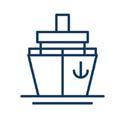
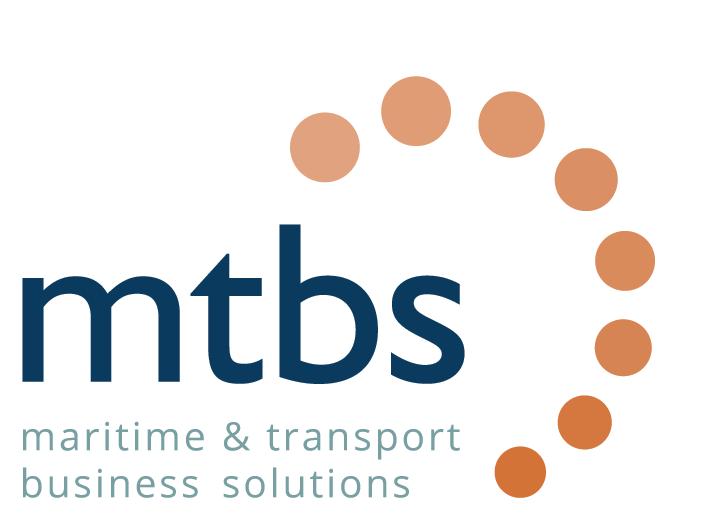





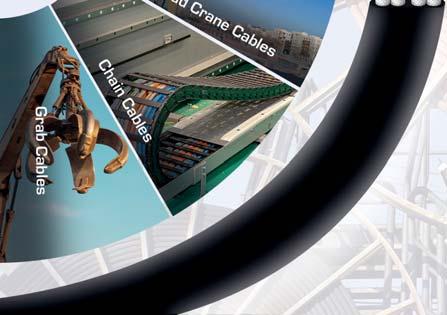



STRATEGY Port Policy Port Sector Reform Value & Business Strategy Public Private Partnerships (National) Port Master planning Institutional & Regulatory Change Organisational Reform & Alignment VALUATION Feasibility Business Case Value Creation & Protection Financial Modelling & Analysis Project Structuring & Packaging Risk Valuation, Allocation, Mitigation TRANSACTION Financial Solutions Transaction Strategy Transaction Management Documentation & Contracts Tendering & Negotiated Solutions FINANCE Due Diligence Project Financing Financial Structuring Procurement of Finances Investment/Divestment Merger & Acquisition MTBS is the leading international Unlocking value in the maritime & transport industry MTBS.NL
GETTING MORE REMOTE
SECTOR ANALYSIS: STS REMOTE OPERATION ADVANCES
As container ships have become larger, so the number of remotely operated ship to shore (STS) cranes has increased. Alongside increased pressure on terminals to handle cargo more efficiently, bigger ships have led to visibility challenges for crane operators, as on larger cranes the ability of the human eye is limited by the distance between the cabin and target. Remote operations combat this issue as operators are moved to a central control room and have extended visibility with multiple camera views. In 2015, APM Terminals’ Maasvlakte II Rotterdam became the first container terminal to use STS cranes with no driver’s cabins installed. Since then, there has been a steady adoption of remotely operated STS cranes, as part of a
wider action to automate complete terminals. Fredrik Johanson, Head of Marketing and Sales, ABB Ports, points out: “Today, we see an increasing interest in remote operation and more and more terminals are implementing remote STS cranes, in smaller terminals as well as in mega hubs. Remote operation puts people in focus, offering an improved work environment that also opens up inclusion and diversification of the workforce. At the same time, it has a positive impact on reliability and productivity of terminal operations.” The below company by company review of organisations active in the supply of remote-control systems for STS cranes highlights the growing interest and activity in the sector.
DESIGN INNOVATION, PROJECTS, STATE-OF-THE-ART THINKING
8 ABB: ABB has been developing crane automation solutions for decades and considers itself a “pioneer” in remote operations for container handling. Its STS crane automation solution enables a fully automatic cycle between the quay and the ship, and its remote-control solution sees operators located in a control room whereby they supervise the crane motion via onboard cameras and a remote-control station. ABB highlights how remotely controlled STS operations can be developed even further. Its QuayPro application means that a remote operator can see all work queues and orders and can, for instance, bypass a certain cell if the container cannot be discharged to ensure uninterrupted operation. The company notes:
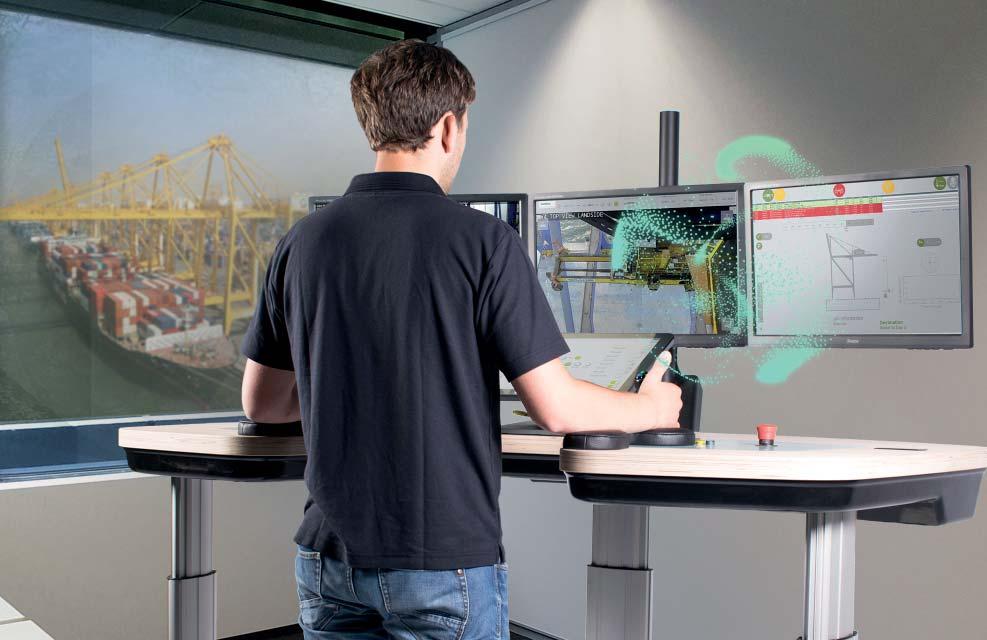
“Through QuayPro, information showing changes made by the crane operator is also instantly visible to the rest of the team. The remote checker can start solving the issue and the operator continues discharging.”
Recent take-up: ABB supplied its automation and remote operations technology to two of the “world’s biggest” quay cranes at Hutchison Ports’ Stockholm Norvik Port. Andy Lewis, Head of Operations, Engineering and Automation at Hutchison Ports Stockholm, notes: “With the assistance crane operators get from automation, we are able to achieve both operational stability and consistency, which makes operations more predictable.”
SHIP-TO-SHORE CRANES For the latest news and analysis go to www.portstrategy.com JUNE 2023 | 45
8 Siemens released an updated version of its Simocrane Remote Control Operation System (RCOS) – Remote Control Solution Version 6.1 – at the end of May






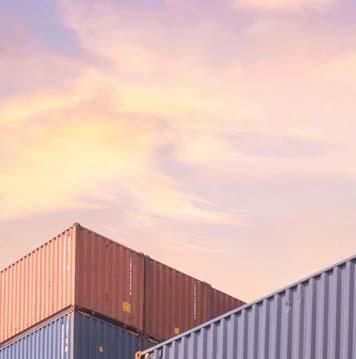





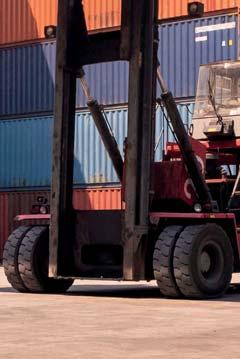



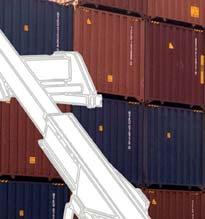




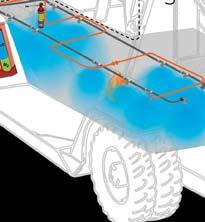


Protect Lives and Equipment Minimize the risk of downtime and damages with Fogmaker’s fire suppression system! www.fogmaker.com Meet us at TOC Rotterdam, Booth G94 The Fogmaker fire suppression system is tailor-made for each type of material handling equipment. High-pressure water mist chokes fires quickly and cools the area to prevent reignition. Fogmaker’s system is automatic, independent of electricity, and always ready!
8 Cavotec: Cavotec supplies a range of radio remote control (RRC) technologies and human operator interface (HOI) systems for applications including STS cranes. Its RRC technology has boosted the remote operations of ZPMC cranes in the automated terminals in Tangier, Morocco, and Qingdao and Yangshen in China. Cavotec explains that while these STS cranes are operated remotely from a control room, during commissioning and maintenance,
8 Kaleris: The Navis N4 terminal operating system from Kaleris, a solution specifically designed for large, high-volume container terminals, serves as a core technology for managing automated STS crane work. Floris Vernooj, Director of Product Management, TOS at Kaleris, says: “In addition to the physical execution of STS crane movements, which may be fully automated or handled by a remote driver in an office or on the crane, N4 also provides the required data input for STS automation, which is key to this type of operations.” Some of Navis’ latest developments in STS automation include STS berth planning. This function determines which STS crane
8 Liebherr: Liebherr Container Cranes has developed its own automated and remote-control systems for STS cranes. It launched its Remote Operator Station (ROS) in 2019, which it says has been ergonomically designed and fitted with multiple displays, allowing the operator to perform all normal driving functions from a remote office environment. Liebherr points out the benefits: “The move to automation with remote control brings operational benefits, with a single ROS operator being able to operate several cranes simultaneously. Additional benefits include faster and easier shift changes, and a more attractive work environment for employees.”
Recent take-up: Eurogate Container Terminal Wilhelmshaven (CTW) placed an order for two dual trolley STS cranes in January 2023 - the first order of its type for Liebherr. The automated cranes increase productivity by decoupling the land and sea side cycles of vessel handling. The cabinless cranes, which deploy Liebherr’s remote operating stations, have a primary outreach of 73m, a lift height of 54.5m, a span of 30.48m and operational back reach with secondary trolley of 26m. Designed for tandem operation, the primary trolley delivers containers

8 Siemens: The growth in vessel size and the need to provide a solution which maintains cargo handling efficiency was the driver behind Siemens’ development of its Simocrane Remote Control Operation System (RCOS). The Remote Control Station can be situated anywhere on the terminal when associated with a reliable and low latency network connection. The system is supported by strategically positioned cameras and smart screens that automatically change the view to follow the process as the operator performs a movement. Siemens released an updated version - Remote Control Solution Version 6.1
8 ZPMC: As one of the world’s leading manufacturers of STS cranes, Shanghai Zhenhua Heavy Industries Company (ZPMC) has been increasingly focused on automated and ‘smart’ container handling operations. It established ZPMC Smart Solutions for this purpose, which has developed a terminal operating system (TOS) that includes smart STS cranes. It has inked an MoU with APM Terminals to jointly develop automated solutions. The MoU includes an order for 18 STS cranes for six terminals, along with the reservation of production slots for an extra 25 STS cranes in
operators are required to control cranes on-site, exposing them to potentially hazardous situations. As a consequence, operators needed a remote-control device. Therefore, Cavotec engineered and supplied 29 RRC units that are installed on the cranes at the three terminals. The transmitter and receiver units enable operators to control cranes from a safe distance during commissioning and maintenance operations.
works on what vessel and bay, or part of the vessel. N4 helps the terminal optimise its operations by taking into account a number of factors to determine which STS cranes should work on each vessel. Before a vessel arrives, N4 has already determined the best work split per bay for each crane. Another development is worklist planning: N4 determines the full list of each container to be loaded and unloaded from a vessel, the order in which this happens, and which STS does the work. N4 integrates with Optical Character Recognition systems and automatic STS crane systems to make sure the right containers are loaded/unloaded.
8 Liebherr has developed its own automated and remote-control systems for STS cranes
automatically to the pinning platform. The containers rest on frames whilst the twistlocks are removed. Once the pinning personnel leave the platform, the secondary trolley is activated, which automatically delivers the container to the landside AGVs. The cranes - the first double trolley container cranes at CTW - will play a key role in the expansion and modernisation of the facility as Eurogate turns it into an automated terminal “geared for the future”.
- at the end of May. New features include a universal camera interface based on the Onvif protocol. A second feature is the integration of video-wall functionality. Both functionalities are based on the WinCC OA video. Siemens says: “The Onvif feature plays a very important role within the unique agnostic remote-control concept which can connect to different crane types of different crane builders and control them remotely.” In combination with the new release, Siemens has launched a training desk (based on a digital twin) to train remote operators.
the coming years. The cranes will be operated remotely from a control room.
Recent take-up: ZPMC delivered five semi-automatic STS cranes in 2022 to Ashdod Port in Israel as part of an aim to reduce congestion and boost competitiveness. The contract is valued at NIS 208 million (€58.2 million). The cranes can work with ultra large container ships of up to 24,000TEU capacity and their camera and laser systems allow for remote control, while a TOS system facilitates semi-automatic operations.
SHIP-TO-SHORE CRANES For the latest news and analysis go to www.portstrategy.com JUNE 2023 | 47
Any colour, but always green.
Electric RTGs, available with busbar or cable reeling drum and hybrid machines with Liduro energy management are ideal for reducing your carbon footprint.

www.liebherr.com
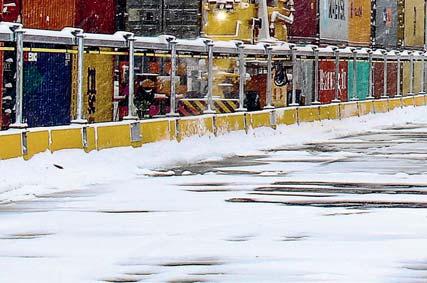


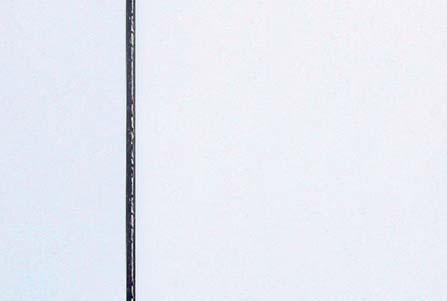



Liebherr Container Cranes Ltd.
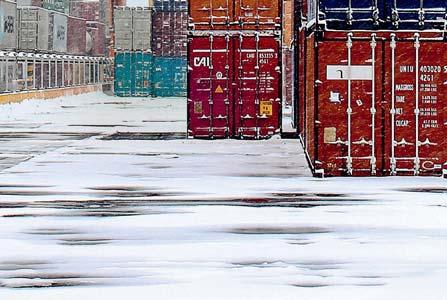

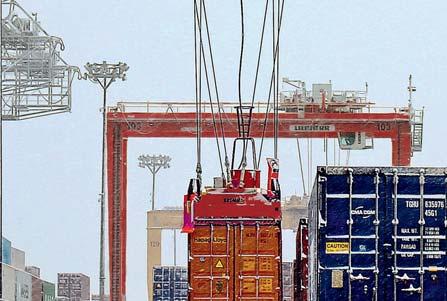
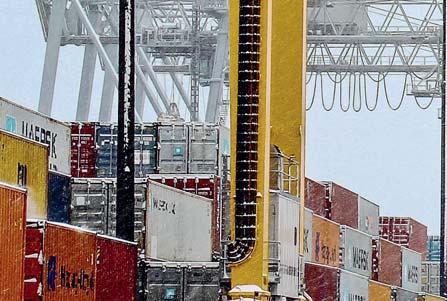

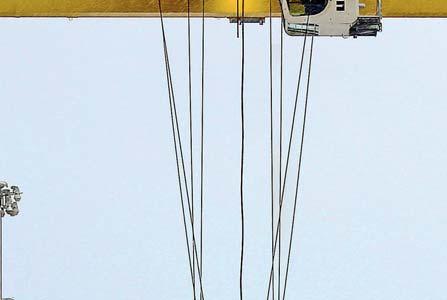


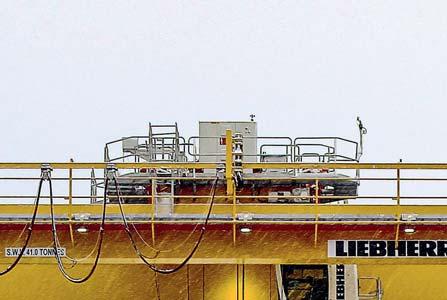
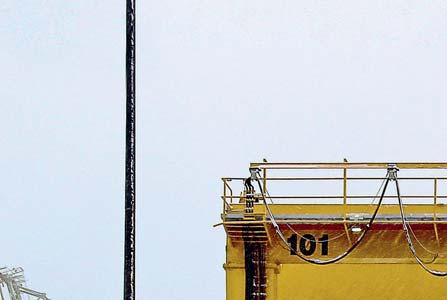 Paul Holloway Event Director, TOC Worldwide.
Paul Holloway Event Director, TOC Worldwide.
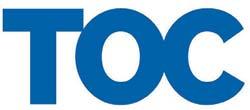

is back in townWELCOME
Doesn’t Time Fly?
It seems like yesterday we gathered here after one of the most bizarre periods in modern history and reunited as a community. The COVID years now seem like a distant nightmare. However, looking ahead there is still a strong sense of optimism resonating around this industry and we are here, as ever, to provide a platform for discussion,
ship event, TOC Europe. Personally, this is my 22nd TOC the entrance of the AHOY all those years ago, wow time
NEW Format, NEW Opportunities
Take a look at our content programme. You will see we

opportunities. We now have 4 theatres, namely TECH TOC, Business Intelligence, Sustainability and Digital. So you now have the opportunity to build out your own programme and create a bespoke experience that best suits your objectives. However, you may also notice that we have slightly less speakers than usual (please accept our apologies if you did not make the programme this time but lets talk about other ways of repurposing your content across our channels) which is a move designed to with exhibitors. You will also see we have minimised clashes in sessions, so that again attending sessions will not be at the expense of missing others.
GO App!
This content programme and indeed all aspects of the event, are now housed on our new App. This tech will provide you with options to book in sessions and create your own schedule. Many attendees will also now have the opportunity to reach out to other people on site and request meetings, chat on line and connect. All of our commercial supporters, speakers and VIPs have this option, for visitors; why not upgrade to an ‘Executive you too can join this online community and also access our networking & catering us about ..
3 Course Meal
Remember, TOC Europe is a 3 day event. Why stop after programme on the last day so please do have a look. And, seeing as you thankfully have invested so much in your attendance, then it make sense to get the most out of it. Plus, who would want to miss the now infamous TOC golf

Planet TOC
Across our global brand you will now see a suite of sustainable initiatives that we are deploying to make our working with various charities and community groups to ensure we deliver a positive impact on the places we visit with the shows. Sustainability is a hot topic across the industry for all the right reasons. So its important as the leading event in this market that we also are sustainable.
our customers, can help us achieve this ambitious goal –
Thanks Everyone!
for your continuing support of this brand, not just here but all over the word. Special mention to our exhibitors who have once again created an amazing market place that showcases the latest cutting edge technology solutions. We are also joined this week by some very new companies, new to TOC and the industry, so please welcome them into the community and have a look at some of their, sometimes disruptive, solutions. Also I would like to thank our sponsors - DP World, Port of Long
expert speakers from all over the world. We at TOC never take for granted your investment and are deeply grateful for your ongoing belief and trust in what we do.
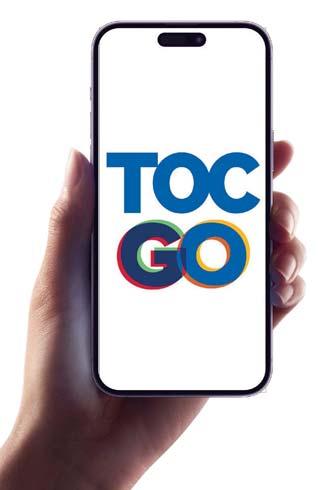
I do hope you all get what you hope for from this event. Please do come over to our stand for assistance or just to say hello. TOCsters are pretty friendly (mostly)
opportunity to connect and also enjoy our time together.
See you soon
OUTLOOKWELCOME
Paul
s t s s y
Cable-Reels with Active Acceleration Control
Increased productivity and availability enabled by intelligent and adaptive control systems

Learn morewabtec-cable-reel.com
Control systems adapted to individual crane parameters
Avoidance of slacking increases operations safety
Stepless torque transmission enables fastest operation in the industry
Active Acceleration Control increases cable service life
Follow us


Our innovative solutions are installed around the world in the most demanding conditions with highest reliability. We meet every requirement and have the biggest experience in serving ports, vessels operators and OEM’s.

REPRODUCING REALITY
Safety, training and productivity – the benefits of simulating cargo handling operations are increasingly to the fore including new dimensions such as with automation and the handling of wind turbines. Felicity Landon reviews the state-of-the-art
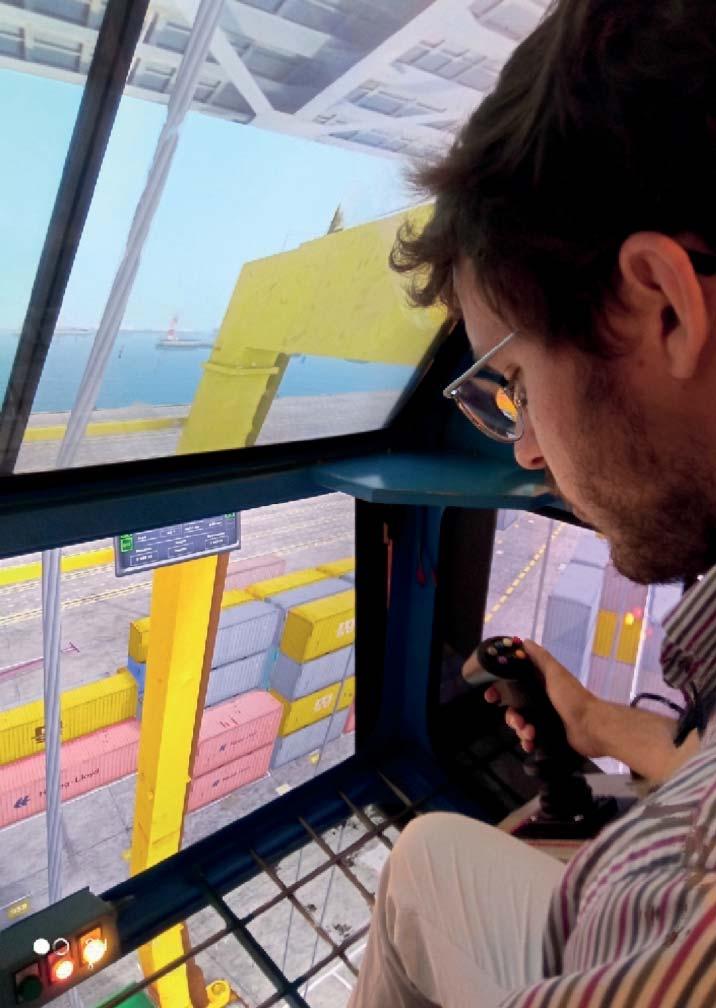
Why use simulation? It’s a question with multiple answers. Simulation removes the risks of using expensive ‘real’ kit to train novices or inexperienced operators, and avoids tying up expensive assets that should be deployed more productively. It helps to weed out early trainees who really aren’t going to make the grade. It enables port teams to practise and tweak operations, including in advance of a new or challenging cargo. It helps operators to polish up their skills.
“There are three overall benefits of using simulators –safety, training and productivity,” says Laurence Jones, Risk Assessment Director at the TT Club. “In terms of safety, you are lowering the risk of damage and injuries and increasing awareness. You can simulate accidents and practise emergency responses.
“Simulation can reduce the training time to when the operator is ready to finally operate the crane by themselves. When I was working in terminals, I used to see crane drivers do their training [on real equipment] and they would hit the wrong buttons, arms would be going up, they didn’t know what was going on and you would hear the ‘lucky I survived’ comment. With simulator training, they can learn from their mistakes and bypass all that before they get into the machine, at which point they will be much more confident.”
Simulators can also be used in a sort of ‘try before you buy’ exercise; if a new trainee doesn’t have the level of coordination and dexterity required, their unsuitability as a crane driver will be picked up early. “So, you are not wasting time and money and, as a result, you end up with more highly skilled crane drivers whose average performance is going to be much higher,” says Jones. “That all comes back to more moves per hour and doing it safely.”
Simulators have not been universally adopted in the industry but many more companies are now seeing the benefits, says Jones. “A lot of companies are doing simulator training – but a lot aren’t and still need to be pushed. The TT Club highly recommends the use of simulators for the training of operators for all cargo handling equipment.”
The obstacle in the past has been cost, he notes: “They are still not cheap, but they are a lot cheaper than they were. It is also becoming more common to share the cost, rather than spend half a million to buy one simulator. Training centres are starting to pop up, which is far more economical.”
As he points out, today you can source a simulator for nearly every machine – not just cranes but also forklifts, trucks, straddle carriers and others.
Training equipment operators using simulators instead of live and expensive equipment has delivered results, says Ross McKissock, Director of Unitised at Forth Ports, UK. Speaking at Coastlink in Liverpool, he said: “We let people fail digitally and become a better driver as a result. As a consequence of using models, we have slowed our equipment down. We made it slower because people then know that they can’t just nip into a little gap – so they are driving more safely to the conditions at a steadier rate, the fuel burn is improved, and maintenance is better because of reduced damage.”
Simulation equipment for ports has been mostly focused
around ship-to-shore cranes because these are the biggest, most expensive and most dangerous pieces of kit, says Brad Ball, Vice-President of International Sales and Marketing at GlobalSim. In the past, a simulator for a forklift or reach stacker had to be bought separately. However, the technology has evolved to the point that GlobalSim can supply a large simulator adaptable for use as STS, RTG or other heavy equipment. “Within a matter of five minutes, you can switch out the controls, put in a steering wheel and so on, to train on other equipment.”
VIRTUAL REALITY IMPACT
Another key development has been the impact of Virtual Reality (VR). “You put on the VR headset and plug into the computer program, and they offer an amazing ability for a desktop-type simulator. So, rather than having to have a
8 The parameters of simulation for cargo handling are being progressively extended taking account of factors such as remote operation/ automation and tandem lift requirements
CARGO HANDLING SIMULATION For the latest news and analysis go to www.portstrategy.com JUNE 2023 | 51
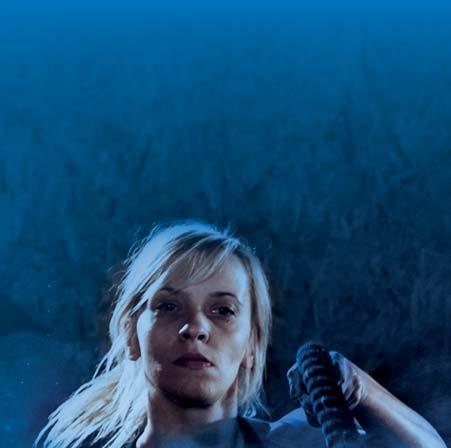
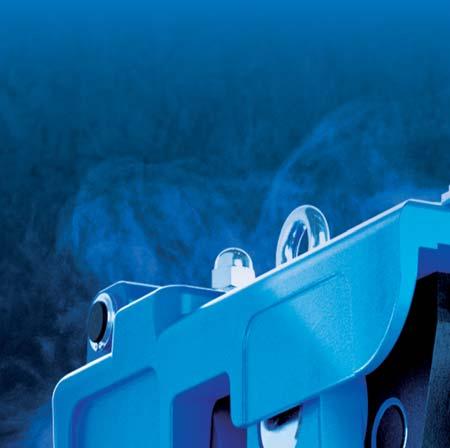



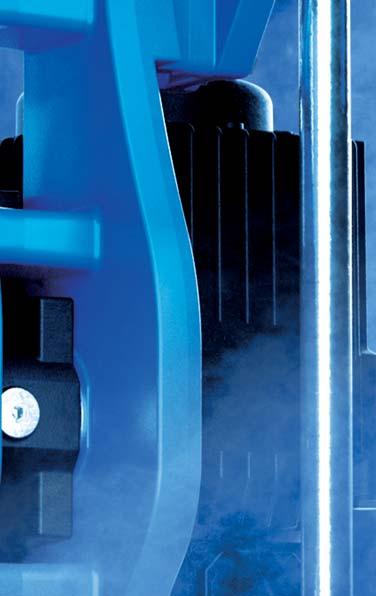
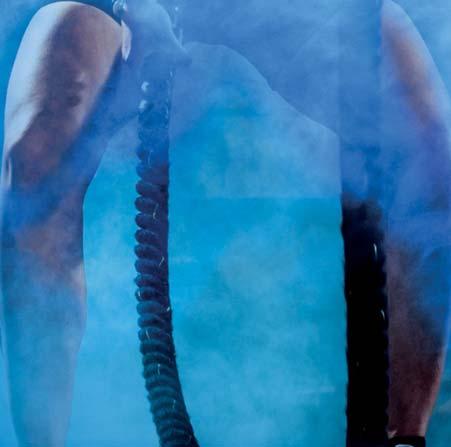











info@sibre.de | www.sibre.de SIBRE Siegerland Bremsen GmbH – Auf der Stücke 1 - 5 – 35708 Haiger - (Germany) ideegrafik.de #bluebrakes # blue
STAND D30
Couplings and Components
huge simulator that costs hundreds of thousands of dollars, we can now set up a desktop system with one small screen and a lot of scenarios. For some types of equipment, it works really well.”
However, he does not expect VR to eclipse the larger simulators. “There are real advantages to this VR tech but also disadvantages. You have entire reality around you and also some depth perception. A client who has a lot of simulators wanted a VR product because they wanted to sense a fear of heights when training a new set of people. Instead of finding out a person is afraid of heights when they get up in the crane, why not train on a simple unit for a day first? With every form of simulator, a huge advantage is being able to test and train in a very controlled environment, very safely, before getting into the real equipment that is expensive and dangerous to operate.”
The disadvantage of VR, he says, is that you can’t have the headset on all day. “You can go about 30 minutes, maybe an hour, then you get weary. Some people get dizzy or queasy in that virtual environment. So the VR headset is great, but as an add-on to our systems, not really as a whole system in itself.”
Meanwhile, the advance of automation and remote control (RC) is having an impact. GlobalSim has sold a number of RC simulators – instead of recreating motion, bumps, etc., this is typically a desktop process.
“I am fully invested in simulators but even I will tell you that a simulator is not a 100 per cent solution,” says Ball. “In virtually every case you still need to have some sort of training on real equipment; you can do 80 per cent on the simulator but at some point you need to graduate people to real equipment.”
That applies even with RC simulation, he says.
Laurence Jones says: “You might think that simulator training would be perfect for RC because it is similar – that is probably correct, but it all depends on the sensors and cameras installed on the crane that is remotely controlled by the operator.”
There have been accidents reported where the remote operator (not being on site) could not see everything, says Jones. “It is all to do with the set-ups of cameras and sensors, and having procedures for the truck drivers coming in to collect the containers. I am still waiting on a bit more feedback on remote operation quay cranes. It is still about interaction and the real world.”
Even when quay cranes are automated, there is a place for simulator training, he adds. “There are always going to be exceptions so you have to have the remote operators well trained because at some stage they might need to remotely operate the cranes.”
WIND TURBINE CHALLENGE
GlobalSim is reporting increased interest in simulation training for handling wind power equipment, particularly for the installation of wind turbines.
“These turbines are being manufactured in various locations and shipped throughout the world,” says Brad Ball. “How do you handle them? You need training on the crane to move these turbines, whether from an offshore vessel or at a port.”
Those involved want to train operators on a simulator, rather than ‘training’ with a real turbine when it arrives, he says. “They will be doing a tandem lift, which requires collaboration and communication between two crane operators. That type of training is very different. From a simulator standpoint, it is interesting and a little bit tricky because you have to have two simulators coordinating together. It is something we have done before for the US military, so we are working on that now, incorporating that same thing for commercial application.”
Quay Cranes: All Eventualities Catered For
The University of Valencia’s Laboratory of Simulation and Modelling (LSyM) has developed a training system, based on a simulator, that reproduces the working environment of real quay cranes. The system – entered into the ICHCA/TT Club Innovation in Safety Awards – can input sudden crane breakdowns, hazards and changes in the weather conditions, including wind, these conditions being reproduced by a motion platform under the seat.
The simulator also has a theory module and pre-operation inspection exercises to guide users on procedures and safety checks before turning on the crane.
“We spent eight months implementing the new software developments into the STS crane simulator,” says Pablo Galán, Head of Business Development. “These developments include new 3D models, new terminal layouts, new functionalities in crane control management for autonomous operations and new exercises.”
LSyM supplied its first simulator to the
Port of Valencia 25 years ago, delivering a multi-machine simulator in a cabin station hardware with a 6DOF (six-degrees-offreedom) motion platform underneath it. This motion platform has been working about eight hours per day, has not been replaced and is still running today, says Galán, although other hardware changes have been done, such as replacing the old visual system of projectors with high-definition screens that can withstand the vibrations of the motion platform.
“Now they are using an additional simulator of the same type to perform exercises with two operators/users simultaneously in Collaborative Mode – for example, an exercise with two STS cranes operating jointly on the same vessel or an STS Crane operating with a reachstacker on the yard.”
The most important part of a simulator for training port machinery operators is its instructional system, says L Rafael Martínez, Director, LSyM. “If this is not accurate
enough, the simulator will not accomplish its intended purpose of training machinery operators on how to use the real machines; it will not perform effectively and will simply become an expensive video game.
“We focus on creating training tools that deliver strong learning outcomes. For example, our fully customisable evaluation system for different groups of operators and our Collaborative Mode, which allows multiple operators/users to work together in the same virtual environment, to identify the main points of interest in the teamwork, make corrections or improve the transversal skills from each operator. We are also proud of our Debriefing system, which records every exercise for later evaluation in one-on-one meetings between the instructors and users. The Debriefing recordings can also be synchronised with footage from an optional video camera that can be attached to the simulator, to capture the user’s reactions during the exercises.”
CARGO HANDLING SIMULATION For the latest news and analysis go to www.portstrategy.com JUNE 2023 | 53
‘‘
…you can source a simulator for nearly every machine –not just cranes but also forklifts, trucks, straddle carriers and others
OCT Lisbon Portugal
Secure your place now & Save 20%
environmental challenges with economic demands in



Host Port:
Sponsored by:
2023 Conference Sessions includes:
reduction & adaptation
Waste Management and Circular Economy



Infrastructure Development
Digitalization and Technology
Supported by:
Meet and network with over 200 attendees representing port authorities, terminal operators and shipping lines. For more information on attending, sponsoring or speaking, contact the events team: visit: greenport.com/congress

tel: +44 1329 825 335

email: congress@greenport.com
Media Partners:
#GPCongress
INSIGHT FOR PORT EXECUTIVES GREENPORT INSIGHT FOR PORT EXECUTIVES
PORTSTRATEGY
ERA OF THE eRTG
8 ConductixWampfler says that its new ECOBatteryPack leads to up to 60% fuel savings when compared to conventional genset usage
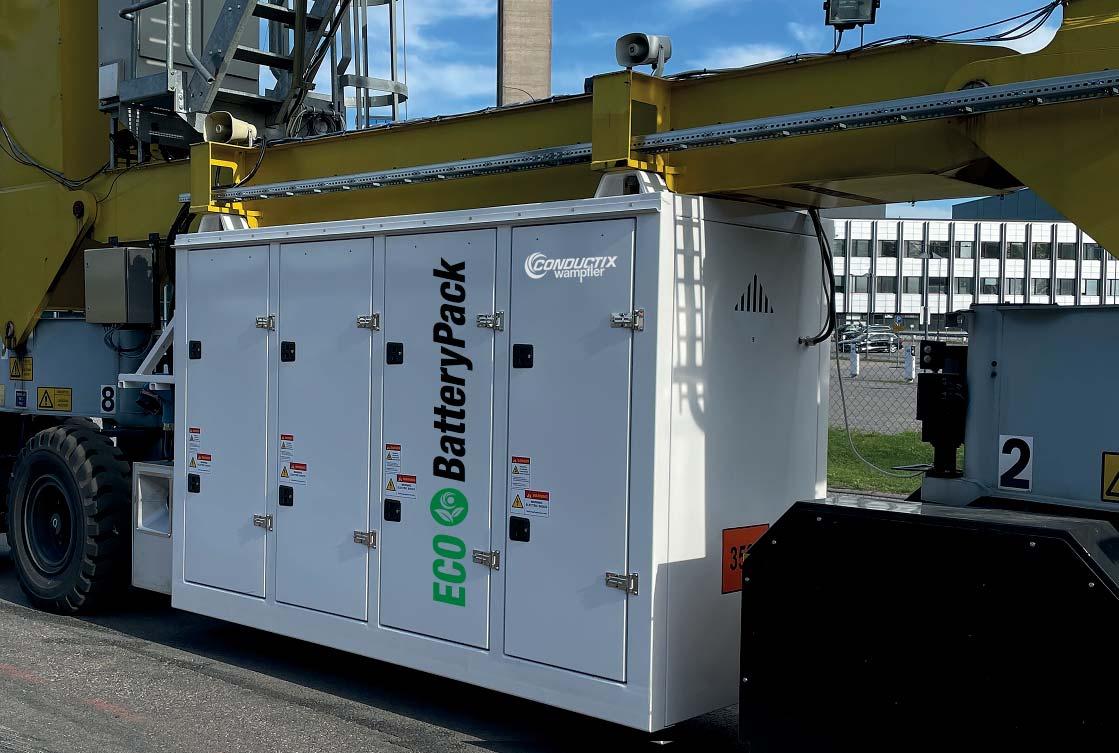
SECTOR ANALYSIS: eRTG SYSTEM OPTIONS AND APPEAL WIDEN
As terminals come under greater pressure to cut their carbon footprint, their efforts to reduce the environmental impact of handling equipment are growing commensurately. Rubber-tyred gantry cranes (RTG) are a key focus as they are one of the major sources of CO2 emissions in container terminals. Indeed, Corvus Energy notes that approximately 20 per cent of diesel fuel emissions from cargo handling operations at terminals are emitted by RTGs and container handling equipment such as automated guided vehicles. New RTG orders are thus increasing for either hybrid or fully electric options, while, as is featured in the company information below, the market is also ripe for diesel-
powered RTGs to be converted to electric operations. As well as a quest to make RTGs more environmentally friendly, a key driver is that in deploying eRTGs, terminal operators also benefit from greater operational efficiencies, reduced overall energy consumption and a decrease in maintenance costs. New batterypowered solutions for RTGs promise to further boost take-up. While RTGs using the electric grid can be a challenge for some terminals due to the need for additional infrastructure such as motorised cable reels or conductor rails, new battery-powered solutions for RTGs being launched, which do not require this, provide another alternative.
DESIGN ADVANCES, POWER COST REDUCTION, CONVERSIONS
8 Cavotec: Cavotec is focused on designing electrification solutions to enable the decarbonisation of ports. As part of this, it provides RTG electrification solutions that range from manual connection to front-end automated technologies. The Cavotec Automatic Plug-in System (APS) automates the connection and disconnection of the cable reel powering the eRTG and is available for low and medium voltage applications with fibre optics. Apart from the environmental benefits, other advantages cited include higher average and peak productivity, flexibility in handling varying volumes and reduced maintenance expenditure. Cavotec says that its manual connection is ideal for terminals with a low number of daily eRTG
movements between different blocks. Here, it says that its power units and Double Anchor Openable System ensure rapid and safe manual connection and anchoring operations.
Recent up-take: Cavotec was involved in a milestone eRTG conversion that was completed last year after nine ZPMC diesel-electric RTGs were converted to be fully grid-tied electric at SSA Marine’s Port of Long Beach Pier J terminal. SSA Marine notes that “This is the largest deployment of eRTGs in North America and represents 100 per cent of the RTG fleet at the Port of Long Beach Pier J terminal.” Cavotec supplied the conversion equipment.
CONTAINER HANDLING For the latest news and analysis go to www.portstrategy.com JUNE 2023 | 55
Tough: maintenance-free tribo plain bearings for

For applications with extreme loads, igus® has developed the new igutex® fiber composite plain bearing series. The igutex® materials are ideal for high load applications and can absorb up to 200MPa. With the new igutex® TX3, igus® has now developed a material that achieves the lowest wear rates under extreme loads and increases the availability of RMG, RTG and ASC cranes. And, as with all igus® plain bearings, it is lubrication-free, corrosion-free and maintenancefree. Can be calculated online and delivered quickly.

Visit us: TOC Europe, Rotterdam – Stand F34 motion plastics® improve what moves /igutex-tx3
Tel. +49-2203-96 49-800
RMG,
RTG and ASC igus® motion plastics®
8 Conductix-Wampfler: Conductix-Wampfler has launched an ECOBatteryPack for RTGs – which it calls a “gamechanger” for the port industry. The company, which provides sustainable energy solutions for mobile port equipment, says that its new battery-hybrid solution consists of a medium-sized Li-Ion battery system that drives all crane operations and a small size diesel genset that charges the battery when necessary. The system ensures that the regenerative energy produced during container lowering is fully utilised to also charge the battery. With approximately 30 moves without the need for a genset when fully charged, container terminal operators can, it is claimed, achieve up to 60 per cent fuel savings compared to conventional genset
8 Corvus Energy: Corvus Energy has seen an increase in the use of its Energy Storage Systems (ESS) to power hybrid RTGs. The energy storage solutions supplier notes that hybrid RTGs powered by its Orca ESS run primarily on battery power, leading to a reduction of fuel consumption of approximately 65 per cent, along with a reduction in noise. The system stores regenerative braking energy captured as the RTG crane lowers a container—a high-
8 Liebherr: Recent orders for Liebherr highlight the growing trend to install both new hybrid RTGs and convert existing machinery. In March this year, the Baltic Hub, formerly DCT Gdansk, commissioned Liebherr to retrofit a hybrid green energy storage solution on one of its Liebherr RTGs. This initial purchase will allow the Baltic Hub to assess the technology with a view to further retrofitting its fleet of 18 Liebherr RTGs with the system. At the heart of the solution is the Liduro LES 200, a capacitor system developed by Liebherr-Electronics and Drives GmbH. The system is designed to capture and store energy generated during hoist lowering and braking that would otherwise be wasted. The stored energy is then deployed during the hoisting cycle to reduce the overall demand on the genset, allowing for a reduction in fuel consumed and in emissions. Liebherr notes that this technology means that the “RTG crane will have access to reliable, high-power energy during peak demand
8 Kalmar: Cargo handling solutions provider Kalmar launched a new generation of its RTGs in 2021 that covers five models, including the Kalmar Zero Emission RTG and Kalmar Hybrid RTG. These models have a “stronger, lighter and simpler modular design with intelligent features, creating an even more highly productive and eco-efficient container-handling solution,” notes Kalmar. The Kalmar Zero Emission RTG features a fully electric power system that produces no emissions or engine noise at source and eliminates the need for hydraulic oil. A benefit is that its
8 Konecranes: Konecranes’ ‘Ecolifting’ vision is aimed at reducing CO2 emissions of its container handling equipment, and its eRTG solutions form a major part of this concept. Having started with offering fully electric RTGs with a choice of cable reels or busbar systems, and hybrid systems, Konecranes has launched a battery-driven RTG (B-RTG). Explaining the drivers behind this development, Konecranes said: “Seeing the global “battery megatrend” gathering strength in a worldwide effort to reduce CO2 emissions, Konecranes is now the first to offer a battery driven RTG as part of Ecolifting. While eRTGs powered via busbar or cable reel systems require yard infrastructure adjustments that are not feasible for all container terminal operators, the B-RTG “can be adopted easily by brownfield container terminals without major yard adjustments,” the
usage. Conductix-Wampfler highlights that unlike electrified systems using grid power, the battery-hybrid solution does not require extra yard infrastructure like motorised cable reels or conductor rails. ECOBatteryPack’s small diesel genset automatically starts when the battery state of charge reaches the lower limit. This ensures that the RTG’s normal operation is not interrupted when the battery is charging. Philipp Wasmer, Global Market Manager, Container Handling, at Conductix-Wampfler underlines: “The ECOBatteryPack Battery-Hybrid Solution is a game-changer for the port industry. It provides an unparalleled combination of efficiency, flexibility, and sustainability, all while maintaining full operational flexibility.”
current charge that most battery systems cannot sustain, Corvus says. The stored energy is used to power the RTG crane during operations such as trolley and gantry movement, allowing the diesel engine to be shut off when it would traditionally be idling or operating inefficiently at low loads. This means that the size of the generator can be smaller, used less often and its operation optimised for fuel efficiency.
8 Liebherr’s Liduro LES 200 capacitor system is designed to capture and store energy generated during hoist lowering and braking
periods”, with the retrofit leading to over 30 per cent reductions in emissions and fuel consumption. Other benefits include cost savings by reducing running and maintenance expenses. The Liduro LES 200 is also part of a new order for a new hybrid RTG from Doyle Shipping Group, at Dublin Port. As well as hybrid solutions, a full electric RTG is available from Liebherr. This can be fitted with a full diesel genset, auxiliary generator or a connection for a portable generator to allow movement between the stacks.
simplified design means it requires “significantly less” maintenance than a diesel-powered RTG. Available with either a busbar system that is situated along the stack or a cable reel system mounted on to the RTG frame, both systems allow a “seamless flow of power and data to be transferred form the RTG to other systems”. It has the ability to support variable input voltage levels and has an optional onboard battery system for stack changing. Regenerative power is used to keep these optional auxiliary Li-on batteries charged for use when needed.
company says. The technology can also be retrofitted to other brands of RTG. The B-RTG uses Li-on technology that works either with a charging station or with manual plug-in to the mains for charging.
Recent up-take: Konecranes has supplied the Port of Koper in Slovenia with three eRTG cranes as part of its Ecolifting concept. Featuring an auto plug-in system and cable reel systems, they will feed regenerative power back to the local grid. The company has additionally signed an agreement with PSA Halifax for eight new eRTGs. This purchase will replace the existing fleet of diesel front end loaders and reach stackers in order to transform the Atlantic Hub terminal into an all-electric RTG operating environment.

CONTAINER HANDLING For the latest news and analysis go to www.portstrategy.com JUNE 2023 | 57
ESG GOALS ASSESSED
How are attitudes to ESG evolving in the shipping industry? Felicity Landon reports on a new report from Watson Farley & Williams, and a webinar that discussed the findings
8 The CMA CGM Group has embarked on a major programme to build a new class of liquefied natural gas-powered vessels – an option identified by WFW as falling in popularity
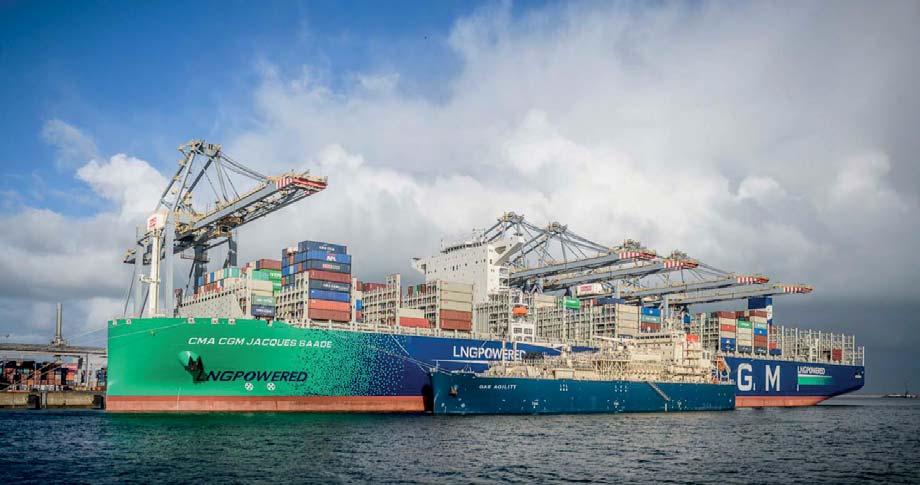
The shipping industry now has a better understanding of how long it will take to meet Environmental, Social and Governance (ESG) goals; shipowners want to be more collaborative to pursue innovation; and shipowners are more concerned about choosing the right technology than how to pay for it. These are some of the findings of ‘The Sustainability Imperative – Part 2’, launched by Watson Farley & Williams (WFW) in March 2023.
The report surveyed industry executives and managers, following up on similar analysis from 2021; the aim was to explore how attitudes have evolved, who is shaping today’s ESG agenda and how sustainability squares with geopolitical challenges such as the war in Ukraine.
The report concluded that decarbonisation remains the main challenge: “Which green technologies will work at scale to help achieve it, how can their adoption be incentivised and who will pay for the transition? Fortunately, shipping now has a greater appreciation of the task ahead.”
A webinar organised to discuss the updated findings was dominated by questions and challenges around new fuels for shipping.
The panel of speakers did not zoom in on the challenges for ports when it comes to storing and supplying ‘future fuels’ (and associated investments) when shipowners have yet to make firm decisions or commitments, although the report did note that one of the thorniest challenges to emissions reduction is how to build up the fuelling infrastructure to support any new propulsion technologies developed: “A substantial number of ships ordered over the last two years burn alternative fuels, but the number of facilities that can supply these alternative fuels around the world remains limited.”
ALTERNATIVE FUELS REAPPRAISED
Virtually all shipowners are now considering using alternatives to bunker oil within the next five years, said the
report. However, fewer (compared to 2021) favour LNG or LPG as alternative fuel sources, “perhaps due to rocketing gas prices and because these are viewed as transition fuels”.
“Replacing gas as the top choice among alternatives are biofuels, followed by hydrogen and wind and solar power. Methanol and clean ammonia are also more popular than they were two years ago, while batteries have slumped, possibly because storage technology is not advancing as quickly as expected and shipowners see technology and proven results as important factors in supporting one technology over another.”
Lizzie Roe, WFW Partner and Webinar Moderator, said: “The main ESG topic dominating headlines is the journey to Net Zero. Alternative fuels are very much at the heart of every discussion of decarbonisation.”
There had been a notable shift, she said: “Earlier, when we were asking shipowners what alternative fuels they were considering in the next five years, LNG was listed as the clear favourite – about 60 per cent picked this. Now that response has fallen significantly. Only about 35 per cent picked LNG as one of their options.”
Paul Taylor, Global Head of Shipping & Offshore at Societe Generale CIB, said a 35 per cent uptake on LNG was still ‘a very good figure’.
“We are seeing a lot of our clients investing in LNG propelled vessels. Certainly, there is no slowdown in momentum of LNG in investment, in my opinion,” he said. “It says more about the momentum in the industry – there are multiple options for shipowners and we are going to see an increase in the uptake of them all. Ship owners are already investing in methanol vessels, for example, taking the plunge on the supply of fuels.”
However, Martin Cresswell, Technical Director at the Hong Kong Shipowners Association, highlighted the cost of fitting out a ship for LNG, which was “just too expensive” for smaller vessels.
SHIPPING SECTOR REVIEW 58 | JUNE 2023 For the latest news and analysis go to www.portstrategy.com
“Also, there is the variable cost of LNG. Since the start of the war in Ukraine, the price has soared, and it has become very transparent that basically it is not going to be cheaper than fossil fuel for quite a long time.”
Bud Darr, Executive Vice President, Maritime Policy and Government Affairs at the MSC Group, noted that tech readiness for methanol had increased substantially, making this an option as ‘ready for market’ as LNG.
The market as a whole is taking a change in direction, with different influencing factors in terms of decarbonisation and alternative fuels, said Roe. She posed the question: “To what extent do you think there is responsibility on larger shipowners to share some of the findings and outcomes of their research to make sure the industry as a whole is shifting? Smaller shipowners might not have the same resources to invest but if we want to succeed [with Net Zero targets], it has to be a movement of the industry as a whole.”
Larger, better resourced companies have an obligation to help the rest of the industry to decarbonise by sharing the knowledge they have gained along the way, said Darr. “We have a special obligation as larger shipowners to be transparent, so the rest of the industry is able to learn from that and benefit and join the energy transition – because we all need to get there, not just some of us.”
Cresswell pointed out that a lot of the relevant information is held by the shipyards, which benefits owners ordering ships. “A lot of the technology gets transferred to the shipyard. The shipyard is going to be the recipient of this information. Classification societies also have this information and are going to share it out. So, it will cascade down quite quickly, I believe.”
FINANCE INFLUENCE
Access to financing was highlighted as an issue in the survey, said Roe. “Financiers were listed as having the most influence in terms of decarbonisation. Financiers are key stakeholders. Could banks do more to support energy transition?”
Gerbrand Vroegop, Managing Director and Head of Transport & Logistics APAC at ING, said: “We identified nine sectors in which ING is active where we think we can make the biggest impact in contributing to the Net Zero target by 2050. Shipping was one – cement, power generation and aviation were also included.
“We have integrated climate alignments in our commercial decision processes and credit decision processes. It means if we have a new proposal, we have to show senior management what the AER is for the new asset and, if it is above the pathway, have to show what the owner is going to do to improve it.”
Several of the panel noted a realisation across the industry that decarbonisation of the shipping industry is going to be more challenging than was perhaps previously anticipated by many.
Vroegop said: “You realise it is a lot more complex than when you knew less.”
He said: “Expect acceleration in the coming years, because when we get a better understanding and the right alignments, we should see again a much more positive view.”
The Sustainability Imperative
WFW’s updated report noted:
5 Respondents estimate that 28 per cent of the maritime industry will meet milestones for emissions within five years.
5 Two-thirds of shipowners said they would like to form partnerships to pursue innovation. Some 56 per cent are already in ESG-linked tie-ups.
5 Shipowners are more concerned about choosing the right technology than how to pay for it, listing regulatory and technological uncertainty – no longer cost – as the biggest constraint on investment in emissions reduction.
5 LNG and LPG have fallen behind many other alternative fuels in the sustainability planning of shipowners. “Perhaps this is because LNG in particular is already
viewed as an established transition fuel option, although concerns regarding methane slip and fallout from the war in Ukraine are other possible causes.”
5 Most of shipping accepts the need for carbon trading and carbon offsets, which will be important for emissions reduction, according to 91 per cent of respondents.

“Industry initiatives such as the Getting to Zero Coalition, the Sea Cargo Charter and the Poseidon Principles have been the main drivers of change on this front to date, though most believe ESG should be driven by regulation rather than voluntary action,” said WFW. “Most would like to see this come from the International Maritime Organization, given its global reach, though
that organisation’s reputation for being slow-moving is leading to growing frustration within the industry.”
The report also noted that despite the impact of the war in Ukraine, and related sanctions, on global energy prices, war and political instability are not seen as a particular threat.
“In order of priority, the following are of greater concern to the maritime sector: new technological developments and requirements; trade tensions; and another black swan event like COVID-19.”
Meanwhile, the survey showed that diversity targets now have the biggest influence on ESG decision making and crew welfare issues are also of growing importance to many shipowners.
SHIPPING SECTOR REVIEW For the latest news and analysis go to www.portstrategy.com JUNE 2023 | 59
8 Maersk Line is set to introduce the world’s first container vessel sailing on green methanol – a feeder vessel destined for operation in Baltic trade
A substantial number of ships ordered over the last two years burn alternative fuels, but the number of facilities that can supply these alternative fuels around the world remains limited
‘‘



Visit portstrategy.com Email subscriptions@mercatormedia.com Or Call +44 1329 825335 For multiple users or site access, email corporatesubs@mercatormedia.com port and terminal professionals around the world Informing over To guarantee your magazine SUBSCRIBE NOW PRINT IS BACK! needs of our audience. Subscribe today! •Instant access to industry news •Expert opinion •Monthly features •Weekly eNewsletter •10 editions per year CONTACT DETAILS: ANNUAL SUBSCRIPTIONS AVAILABLE FROM £228 JANUARY/FEBRUARY 2023 VOL 1023 ISSUE portstrategy.com Santos: Politics & Priorities Turkey: Moscow’s Transit Hub Getting Alongside JIT DIGITAL: TALKING THE SAME LANGUAGE SHAPE OF THINGS TO COME
EWG TAPS 5G & DIGITAL TWIN
Hungary’s East-West-Gate sets the standard for new generation intermodal terminal operations with its adoption of 5G and digital twin technology
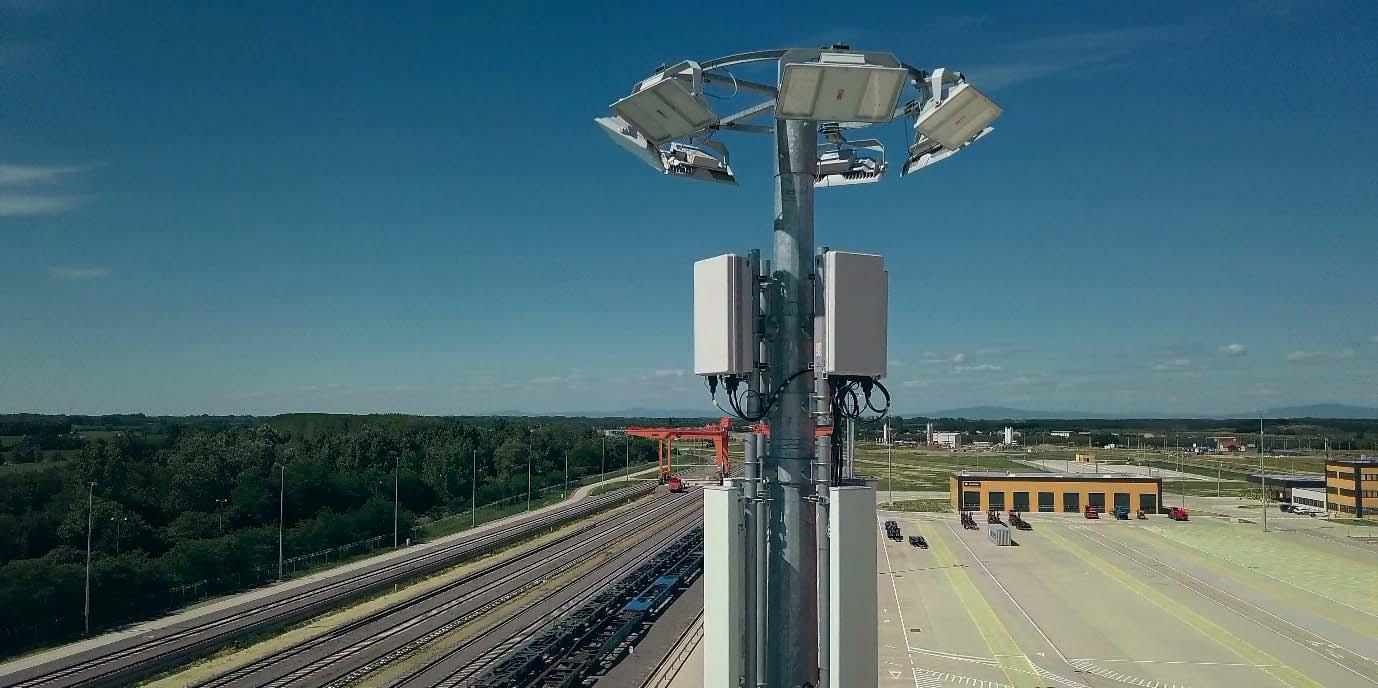
Close to the border, where Hungary’s 1435mm and Ukraine’s 1520mm-gauge rail lines intersect, crane operators at Hungary’s East West Gate (EWG) intermodal facility are no longer working in small cabins more than 30m above ground. The terminal has embraced next generation 5G and AI technology to allow the cranes’ operators to remotely control the machines and is utilising digital twin technology to increase operational efficiency.
The recently opened facility has the capacity to handle up to one million 20ft containers per year as a result of the digital transformation of the port in partnership with information and communications technical (ICT) service provider, Huawei.
The terminal operator transloads cargo from conventional road semi-trailers onto rail, as well as providing transshipment of wagons between the two gauges.
One of the key factors behind the increase in throughput at the terminal is the implementation of a ‘digital twin’ technology, known as Maxwhere. This advanced system is a virtual replica of the EWG, facilitating efficiency gains in cross-loading the containers from incoming trains and trucks, either to be transported further or moved into storage areas.
Janos Talosi, the CEO of EWG, underlines the significance of the new system, “The digital twin technology implemented gives us unparalleled efficiency in cross-loading the containers. The system scans each load coming in to the terminal, and a replica of the cargo is created online. It then allocates digitally the most efficient unloading/transloading schedule based on the positioning and detail of the cargo, and where its next destination is.”
Each container entering or leaving the terminal is automatically scanned by OCR gates, capturing its carriage number and matching it to the online manifest. Algorithms are applied to a digital model of the cargo and the terminal, which then assesses the most efficient schedule for loading and cross-loading based on the cargo’s characteristics and intended destination. This information is relayed to operators of the terminal’s four cranes which consist of three Rail
Mounted Gantries (RMGs) and a Rubber Tyred Gantry (RTG). The system strategises the use of these cranes to ensure the shortest unloading and cross-loading times, resulting in a 20-30 per cent increase in efficiency.
5G AND CARBON NEUTRAL
Central to this digital transformation is Huawei’s private 5G network, which facilitates real-time tracking and management of cargo. The high uplink bandwidth and guaranteed low latency of the 5G network stream HD video images from over 300 cameras across the site, including 20 on each crane, to the remote crane operators in the control room. This real-time control system allows for precise manipulation of up to 50-ton containers and even full cargo trucks, enhancing safety and efficiency.
The operators are in the control room, rather than being stationed 20-30m above ground in isolated cabins, remotely controlling the cranes. This remote operation allows for efficient time and resource management, and provides a safer working environment with zero possibility of crane operator injury.
The digital twin technology also ensures that all requirements of security, railway operations, crane operations, logistics, and customs are met seamlessly. Algorithms facilitate smooth transitions, learning from past experiences and highlighting potential issues for human operators to resolve and recalibrate the system for future occurrences.
Moreover, the EWG is setting sustainability benchmarks, being powered by a local solar plant with plans to build its own renewable electric plant and battery storage solution. The aim is to be fully self-sufficient and carbon neutral, marking another step forward in sustainable transport operations.
The EWG exemplifies the potential of 5G technology in revolutionising the logistics and transport sector. It’s a testament to how digital twins can enhance efficiency, reduce personnel requirements, and increase safety. As we move into the future, the EWG is set to be a beacon of innovation, marking a new era in intermodal logistics.
INTERMODAL OPERATIONS
8 Huawei’s 5G antenna at EWG provides fast uplink speeds, enabling remotely operated cranes
For the latest news and analysis go to www.portstrategy.com JUNE 2023 | 61
Powering shipping’s emissions-cutting ambitions

Learn from C-suite keynote panel




Keynote

Silver sponsors

You can expect to learn from industry experts in the following session:

Solutions for 2030 Safety challenges with new technology





Ammonia Methanol

Advances in lubrication

Sponsored by:




44TH 23 TO NOV 3 21 Hamburg Germany
stream | Alternative fuels stream | Technical visit Meet and network with 200
and technical
from ship owning, operating
policy makers, shipbuilding, fuel, equipment and technology suppliers. Visit: motorship.com/PFFBOOK
+44 1329 825335
conferences@propulsionconference.com #MotorshipPFF
Propulsion
CEOs
directors
and management
Contact:
Email:
panel topic: The cost of decarbonisation & who is going to pay? Topics to discuss with the keynote panel will include carbon levy funding, funding for investment, national incentives, funding for new technology & hypothecation.
-
now and
Provisional Programme out now
Book
save 20%
MOTORSHIP MARINE TECHNOLOGY THE Media partner: Supported by: Media supporters: MODERATOR
Lars Robert Pedersen, Deputy Secretary General, BIMCO
Ricardo Batista, European Commission
Simon Bennett, Deputy Secretary General, International Chamber of Shipping
Martin Kröger, CEO, German Shipowners’ Association (VDR)
Wolfram Guntermann, Director Regulatory Lloyd AG
Markus Münz, Managing Director, VDMA Large Engines
ifm electronic gmbh ifm is one of the world’s leading sensor companies in the automation of measurement and control, optimizing technical processes in almost all industries.


+49 201 24 22 0 info@ifm.com www.ifm.com
Telestack are a leading global manufacturer of equipment for the bulk material handling industry including Ship Loaders/Unloaders, Hopper Feeders, Truck Unloaders, Bulk Reception Feeders, Stockpiling Conveyors, Link Conveyors and Telescopic Stackers.

Tel: +44 (0)2882 251100
Email: sales@telestack.com www.telestack.comw
DELLNER DAMPERS AB

Customised damper and buffer solutions for container spreaders and ship-to-shore, rail mounted gantry and process crane’s. dampers protect the hydraulics’ and reduce noise. Our HYBUFF buffers protect operators and prevent damage in the event of an involuntary impact.
P.O. Box 51, SE-642 22, Sweden +46-(0)157-45 43 40 www.dellnerdampers.se/
Bedeschi S.p.A

For more than a century, Bedeschi is providing effective and reliable solutions in a wide variety of industries (bulk handling, marine logistics and mining), capitalizing on synergies and cross competences.
Via Praimbole 38, 35010 Limena (PD) – Italy
Tel: : +39 049 7663100
Fax: +39 049 8848006
Email: sales@bedeschi.com
Web: www.bedeschi.com
Over 60 years supporting Container Terminals in port operations: we create strategic
STS Portainer® and RTG Transtainer® cranes, services & Advanced Port Technologies.

PACECO® CORP.

World Headquarters
25503 Whitesell Street Hayward, CA 94545
Tel (510) 264-9288
email@pacecocorp.com
www.pacecocorp.com
The BEUMER Group is an international leader in the manufacture of bulk material handling systems:
Overland Conveyor
Pipe Conveyor
Stacker & Reclaimer
Shiploader
Tel.: +49 2521 240
E-mail: info@beumer.com

Web: www.beumer.com
Taylor Machine Works, Inc.
Taylor Machine Works designs, engineers, and manufactures more than 100 models of industrial lift equipment with lift capacities from ,000-lbs. to 125,000-lbs.
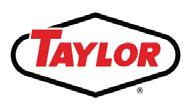
YOU CAN DEPEND ON BIG RED!
3690 N Church Avenue
Louisville, MS 39339 USA
+1 662 773 3421
www.taylorbigred.com
VAHLE PORT TECHNOLOGY
VAHLE is the leading specialist for mobile power and data transmission VAHLE provides the solutions to reduce the carbon footprint while increasing the productivity. RTGC electrification including positioning and data transmission making RTGC ready for Automation.
Westicker Str. 52, 59174 Kamen, Germany
Email: port-technology@vahle.de Web: www.vahle.com
13
SAMSON Materials Handling Ltd specialises in the design and manufacture of mobile bulk materials handling equipment for surface installation across multiple industrial segments. Designed for rapid onsite set-up and continuous high performance SAMSON equipment provides an excellent return on investment.
SAMSON Materials Handling Ltd specialises in the design and manufacture of mobile bulk materials handling equipment for surface installation across multiple industrial segments. Designed for rapid onsite set-up and continuous high performance SAMSON equipment provides an excellent return on investment.
Gemini House Cambridgeshire Business Park,
Gemini House Cambridgeshire Business Park,
LASE Industrielle
Lasertechnik GmbH

LASE offers innovative and productive solutions for ports by combining state-of-the-art laser scanner devices and sophisticated software applications. We are specialised in the fully automated handling of containers, cranes or trucks.
Heavy duty rol e-chain® P4HD.56R
P4.1 e-chain®
The new heavy-duty rol e-chain meets all the relevant requirements for container cranes of the next and next-but-one generations. Longer and longer travels, greater dynamics, short stress cycles, zero failures.
15 TO JUNE 2023 Southampton United Kingdom
Energy chain with optional intelligent wear monitoring for double the service life, travels of up to 1.000 m, speeds of up to 10 m/s and fill weights of up to 50 kg/m.
igus® GmbH Spicher Str. 1a

D-51147 Köln, Germany Tel. +49-2203-9649-0 info@igus.eu igus.eu/P4.1
igus® GmbH Spicher Str. 1a, 51147 Köln, Germany Tel. +49-2203-9649-0 info@igus.eu igus.eu/P4.1
As one of the leading manufacturers of quick connector systems,Stäubli covers connection needs for all types of fluids, gases and electrical power.
Tel: +33 4 50 65 61 97 connectors.sales@staubli.com www.staubli.com/en-de/ connectors/

For more information visit: seawork.com contact: +44 1329 825335 or email: info@seawork.com
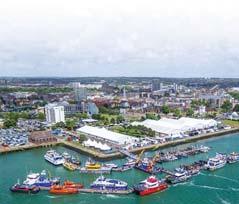
ShibataFenderTeam Group
SFT is the leading fender manufacturer with +60 years of group experience in the design of safety critical fender system that protect vessels, port infrastructure and people.

We offer the full range of customized fender solutions and maintain production facilities for high-quality rubber products, steel panels and foam fenders. Join the safe side. contact@sft.group www.sft.group
Rohde Nielsen A/S
Specialising in capital and maintenance dredging, land reclamation, coast protection, Port Development, Filling of Caissons, Sand and Gravel, Offshore trenching and backfilling
Nyhavn 20
Copenhagen K.
1 Bartholomew’s Walk, Ely
1 Bartholomew’s Walk, Ely Cambridgeshire CB7 4EA
Rudolf-Diesel-Str 111
DK-1051
Fogmaker develops, manufactures, and markets fire suppression systems for engine compartments with high pressure water mist. Fogmaker is a market leader for automated fire suppression systems with 200,000 installations in more than 50 countries since 1995.

England, United Kingdom (UK)
Cambridgeshire CB7 4EA
D-46485 Wesel, Germany
Tel: +44 1353 665001
England, United Kingdom (UK)
Fax: +44 1353 666734
Tel: +44 1353 665001
sales@samson-mh.com
sales@samson-mh.com
www.samson-mh.com
www.samson-mh.com
Tel: +49 (0) 281 - 9 59 90 - 0 info@lase.de www.lase.de
Denmark +45 33 91 25 07 mail@rohde-nielsen.dk www.rohde-nielsen.dk
Tel: +46 470 77 22 00 info@fogmaker.com www.fogmaker.com
PRODUCTS & SERVICES DIRECTORY
B ULK HANDLING C OMPONENTS D REDGING
Beumer Direc 2021 11:29 B ULK HANDLING
C ARGO HANDLING
C ARGO HANDLING EQUIPMENT
SYSTEMS
#WeHaveTonnesToTellYouAbout Telestack Directory June 2021 indd 1 26/05/2021 12:20 E
LECTRIFICATION SOLUTIONS
A UTOMATION
TECHNOLOGY
Staubli Directory Mar 2021 indd 1 25/02/2021 15:49 C ONNECTION SOLUTIONS
For the latest news and analysis go to www.portstrategy.com JUNE 2023 | 63
Fogmaker Directory indd 1 01/02/2021 13:12 F IRE SUPPRESSION SYSTEMS F ENDER SOLUTIONS
MRS Greifer GmbH


Grabs of MRS Greifer are in use all over the world. They are working reliably and extremely solid. All our grabs will be made customized. Besides the production of rope operated mechanical grabs, motor grabs and hydraulic grabs we supply an excellent after sales service.
Talweg 15-17, Helmstadt-Bargen 74921, Germany
Tel: +49 (0)7263 - 91 29 0
Fax: +49 (0)7263 - 91 29 12 info@mrs-greifer.de www.mrs-greifer.de
Orts GMBH Maschinenfabrik
Over 40 years experience constructing and manufacturing a wide range of grabs, including electro-hydraulic grabs (with the necessary crane equipment) radio controlled diesel hydraulic grabs, 4, 2 and single rope grabs all suitable for bulk cargo.
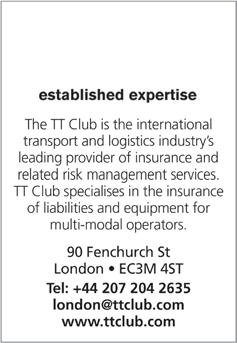
Schwartauer Str. 99
D-23611 Sereetz • Germany
Tel:+49 451 398 850
Fax: +49 451 392 374 soj@orts-gmbh.de www.orts-grabs.de

13
15 TO JUNE 2023 Southampton United Kingdom
For more information visit: seawork.com contact: +44 1329 825335 or email: info@seawork.com



Künz GmbH
Founded in 1932, Künz is now the market leader in intermodal rail-mounted gantry cranes in Europe and North America, offering innovative and efficient solutions for container handling in intermodal operation and automated stacking cranes for port and railyard operations.

Gerbestr. 15, 6971 Hard, Austria
T: +43 5574 6883 0 sales@kuenz.com www.kuenz.com
SANY Europe GmbH

offers a broad spectrum of high-performance mobile port machines such as Reach Stacker, Empty Container Handler, Heavy Duty Forklift Trucks and Material Handler
Conductix-Wampfler
Sany Allee 1
Sany Allee 1
D-50181 Bedburg
50181 Bedburg, Germany
Tel: +49 2272 90531 100
Tel: +49 2272 90531 100
Email: info@sanyeurope.com
Email: info@sanyeurope.com
www.sanyeurope.com
www.sanyeurope.com
Sany ID indd 1 25/01/2022 11:42
VISYOy
Visy systems reduce expenses, optimize safety & security, and increase throughput capacity via process automation. Our singleplatform gate operating system and OCR solutions manage all cargo, assets & personnel movements via quay, rail or road to keep operations moving.
VISY takes pride in solving operational problems, specialising in gate automation and access control solutions in ports and terminals. Their solutions streamline processes resulting in saving money and increasing productivity. Tel
The world specialist in Power and Data Transfer Systems, Mobile Electrification, and Crane Electrification Solutions. We Keep Your Vital Business Moving!
Rheinstrasse 27 + 33
Weil am Rhein 79576 Germany
Tel: +49 (0) 7621 662 0
Fax: +49 (0) 7621 662 144 info.de@conductix.com
www.conductix.com

To advertise in the Port Strategy Directory
Contact Arrate Landera +44 1329 825335 www.portstrategy.com
IDENTEC SOLUTIONS

is an industry-leading, trusted partner in managing and monitoring reefer containers and optimizing entire terminal operations through solutions like Reefer Runner and Terminal Tracker.
Contact: Stephan Piworus, Global VP Sales Marine & Ports, spiworus@identecsolutions.com; Mobile: +49 151 74122606 www.identecsolutions.com
The world leading manufacturer of Sideloaders, self-loading semi-trailers for versatile & efficient container handling.
www.hammarlift.com info@hammarlift.com
TVH is a global player in the field of spare parts and accessories for heavy forklifts, reach stackers, container handlers, spreaders and terminal tractors. With over 96,000 references in stock and more than 644,000 known references, TVH offers quality replacement parts for many brands and makes, including the hard-to-find ones.
Tel: +44 2476 585 000 sales.team.uk@tvh.com www.tvh.com

PRODUCTS & SERVICES DIRECTORY 64 | JUNE 2023For the latest news and analysis go to www.portstrategy.com
H ANDLING EQUIPMENT I NSURANCE P ORT AUTOMATION S IDELIFTER/SIDELOADER TT Club Directory March 2021 indd 1 01/03/2021 14:40 I TPORT
AUTOMATION
: +358 3 211 0403 Email: sales@visy.fi Web: www visy fi/
P OWER TRANSMISSION
R EFRIGERATED TRANSPORT S PARE PARTS
For more information visit: seawork.com contact: +44 1329 825335 or email: info@seawork.com 13 15 TO JUNE 2023 Southampton United Kingdom To advertise in the Port Strategy Directory Contact Arrate Landera +44 1329 825335 www.portstrategy.com For more information visit: seawork.com contact: +44 1329 825335 or email: info@seawork.com 13 15 TO JUNE 2023 Southampton United Kingdom Reefer Monitoring Solutions Visit us at: rte-usa.com New York | Panama
G RABS
ELME Spreader AB
ELME Spreader, world’s leading independent spreader manufacturer supports companies worldwide with container handling solutions that makes work easier and more profitable. Over 21,000 spreaders have been attached to lift trucks, reach stackers, straddle carriers and cranes.

Stalgatan 6 , PO Box 174 SE 343 22, Almhult, Sweden
Tel: +46 47655800
Fax: +46 476 55899
sales@elme.com www.elme.com
The Brain of Logistics
With more than 30 years experience in IT Solutions and Business Operation Consultancy DSP offers a large portfolio of professional services and products to support terminal operations processes and system.
DSP Data and System Planning SA
Via Cantonale 38 6928 Manno, Switzerland
Tel: +41 91 230 27 20
Fax: +41 91 230 27 31 info@dspservices.ch www.dspservices.ch

Solvo Europe B.V.
Solvo’s software solutions such as TOS or WMS help container and general cargo terminals take full care of their cargo handling processes and make sure the clients expectations are exceeded.


Prinses Margrietplantsoen 33, 2595AM, The Hague, The Netherlands
Tel: +31 (0) 702-051-709
Email: sales@solvosys.com www.sovosys.com
13
15 TO JUNE 2023 Southampton United Kingdom
For more information visit: seawork.com contact: +44 1329 825335 or email: info@seawork.com

Tideworks Technology provides comprehensive terminal operating system solutions for marine and intermodal terminal operations worldwide. Tideworks works at every step of terminal operations to maximize productivity and customer service.


info@tideworks.com
+1 206 382 4470 www.tideworks.com
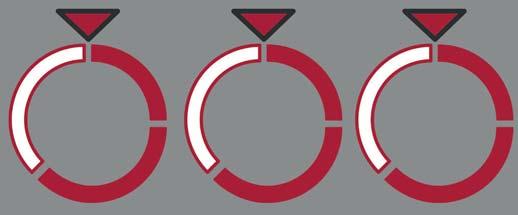
TGI Maritime Software is a Terminal Operating System editor and integrator specialized in the support of Small to Medium Terminals. Its expertise is built on 34 years of experience within the maritime sector. TGI provides comprehensive services to its customers all along their projects. OSCAR TOS and CARROL TOS have already been successfully handled by 40 container and RoRo terminals worldwide.
Tel : +33 (0)3 28 65 81 91 contact@tgims.com www.tgims.com
STRATEGY
MAFI Transport-Systeme GmbH
Specialised in the development and production of heavy-duty equipment for transporting containers, semi-trailers, cargo/roll trailers and special container chassis in ports and industry.
Hochhäuser Str 18 97941 Tauberbischofsheim, Germany
Tel: +49 9341 8990 sales@mafi.de www.mafi.de
Brunton Shaw UK is a successful manufacturer of high quality wire ropes for a wide range of applications. The company effectively combines more than 130 years of experience and tradition with an up to the minute range of products, and a customer service package ideal for the modern market place.
Tel: +44 1909 537626
Email: info@brunton-shaw.co.uk
www.brunton-shaw.com
PRODUCTS & SERVICES DIRECTORY
T ERMINAL OPERATIONS SYSTEMS
S
T ERMINAL
PREADERS
OPERATIONS SYSTEMS
T
RACTORS
T
ERMINAL OPERATIONS SYSTEMS
w
INSIGHT FOR PORT EXECUTIVES Promote your business to the right audience in the right place at the right time. Engage with our international audience of decision makers and buyers. The Port Strategy multi-media platforms Arrate Landera, Brand Manager t: (+44) 1329 825 335 e: sales@portstrategy.com www.portstrategy.com Contact us today MAGAZINE RECIPIENTS DECISION MAKERS PAGEVIEWS PER MONTH 17,80072%36,240 Reach industry professionals with Port Strategy
IRE ROPES PORT
The versatile box strikes again! With the costs associated with shipment by car carrier rising steeply, vehicle producer Renault has opened the door on container usage instead – three cars in a 40ft box. Will we see other vehicle producers reviewing their transport options?
POSTSCRIPT
SHAPE OF THINGS TO COME?
French automotive giant, Renault, has commenced shipping brand new cars in containers to avoid the current high costs associated with the usual method of moving vehicles, using car carriers.
Renault Korea Motors has stated that it is moving its compact SUV XM3 Arkanas model from its Busan plant in South Korea by using 40ft containers. The vehicle manufacturer says that it is planning to ship between 1500 and 1700 units to Le Havre on a monthly basis, with plans to also ship new cars in containers to other destinations including the US, Belgium, Italy, Mexico and Australia.
Through an ability to tilt the middle vehicle upwards, it is possible to squeeze three of these vehicles into a 40ft container, instead of the more traditional process of just two cars per box.
According to Clarksons Research, a one-year time charter rate for a 6500 CEU car carrier is currently at US$105,000 per day (double the previous high seen in Q2 2008), with fixtures regularly being signed for what it terms as “multiple years.” The company also states that the car trade is expected to grow by eight per cent this year, to 20.3 million cars, emphasising that the industry is back to pre-COVID-19 levels.
As such, it is no surprise that the results of car carriers have been setting records over the past 15 months, just as container operators are seeing a slide in the opposite direction.
So, with a strong container ship orderbook bringing capacity to fill, are Renault stealing a march on many rivals by utilising containers for new car shipments? Quite possibly, but there is one big issue.
In mid-2022, Japan’s Mitsui OSK Lines (MOL) joined a growing list of car carrier shipping lines refusing to transport second-hand battery-powered cars. The news followed MOL’s 6,400 CEU vessel, Felicity Ace, catching fire and sinking – resulting in a subsequent cost according to law firm, Vinson & Elkins, in the region of $500m.
Crucially, this was (at the time) the fourth largescale
car carrier blaze involving electric vehicles since 2019. While an electric vehicle might not always start a fire, they do act as a significant accelerant because lithium-ion batteries which catch fire can reach temperatures of more than 2700 degrees Celsius.

Indeed, aware of the rising risks from electric vehicle fires, the International Maritime Organization (IMO) has already said that firefighting equipment and measures in existing ships carrying cars needed to be reassessed.
Yet it is not just the shipment of new cars that gets pulled into the conversation. In February 2023, Norwegian shipping company Havila Kystruten confirmed it will no longer allow electric cars on board its ships. The company says that the “consequences of an electric car fire are considered too severe” for its Hurtigruten coastal route between Bergen and Kirkenes (operated in conjunction by the two shipping companies Hurtigruten and Havila).
MORE TO FOLLOW
The decision from Renault is likely to be followed by other vehicle manufacturers and it will be appealing news to container shipping lines needing to fill new tonnage coming on stream. The move also takes the pressure off the car carriers too, although they will be watching carefully in case it becomes a more serious issue involving loss of cargo.
Yet despite this potential new trend, it remains to be seen whether the electric vehicles are welcomed as warmly as the traditional cars from the same manufacturers. It seems unlikely and once again brings into focus the process that sees the enormous financial costs associated with electric vehicle manufacturing, not to mention the base raw materials needing to be mined to support the production of the batteries powering these cars.
8 Renault is shipping cars in containers, but the future for electric cars utilising boxes remains to be seen
‘‘
66 | JUNE 2023 For the latest news and analysis go to www.portstrategy.com










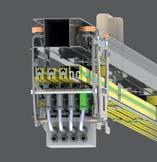

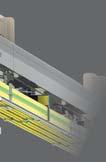

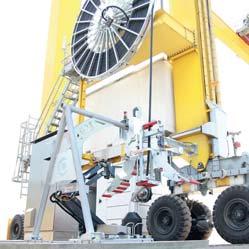

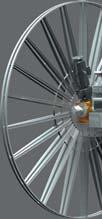


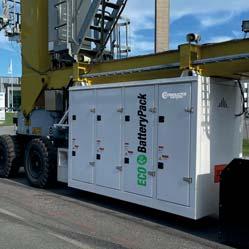



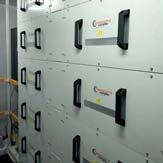


Visit us! Stand B44 & H40 We add the “E” to your RTG Electrification of Rubber Tyred Gantries Converting a conventional RTG into an electrical one (E-RTG) means to shut down the diesel generator and to power the RTG with electrical power only – the emission saving, sustainable basis for automation. This is possible with electric power solutions, including E-RTG auto-steering and positioning systems, developed by Conductix-Wampfler: Plug-In Solution, Drive-In Solution, Hybrid Solution, Full-Battery Solution and Motor Driven Cable Reel Solution with CAP - Cable Auto Plug-In. We move your business! www.conductix.com E-RTG with Drive-In L Solution and ProfiDAT® E-RTG with Motor Driven Cable Reel Solution and CAP - Cable Auto Plug-In E-RTG with ECO BatteryPack Hybrid Solution


















































































































































































































































































































































































































































































































 Paul Holloway Event Director, TOC Worldwide.
Paul Holloway Event Director, TOC Worldwide.






















































































































